-
Posts
2733 -
Joined
-
Last visited
-
Days Won
355
Content Type
Profiles
Forums
Articles
Posts posted by Stephen
-
-
NEWS! - Air Hauler 2 by Just Flight updated to v3.0.0.13
Aircraft Simulators are great, great for flying, and also great to experience travel to all parts of the globe. But like in life, if you don't have a purpose or focus, then it can in time then slowly become boring. This where a clever tool in Air Hauler comes in.
Air Hauler puts you in complete control of your own freight and passenger company - you take charge of operations both in the boardroom and in the cockpit. You can also 'go global' and create your own Virtual Airline and recruit other AH2 pilots to fly for you with attractive payouts, or you can join another pilot’s booming airline and fly for that alongside your own company. In other words your flying online with a the purpose of putting you own aircraft to work.
As the pilot charged with delivering the goods or passengers on time, you can decide to fly a job in multiple legs or stop anywhere enroute for refuelling or maintenance. Create your regular passenger routes and look out for special humanitarian missions. Contend with real-world weather conditions if you want the extra challenge and keep a watchful eye on your fuel economy. The level of complexity is also up to you - simply fly jobs between bases and buy or lease aircraft, or carve out a career in the air freight or airline industry by hiring AI pilots and risking everything on loans to fill up your dream hangar. Its fun, and gives you a focus for your everyday flying.
The first version of Air Hauler was released June 9th 2020. This is the latest update, or updates as there are two releases with the same v3.0.0.13 on the same day. Obviously the most important aspect of the v3.0.0.13 release is that it is now for X-Plane 12, and Air Hauler is for Windows only.
v3.0.0.13 (March 30th 2022)
- Now supports XP12 (minimum version 11.50+)
- Fixed issue with UTC time conversion when pushing job to VA
- Added Pilot & NPC character portraits
- Added NPC reputation to available mission description
- Supply missions - removed the From ICAO as it was confusing people, it is now left blank
- When asked to clear the Pilot log, answering No will now leave it as is
- Pax config aircraft have a reduction of 30% cargo capacity (to reflect seats etc)
- Resolved issue which would result in all commodity markets closure if airport missing
- Export button added to AI Pilot flight log toolbar
- Fixed issue preventing mission generation
- Prevented AH2 updating the Aircraft import list after importing an aircraft before closing the window
- Added pilot/fleet map filter options in Accepted Missions window
v3.0.0.13 (March 30th 2022)- Fixed issue whereby the cargo loading screen buttons would not be visible- Fixed issue whereby the "Take out new loan" button would not be visibleAIR HAULER 2 FEATURES
Cargo jobs – a wide variety of job types, from flying high-tech electronic equipment to potatoes and fruit, with differing rates of pay, from hundreds to hundreds of thousands!
Passenger operations – fly single passenger jobs between any airport you choose, or set up a schedule and routes for your airline to fly. You can let your AI pilots fly these routes or you can fly any of them at any time.
Missions - take missions from new contacts you meet as you travel to new airports and destinations.
Virtual Airlines – create your own Virtual Airline and recruit other AH2 pilots from around the world to fly passenger and cargo jobs! Advertise your airline on the Air Hauler 2 Hiring Bulletin Board. Accept and fly jobs from the Global Job Board and compete with other airlines for the best hauls.
Humanitarian missions - respond to real-world disasters by manufacturing and delivering relief supplies to local airports.
AI pilot skills tree system – AI pilots can be ‘trained’ in over 18 different skills which bring benefits to your company. As the AI pilots improve, they ‘level up’ in rank which gives them more skill points to spend. There is a skill tree which has five different tracks with individual skills in each and these can be unlocked by spending points. So, for example, an AI pilot who has five points in ‘Bungee Warrior’ will be subject to less in-flight cargo damage as a result of rough handling than one who has less (or no) points in that skill. Other examples are ‘Rocketman’, which provides a more efficient cruise (lower fuel costs), and ‘Short Stripper’ which lowers the runway landing requirements for AI pilots.
Take missions from clients at airports – supply them with rare commodities or perform photo recon flights or private charter flights.
Commodity trading – buy and sell commodities rather than just move them for clients. Make your own fortune trading between airports!
Upgrade your bases – upgrade them with fuel depots and commodity storage facilities, allowing you to hedge fuel prices and store commodities long term.
Factories and production – build factories at your bases and use them to produce desirable commodities which can’t be bought on the open market.
Find aircraft parts from vendors – find these at larger airports and use them to repair your fleet or build new aircraft yourself rather than buying them!
Type rating system – get qualified on aircraft before you or your AI pilots can fly them.
Buy and fly aircraft in your personal fleet – you can also transfer money from your company into your own personal account.
Buy new aircraft direct from the manufacturer, or buy second hand – have the aircraft shipped to you or go and collect them yourself and fly them home.
Map views with great circle routes – several map tile choices are available. Air Hauler 2 is availiable from the X-Plane.OrgStore
Air Hauler 2 is availiable from the X-Plane.OrgStore________________________________ The Air Hauler 2 by Just Flight is NOW available here at the X-Plane.OrgStore
Price is US$49.49
This product is now both X-Plane12 and X-Plane 11 supported
Requirements
X-Plane 12 or X-Plane 11
Windows only
Download Size : 282 MBCurrent version: v3.0.1.0 (August 4th 2023)___________________________
News by Stephen Dutton
9th August 2023
Copyright©2023: X-Plane Reviews
(Disclaimer. All images and text in this review are the work and property of X-PlaneReviews, no sharing or copy of the content is allowed without consent from the author as per copyright conditions) All Rights Reserved
-
NEWS! - Updated to v2... AKD Studio Gulfstream 550 v2 - The Ultimate Business Jet
Here is a full version update to the Gulfstream 550 to version v2 by AKD Studios. A significant overhaul of the aircraft covers; a completely overhauled external model, a new custom MCDU (Multi-Function Control and Display Unit), improved textures and a Mango Studios revised sound FMOD package... all of the above are also available in both X-Plane 11 and X-Plane 12 versions.
- Completely overhauled model
- Added Custom MCDU(XP12/XP11)
- Added Custom VNAV with custom RNAV approaches(XP12/XP11)
- Added new FMOD sounds(by:Mango Studios)(XP12/XP11)
- Added improved textures(XP12/XP11)
- Added some improvements in 3D Models(XP12/XP11)
- Added some system improvements(XP12/XP11)
- Added NEW Checklist Display Controller page(XP12/XP11)
- Tuned flight model, autopilot(XP12/XP11)
A later update v2.02 covered a bug and fix updated these items, when they were also covered...
-Fixed DU1 FULL indicator(XP11)-Fixed Autopilot APP mode when using XPlane FMS (XP12/XP11)-Fixed SASL crash when entering data on certain MCDU pages(XP12/XP11)-Fixed SASL crash when deleting things on certain MCDU pages(XP12/XP11)-Fixed SASL crash while typing some airways to flight plan(XP12/XP11)-Fixed several airways were not available(XP12/XP11)-Fixed: When you try press next in the star sel page you can't go back in the prev page(XP12/XP11)-Improved performance when using VNAV(XP12/XP11)-Fixed: When I try to load a STAR, it always says no transition and skips many fixes on the arrival(XP12/XP11)-Fixed Minor bugs(XP12/XP11)The Gulfstream G550 is a business jet aircraft produced by General Dynamics' Gulfstream Aerospace unit in Savannah, Georgia, US. The certification designation is GV-SP. A version with reduced fuel capacity was marketed as the G500. Gulfstream ceased production of the G550 in July 2021.
The G550 (GV-SP) with improved engines received its FAA type certificate on August 14, 2003. In 2014, Gulfstream looked at a re-engine with the Rolls-Royce Pearl BR700 development announced in May 2018 for the new Global Express 5500 and 6500 variants but preferred the BR725-powered, 7,500 nmi G650. The 500th Gulfstream G550 aircraft was delivered in May 2015. (wikipedia)
You can update to AKD Studio's G550 v2.02 via your account at the X-Plane.OrgStore, or use the Skunkcraft's Updater application.________________________________ The Gulfstream 550 v2 by AKD Studio is NOW available here at the X-Plane.OrgStore
GLF550 - Ultimate Business Jet by AKD Studio
Price is US$41.95
This aircraft is now both X-Plane12 and X-Plane 11 supported
Requirements
X-Plane 12 or X-Plane 11
Windows, Mac (even native M1, M2 Macs) or Linux4 GB VRAM Minimum - 8 GB+ VRAM RecommendedDownload Size: 920MB
Current version : 2.02 (August 6th 2023)___________________________
News by Stephen Dutton
3rd April 2023
Copyright©2023: X-Plane Reviews
(Disclaimer. All images and text in this review are the work and property of X-PlaneReviews, no sharing or copy of the content is allowed without consent from the author as per copyright conditions) All Rights Reserved
-
NEWS! - Aircraft Update F-22A Raptor by AOA Simulations v12.1.0
On the 22nd May 2022, this note came up in v1.3 for the Angle of Attack F-22A Raptor Fighter "Updates the SASL plugin to the latest version 3.14.5 in preparation for X-Plane 12". Yes the F22 was the very first X-Plane 12 designated aircraft for the forthcoming new version of the X-Plane Simulator that was released later in the year. Here is the follow-up update in v12.1.0.
This update focuses on refining the aircraft in every area for X-Plane 12 and more so, here is the full version list...
- New X-Plane 12 compatible flight model.
- Custom fly-by-wire flight control system.
- New X-Plane 12 engine operating model.
- Redesigned, easier to understand and use communications / navigation / GPS (CNI) display.
- Custom GPS database integrated into the CNI system.
- Redesigned, easier to understand and use cockpit multi-function and autopilot displays.
- All navigation sources integrated into the HUD and MFD map displays.
- New 40 page User Guide, supplements and checklists.
A full X-PlaneReviews release review of the X-Plane 11 version of the Raptor, is here:
Aircraft Review : Lockheed Martin F22A Raptor by AOA Simulations
In the package you get both X-Plane 11 and now also the X-Plane 12 version.
The Lockheed Martin F-22 Raptor is an American single-seat, twin-engine, supersonic all-weather stealth fighter aircraft developed for the United States Air Force (USAF). As a product of the USAF's Advanced Tactical Fighter (ATF) program the aircraft was designed as an air superiority fighter, but also incorporates ground attack, electronic warfare, and signals intelligence capabilities. The prime contractor, Lockheed Martin, built most of the F-22's airframe and weapons systems and conducted final assembly, while Boeing provided the wings, aft fuselage, avionics integration, and training systems.
The aircraft first flew in 1997 and was variously designated F-22 and F/A-22 before it formally entered service in December 2005 as the F-22A. Although the USAF had originally planned to buy a total of 750 ATFs, the program was cut to 187 production aircraft in 2009 due to high costs, a lack of air-to-air missions at the time of production, and the development of the more affordable and versatile F-35.[N 2] The last F-22 was delivered in 2012. (wikipedia).
Designed by Fabrice Kauffmann and David Austin of AOA SimulationsImages are courtesy of AOA SimulationsA full X-PlaneReviews review of the updated XP12 F22A Raptor is coming soon!
_______________________________
Yes! the Lockheed Martin F22A Raptor XP12 by AOA Simulations is NOW available from the X-Plane.Org Store here :
Price is US$40.00
Requirements
X-Plane 12 or X-Plane 11
4 GB VRAM Video Card Minimum - 8 GB+ VRAM RecommendedDownload Size: 413 MBCurrent version: 12 (August 1st 2023)________________
NEWS! - Aircraft Update by Stephen Dutton
8th August 2023
Copyright©2023: X-Plane Reviews
(Disclaimer. All images and text in this preview are the work and property of X-PlaneReviews, no sharing or copy of the content is allowed without consent from the author as per copyright conditions) All rights reserved
-
Behind the Screen : 10th Anniversary! X-Plane Reviews
It started with a small idea... certainly there were good X-Plane Simulator review sites ten years ago, as I had already posted for two of them, X-Plane Aerosoft Reviews, and XSim Reviews run by Chip and Simon. Both soon went away (XSim Reviews with Chip came back a little later for a few months), but suddenly I was not reviewing anything. With both Aerosoft and XSim, I was also not the principle reviewer, so I had no input in how those sites looked, managed or most importantly for their content. It was a hook up with the X-Plane.OrgStore that formed an idea to do a more indepth detailed look at releases and upgrades, updates for the then X-Plane 10 Simulator. That excellent arrangement allowed X-PlaneReviews not only to be born, but in also creating a significant partnership that has lasted a whole decade.
Could I foresee myself still creating reviews in the passing ten years back then, when starting on the 1st August 2013... not really, you just took every day, month, year, as they came, one by one, just did the reviews, looked at all the amazing product that came across my computer screen, and in the same time period, burnt out two graphic cards and three revolution computer system upgrades. Overall though it is the huge amount of experience that I went through, X-Plane is just not about flying aircraft, it is also about the labyrinth software and hardware systems, and in then creating over 3,000 reviews over the last ten years, I can't even start to count the nautical mileage I have covered, I know it is a lot, probably even more than a real airman.
There were brilliant times and times I would be venting my frustration at a computer screen yes, even throwing things, but some of the most amazing experiences are all just down to a brilliant simulation program created by Laminar Research. You learn not only how to fly the huge gamut of aviation aircraft, from balloons, rockets (X-Plane early days), Hangliders, lightweight aircraft General Aviation aircraft, regional airliners all the way up to those long haul machines I love the most. But also the geography of the world we live on, then there is the learning of the complex real world aviation systems and its protocols, and relating everything to the simulator, so much to absorb, but also on how much more we have at our disposal than ten years ago, the real world, is now our online flying world, both are now parallel, so you shark your head at the immense progress over the period.
Obviously X-PlaneReviews has changed enormously in this ten year period. But the basics of the site still remain the same. Look at a product, either aircraft, scenery and plugins or any item connected to the X-Plane Simulator and then tell you about it. You would say "Well you didn't cover everything", and I agree, because only the products or addons we personally saw and tested (meaning in most cases flew) were reported to the users. If I liked it, I wanted you to love it as well. That is my motto, but also to inform, create tutorials, and to get you the user through the hard stuff to understand how to get the very best from the simulator. In that aspect I think the site has exceeded expectations.
That aspect is very important... the angle is that for every product or addon, I put myself into the position of the person spending their hard earned money on a product or addon. The "Value" to "Quality" criteria is the most important aspect, some products are now quite expensive, I call them "Investments", because they are, future investments for you to use in the simulator, how much you get out of the product or Addon, and for how long the product and addons will be serviced with upgrades and more importantly updates for the run of the current X-Plane version.
But nothing of any Simulator would happen without the huge army of creative people that are also invested into X-Plane. From the incredible Developers, the contributors, both payware and freeware that builds our massive X-Plane universe. There are now over a million users registered on the X-Plane.Org alone, when I joined it was 233,000, so over the ten years 800,000 users have come through the Simulator. For a small story of when I joined, thirteen years ago, I was blocked out on my first day... my guilt was downloading too many files on that first day, yes I was enthusiastic, still am thankfully, I call call it "Building my X-Plane World one file at a time", and what a very big world it now is.
Overall it is the people, from all the reviewers that have posted on the site, from Wycliffe Barrett, Joe, BernardoCasa and for the last year the significant contribution from Dominic Smith, Josh, Nick, Michael, Pete, Sean, Stef, Alan, and Stuart, who have all generously contributed a lot of their time, expertise to the site. Obviously the site would not exist or continue to exist without the support and help of Nicolas and the X-Plane.OrgStore... so "Happy Tenth Birthday X-PlaneReviews.... it's been a decade in the making".
Ten years ago we said.... Hello! - Welcome To X-Plane Reviews
Stephen Dutton
1st August 2023Copyright©2023 X-Plane Reviews
-
NEWS! - SimSolutions releases DA20-C1 Eclipse for X-Plane 12
The DA20-C1 is a two seat, single engine aircraft. Using 100 or 100LL fuel and having its first flight in 1991, the DA20 has seen more than 1000 models produced. This is an all new Diamond DA20-C1 Eclipse from SimSolutions, and is X-Plane 12 only.
SimSolutions rendition of the DA20-C1 Eclipse comes with real world experience with high-resolution textures, user friendly systems, and superb modeling inside and out. With custom loading screens on the GNS, to by the books transponder and clock system, a joyride is in the hands of the P.I.C.Features- For X-Plane 12 only
- Fully modeled inside and out
- 4K PBR Textures
- Fully modeled 3D cockpit
- Modeled with real world experience
- Opening of Canopy and Fuel cap
- Custom by the books GTX 327 transponder
- Custom by the books DAVTRON clock system
- Chocks and tie downs
- Guide on how to use aircraft (.pdf)
Liveries- Default (White)
- AY-JET
- MFC Training (C-FVVN)
- MFC Training Old (C-FFQT)
- N161CA
- OH-KAW
- OH-WAY
If you want a larger Diamond DA, then Simsolutions have also released the Diamond DA40NG XP12, a full X-PlaneReviews review is here...
Aircraft Review : Diamond DA40NG XP12 by SimSolutions
Images are courtesy of SimSolutions
________________________________________
The DA20-C1 Eclipse by SimSolutions is now available from the X-Plane.OrgStore!... Here:
DA20-C1 Eclipse Price is US$24.95
Requirements
X-Plane 12 (not for XP11)
Windows, Mac and Linux ((tested on Ubuntu 20.04 LTS)8 GB+ VRAMDownload Size: 476 MBCurrent version: 1.0 (July 23rd 2023)_____________ -
Aircraft Review : Daher Kodiak 100 DGS Series by Thranda Design
The Daher Kodiak 100 is the same aircraft as the earlier Quest Aircraft Company, Kodiak. As for the French aircraft manufacturer Daher bought out the designs and also the production of the Kodiak in 2019 from the Japanese firm Setouchi Holdings. During October of that year, the acquisition of Quest Aircraft was finalised, in so expanding Daher's North American footprint and to merger its sales efforts with the former SOCATA's own TBM turbo aircraft series.
If the Kodiak looks familiar, then go thinking about a Cessna Caravan 200B, then you certainly would have been on the right track. From a distance and even when you get quite close to the Kodiak it does look like a slightly taller chunkier 200B Caravan, and it is powered by the similar engine in the Pratt & Whitney Canada PT6A-34 750 hp were as the Caravan uses the PT6A-140 868 hp (647 kW). It's a utility aircraft, a bit noted as a bit more frumpy than the C208, but also well regarded as an all round capable aircraft. Design of the Kodiak began in 1999, it made its maiden flight on October 16, 2004, and was certified on 31 May 2007 before the first delivery in January 2008. By 2021, 300 Kodiaks have been delivered and production is still ongoing.
The Kodiak is special to Thranda Design as well. It was their first aircraft released as a solo developer since moving on from Carenado in 2016. Created by Dan Klaue, the Canadian is very proficient in developing aircraft for X-Plane (Carenado had a fleet of 55 aircraft at the end) and was known mostly for his Embraer ERJ 140 Regional Jet now a decade ago. You don't have to acclaim the work of Daniel Klaue, as his talent is spread all over the X-Plane Simulator for ideas and forward looking features. Thranda Design pushes that aspect to the limit as with on the early Kodiak, it came first with the "Dynamic Generation Series" DGS, which takes full advantage of X-Plane's flexibility for in-sim, real-time modifications to a currently loaded plane. That DGS and other outstanding features will be seen below.
This is an all new aircraft for X-Plane 12. Notable the Quest moniker will stay on the earlier X-Plane 11 aircraft, and this new aircraft will be branded the "Daher" Kodiak, and the Daher aircraft will only be available for X-Plane 12 as the with the latest features, 8K textures are also not transferable.
As noted, The Kodiak comes with 8K textures, a huge pixel area 7680 x 4320. Just because it is 8K doesn't mean that you need a 8Gb Graphic Card to run them. 4 Gb VRAM is still recommended as Minimum. And 8 Gb+ VRAM is however recommended as normal. But like with the earlier Thranda releases, they had more than one 4K texture size, sometimes two 4K textures to fill in the same 8K area. So in reality you are only using the 8K to fill the same gap of the two 4K set of textures before. So Graphic Card size is not the issue, if you can run your current Thranda aircraft with your current graphic card size, then the Kodiak will be exactly the same, in fact even a bit more efficient in that it only has to load in the one texture sheet, rather than the old 2(K)or 4(K) texture sheets.
As for all this release year's aircraft. X-Plane 12 creates a very different feel and look in the Simulator, a 3d look, or another level of realism. The Quest Kodiak was already very good in detail, but here it just jumps out at you in it's superb quality. Obviously more detailed and now better processed with those massive 8k textures, you feel just this aircraft, and it is very much alive on your screen.
Don't call me "frumpy", it does look a bit that way with the cargo pod attached, more Caravan without it... just with a more fuller heavier tail section.
There are also two other variants as part of the package.... a Cargo version, and an Amphibian seaplane (the Amphibian can also be set in both passenger and cargo configurations), but there is no "Float" variant, only the landwheels.
Although it looks the same outwardly, the X-Plane 12 version is actually quite different in it's design, there is a new 3D mesh throughout, based on actual CAD model of the real plane for modeling perfection, with high quality textures with over over 1000 pix/m detail. And it shows...
Not only do you get the panels and rivets, but the indentations of the rivets as well in the metal, even skin ripples in the aluminium, everything shows off the absolute realism presented here. Door (external) hinges, vents and fairings are all as on the real aircraft, and their are the vortex generators all over the aircraft, main wings and even on the horizontal stabiliser.
Obviously it's all hard to fault anything as it is all so good, certainly a large step up from the X-Plane 11 modeling and quality. The original aircraft was quite glossy, but here we are X-Plane 12 glossy, glossy, as that has become the normal.
As previously noted, there the discontinuous leading edge (also known as a leading edge cuff) on the outboard parts of the wing, it is there to improve the stall and spin characteristics of the aircraft. It is that at high angles of attack the cuff discontinuity generates a vortex that acts as a fence, preventing the separated flow from progressing outboard. The lift slope has a flatter top and the stall angle is delayed to a higher angle. To reach high angles of attack, the outboard airfoil has to be drooped, some experiments investigating "exaggerated" drooped leading edges. The physical reason for the cuff effect is not actually clearly explained. Here that effect is extremely well done...
Wingtip light fittings (Landing) and navigation/strobe are perfectly done in detail. Flap tracks are well modeled with internal springs highly visible, Flaps are 0º-10º-20º-35º, notable that the Kodiak is a STOL (Short Takeoff and Landing) aircraft, for rough runways.
Window reflections come with realistic scratches and imperfections, but it's not over done, or could be noted as "just a few, here and there", There is however a very nice green tint on all the windows (there is the option to hide, or lighten the window reflections), but the tinting gives the aircraft a nice quality look.
Standout detail is the fully modeled Pratt & Whitney Canada PT6A-34, under the front engine bay cowlings, click to open and admire the overwhelming detail of the powerplant and it's ancillary components.
Overall the detail and detailing is of course totally superb... It's a Thranda of course. Notable is what you pay for. If you pay more you get in that extra detail, the minute intricate detailing, but the Thranda Kodiak is priced only around sub-$35, so the payoff here is that you get all this extreme detailing and modeling, and at a value price.
Internally you have a load of options. First there are two different cabin layouts with "Timberline" and "Executive" decors. Executive is a bright white/cream environment with grey chairs in a Club + 2 seating layout, in the club arena there are also two folding out (animated) work tables.
Timberline is a darker more browny sort of interior fit-out. Here you have eight seats two per row. Seats are now a brown/tan matching a beige wall lining, both interiors feel very, very different in style and taste. But the seating detail is excellent and has great quality materials.
Cargo is an empty rear space, unless to add up a cargo load by the weight, then it get quite full in here... Cargo uses the Timberline decor interior and is 49 inches (1.2 meters) in height and width.
Instrument Panel
At first it feels and looks like the same instrument panel as in the Quest XP11. But it's not, in the closer detail it is different, the layout is almost exactly the same however... as it is a Garmin G1000 Avionics suite in a three screen PFD-MFD-PFD display layout.
Twin Yokes are sublime... they were nice and chunky on the Quest, but here you can almost small the leather and admire the stitching. Electric Trim and PTT are on the left pilot's yoke (PTT on the right yoke), and either or both Yokes can be hidden. "Kodiak" also replaces the earlier "Quest" logo on the front plate is a nice attention to detail.
The panel itself has a very nice mottled effect, that gives it a realism in the metal, ditto the really lovely huge glareshield, also authentic and very feelable.
Under the panel and it is highly detailed, not only with the "Kodiak" branded rudder pedals, but also the rear detail. Note the toe-brake effect.
Central tall tower throttle quadrant, is also very Caravan in design and even look, only difference is the (working/active) Circuit breakers (fuses) in the front.
Coloured Throttle, Propeller and (Fuel) Conditioner levers, are a tight formation, with left an "Emergency Power" lever to get more boost and out also of trouble. Far left is the nice Trim Wheel, far right is the Flap selector. Aileron Trim buttons are set above, and the rudder trim is top left console.
The Kodiak unlike the other Thranda instrument panel layouts, only uses the three display G100 setup, ... so there is no build your own DGS panel option here, there is only this one, so the analog dials are out... Power off and it is still a black hole of and Instrument Panel, just like in the earlier Quest XP11, so switch on the power and only the both PFD (Primary Flight Displays) turn on, turn on the Avionics power and the central MFD (Multi-Functional Display )also then switches on.
All three PFD/MFD pop-out on windows, panels are also moveable and scalable for home builders.
Turning on the third power switch "AUX BUS",(arrowed) will turn on the AC (Airconditioning) Systems panel, that has a pop-up window.
There are also two other selectable features on the G1000 system that are in the Menu. First is the switch between having the S-TEC Fifty Five X Autopilot on the facia, or to use the G1000 Bezel autopilot controls. The S-Tec also pops-out for ease of use.
The second feature is the selectable standard blue/brown Artificial Horizon, or the "Synthetic Vision" mode. Honestly I'm not overly impressed by the current Synthetic vision screen, so will keep to the standard Horizon format,
Lower panel left is the power (rocker) and starter switches, lighting switches and Ice protection. Two Hobbs meters covers flight and engine running times. Oxygen capacity indicator is clever and to the right panel there is a small AC display that covers Cabin Temp, and fan controls that all work and if you increase the fan speed you should be able to hear the fan noise in the background...
Left vertical are the three analog backup instruments, Airspeed, Artificial Horizon and Altitude. The great original feature of moving eye air vents on the panel and on the roof, are still the same in here, as you can not only can you move the direction of the vent, but the internal airflow cover as well. There are four vents on the panel and the two vents overhead.
Garmin G1000
Avionics is the standard Laminar Research G1000 PFD (Primary Flight Display), and MFD (Multi-Functional Display) with the radio controls set between the displays, nothing to learn here if you have used the default avionics before. The installation though is very nice and feels high quality. Original Quest Kodiak had a Carenado adaption G1000 back in 2016, but it's now all or only the updated Laminar version.
PFD (Primary Flight Display) is very good with the large Artificial Horizon dominating the screen with the Speed and Altitude (with built in Vertical Speed) tapes either side, Rate of turn and FD (Flight Director) are all present. Lower is the Heading rose with built in Heading, Wind (3 options), CRS (Course) DME, NAV 1, NAV 2 and OBS. There is the option to put a small map on the PFD but I never do (it makes the display too crowded). All Radio, Autopilot (AP) settings and data are across the top banner of the panel. Note the inbuilt warnings panel centre right.
The secondary display is MFD or MAP/Navigation panel which covers also all the (EIS) engine outputs which are in two versions with one visual and one in data.
The colourful engine readouts covered are on page one; Top three segments cover both pages, with; TRQ (Torque), ITT, NP RPM, NG Readouts... Fuel Flow (Gallons Per Hour), RPM, Oil Pressure, Oil Temp, Amps, Volts, Fuel quantity for both tanks (320 gal). Lower are the Flaps and both Trims (positions).
"System" switch (data) covers the same TRQ, ITT and NP, NG top, "Fuel" page (data) covers Fuel Calculations in FFLOW GPH (Gallons Per Hour), Fuel Pressure PSI, Fuel quantity (L/R)... Fuel Totalizer LB REM (Remain), LB USED... (Electrical) Volts and Amps, Gen A, Alt A, Bus 1v and Bus 2v. Lower screen (menu) are DEC Fuel, INC Fuel and RST Fuel options.
Overhead on the roof are the two master Fuel valves, one for each wing tank, and an overhead lighting panel, and nice animated moveable shades.
_________________
Lighting
The lighting system on the Kodiak is really in two areas... one for the panel and two for the spot overhead lighting.
The panel has two knobs with three adjustments. Outer right knob is the Switches panel (highlights) itself, but there is a mostly hidden inner knob that lights the LED lights under the glareshield and this is the one you use the most. The second left knob is the Instrument lights (inner) and glareshield LED lights (outer). The downcasting LED's feel far more dim than I remember, they were quite a lot brighter on the Quest XP11 version?
There are two spots overhead and they are fully adjustable to put the spots right where you want them. There are eight spot lights in the rear for each seat that are again fully adjustable, and two overhead lights from a double way switch on the lighting panel... all interior lighting can be turned on or off via one switch in the General menu, you can switch off/on the external lighting the same way.
Externally each outer wing has a taxi and landing light, a beacon strobe on the roof, navigation lights and strobes on the wingtips. However the beacon and the rear white navigation light also feels a bit weak.
_________________
Menu
Thranda's Menus are very feature rich and highly detailed. There is a popout TAB under the arrow, that can be (mouse) scrolled to hide it, that is if you don't like these sort of items crowding your screen (I don't). The Menu system includes the "Dynamic Generation Series" or DGS, a Thranda speciality feature that takes full advantage of X-Plane's flexibility for in-sim, real-time modifications.
As noted the "Menu" Tab (arrow) is far left middle of your screen, this will activate the Pop-Out Menu... The Menu has seven menu tabs in; GENERAL, LIVERY, WEIGHT/BAL, CAMERA, AUDIO/SLEW and MISC (Miscellaneous). Basically it is the Thranda default menu, but here without the "Panel" Tab.
Menu - General
The menu "General" sections covers quite a lot of options, the layout is highly detailed and very comprehensive.
General menu selections cover; MODE: Realistic or Simplified, Electric Tug, Window and Instrument Panel Reflections on/off, Startup Running on/off (sets aircraft to full running mode), GPU on/off, Chocks and Brakes on/off. Cargo Pod, when selected then shows the bin door option.
Toggles between "Realistic" and "Simplified", and mainly pertains to the engine. In "Realistic" mode, you're much more likely to over-torque or otherwise damage the engine, if you're not flying the plane in such a way as to keep within limits outlined in the POH. If you DO over- torque the engine, the shaft will snap with a horrific sound, and the remaining turbine components will audibly grind against the housing. The engine will catch fire, and the various annunciator lights will go on, and the cabin will fill with smoke?
Three selections placed right cover group items, but any one item can be also accessed via "Click Spots" and can be individually selected or hidden via the aircraft graphic. "ALL COVERS" will select engine inlet/outlet covers and pitot covers, "ALL TIE-DOWNS" for rear fuselage and wing tie-downs and "ALL DOORS" for both the cockpit door and rear cabin split doors. All EXT - External Lights can be switched on and off as can the ALL INT - Internal lights.
The GPU cart (Ground Power Unit) is massive for an aircraft this size, but it is well done. The "Electric Tug" that can be used to move the aircraft around on the ground via your joystick (left,right-forward,backwards). Static Items include Engine Inlet covers, Pitot covers, Tail stand and various Tie-Downs.
There is built in "Checklist" (lower right menu, arrowed), and very good it is. But also again changed back to a simple black on red graphic, with white cross-off line. The Checklist can the moved and scaled anywhere on the screen, but the list can't be reset back again to just the red restart list? and there are 18 separate pages of the list to uncheck?
Menu - Liveries
Second Menu option is "Liveries", there are two options here with the first being "PAINTED LIVERIES". There are altogether 10 liveries or two blank and eight designs, and all are of extremely high quality and creative flare with the package. Note... Only two liveries are delivered in the download package in DYNAMIC LIVERIES and the House Thranda. To access the rest you have to run the supplied "Skunkcrafts" updater, then all the liveries below are loaded into your aircraft liveries folder.
Any livery can be used with both the passenger and cargo variants, but some suit more than others...
Two of the liveries are noted as "DynamicLiveryResources" and "ZZTEMPLATELIVERY", these are the current selected "Dynamic Liveries".
Dynamic Liveries
Not happy with any of those designs, then why not create your own livery!
With their earlier releases of their Kodiak and with the PC-6, PZL-104 and Caravan. Then Thranda introduced a clever feature of a way to design your own livery. This is done by switching from PAINTED LIVERIES to DYNAMIC LIVERIES top.
Two liveries are "Dynamic" in resources (White)... another New feature is the (Quick) selection of Dirt (Ext) Externally, Scratches and Dirt (Int) Internally. Via three percentage selections you can adjust the amount of Dirt, Scratches and Dirt Int on the aircraft (0%-255%) and apply it instantly.So you can have either a pristine or a very grubby aircraft with just a twirl of the numbers. This can be applied to any of the liveries.
You have a menu to select on the right that can colour a certain part of the aircraft, like the Roof, Wing, Tail or Wing tips. Select which one you want and then adjust the three RGB colours for that certain area, and the selected colour (here white) is shown in the square.
When done you can "SAVE" or ADD the livery and then "APPLY" it to the aircraft. The conversion takes a few minutes with some weird screen changes, but the results are excellent and now in your own design...
There are already 30 preselected selections in their various designs, all are very good, and like noted you can add in your own version to the list. New to the Dynamic Livery application is ERA options in "Modern' or "Classic".... of course personal taste is optional...
Menu - Weight/Bal
The Kodiak also has a great Weight and Balance menu.
Lbs and Kgs which can be selected and changed via the toggle... Lbs In Green, and Kgs in Blue.
There is the weight selection of all the seats,in both Timberline and Executive Selections. Missing is the usual Thranda seat removable X option, here you can only select the layout of the cabin and the seat weight.
Fuel can be added and the amounts are then shown and are adjustable as well in the menu (above)... Pilot, passengers and cargo can all be set for individual weights and all are selected via a scrollwheel... and then all of the CofG (Centre of Gravity) parameters are all shown on a graph, go too far or too heavy and the CofG goes red. When done you can Save the Configuration and then later re-load it, or press Load to add in the set weights.
Selecting the Cargo Pod option gives you an extra set of weight zones, add in the weight and you get bags in the pod, same with the rear cargo area, increase the weight and you get bags and boxes.
But obviously there is a compromise? If you want a full passenger and baggage load, then you can't have full fuel tanks, as the excess weight takes you over the weight and the CofG limits as shown on the graph. For eight passengers (with maybe a bag thrown in) then can you have your full tanks and the longer range and not go into the red. You can really pile a lot into the rear cargo/baggage section and all the cargo is of very high quality.
Set the weight in the front seats (pilot and co-pilot), then you get fully animated pilots in the aircraft, they will also disappear if the electrical power is switched off and chocks added.
Menu - Camera
There is a camera feature under the menu "Camera" selection. The left side of the panel is the "Walkaround" views, just pick the dot viewpoint you want to see to rotate around the aircraft. To the right is the default views can be selected via a menu, or press the keypad to select the view. The FoV or "Field of View" is adjustable via a slider.
Menu - Audio/Slew
Sound can be adjusted via the sound menu. There are seven slider selections with: Master, Aircraft External, Aircraft Internal, CoPilot, Radios, Environmental and User Interface. One other sound setting is on the Flap panel... As noted, on the right and left of the panel you get the audio simulation of an active noise canceling headset, which is seen as wearing a headset. Sound quality is beyond excellent as it is a built in audio mixer, so you can individually control the audio channels in real-time and you can adjust the volumes while hearing them play.
Slew mode allows you to manually move the aircraft around in a disconnected X-Plane space. It functions by temporarily overriding the various aerodynamic and physical forces on the X-Plane settings, it is to allow the user to reposition the plane as desired. This feature is however highly touchy and it is used mostly only really with the Amphibian/Floats option in docking the aircraft to say a pier or marina.
Menu - MISC
The Misc (Miscellaneous) page has four panels that cover (Exterior) Fairings, Ski's,Tyres/Tundra, Mud Flaps and Cargo Pod, (Interior) Timberline or Executive layouts, Pilots (swap)... the noted Synthetic Vision and Autopilot S-Tec/G1000 Bezel and Anti-Ice Equipped. The usual DynaFeel feature usually on this tab has been removed.
Shown here are; Fairings and Ski's... Mud Flaps centre, then lower Regular and Tundra tires.
You can also swap around the pilots, in Male/Female, or Female/Male in the drivers seat.
Last option here on the MISC tab is that you can make the Anti-Ice Panel active.
The only menu option change on the Amphibian, is that you can choose the option of having the rear horizonal stabliser winglets visible or not via it's menu selection.
_________________
Flying the Daher Kodiak 100
You sit up high and forward in the Kodiak, almost on a pedestal. The 208B feels almost sportscar like compared to this machine, but the Kodiak is what it is, in being a workhorse, getting people or cargo in and out of remote airstrips. It's a medium sized aircraft, not say big and truck like, or even a small GA or bush plane like, it's sort of in the middle of say a big Utility (say a RAM or Ford F160) purposeful, move stuff!
Roof Fuel valves on... then set the Conditioner lever (far right blue one), to LOW IDLE. Flaps 10º. Trim is done via the large Trim wheel and the TO (take Off) setting is on the lower left of the MFD in the Trims.
Ignition switch ON, then hit the STARTER Switch up... and then the familiar turbine Pratt & Whitney Canada PT6A-34 start whine comes from the front of the aircraft. Love this big and powerful monster of an engine... So open the small window for the full effects of the engine sounds which are simply excellent. And if you are of keen hearing then you should note also the friction sounds on the yoke and throttle lever as you move them, as well as independent sounds for brakes, oxygen hissing and electrical inverter buzzing sounds.
The P&W soon settles down to a slight roar, and your ready to go... I found in the earlier Quest that I couldn't get a lower thrust for taxiing, a leftover issue from Carenado's as they always had a high thrust RPM on the ground that drove me nuts... here if you keep the COND LOW IDLE setting, in then that earlier over thrust issue goes away, yes being in low idle does mean far more throttle to move the Kodiak off the line, but more importantly you now have a much larger and lower thrust range to find the right taxi speed, so yes I really like it.
I adjust the eye air vents to blow fresh air into my face, A small fan on top of the computer screen can give you the same effect! In X-Plane 12 I found that I have far more rudder pedal movement steering while taxiing, its very good here in keeping the Kodiak centred on the line, I only have to revert to the YAW/Tiller movements to the tight 90º turns.
Ready enter KRSW Runway 06...
My weight is set quite heavy at 3028Kgs... so the Kodiak is going to be a little ponderous not only in the takeoff, but the handling in the air.
Entering 06, I put the COND to the HIGH setting, and then you get Upmph as the engine revs upwards... tons more power!.
I go almost to the end of the (flap) white line or 105knts before pulling back on the Yoke and then set a positive climb of around 800 fpm, Rate of climb is around 1,371 ft/min (6.96 m/s), quite high, but everything always depends on your weight.
Bank to the left and the Kodiak feels really, really good, and far better than I remembered earlier? Okay, time for a confession... I wasn't really dazzled by the earlier Quest Kodiak, maybe because I was so in love with the Caravan. It was nice aircraft but didn't really leave a flying impression on my personality, I flew it I remember only once or twice. But this X-Plane 12 version is a very different sort of aircraft than I remember... far more responsive, flows in the turn (banks) better, and even climbs smoother... "My God!" I'm really liking this aircraft a lot this time around.
The better sounds really help... Now there are high-fidelity, multi-track FMOD2 sounds, simulating multiple layers of engine and prop sounds, depending on camera angle, distance, atmospheric conditions, but it is the superb "woo, wooo... roar" as the aircraft climbs hard under the weight. Upping the Flaps to zero, it does give you a little descent bump, but then the speed quickly rises as you power faster forward.
You can still use the Emergency (EMER PWR) lever for more power if you need even more of it, but use it sparingly as it can blow your motor to kingdom come...
.... as a precaution there is a "Overspeed" governor on the left of the panel to regulate the power. The Laminar G1000 Avionics feel far better than the original Carenado fitout. Back then it was the other way around with the very basic Laminar system. So that just shows how much change of the Avionics in X-Plane over the last four years, both screens are now excellent as LAL (116.00) comes on line, as I reach my 5,000 ft cruise height.
I noted in the earlier (Quest) review "The Kodiak is quite sensitive to higher speeds. This is not an aircraft to set the Autopilot and the throttle and then just have a nap, because you will find if it goes a little too fast it will start to pitch and even if the autopilot trim is trying (hard) to compensate for this unseen barrier. So it is the awareness of this speed sensitive area in that it is you that has to find that sweet spot between the best cruise speed and the start of the boundary of the aircraft's aerodynamics."
Humm... not finding that aspect here, I'm cruising nicely at 155 kts and she's all calm and collected, basically in X-Plane 12 it just keeps on smoothly cruising along... with the those very comforting, turn up the sound at the "woo, wooo... roar" in that it gets very memorizing as you sync in with the sound, but lets not get the wrong impression that these sounds are repetitive, because they are absolutely not.
Kodiak's cruise speed is 211 mph (339 km/h, 183 kn) at a light weight of course, and a range of 1,303 mi (2,096 km, 1,132 nmi). The service ceiling is exactly the same as the Caravan at 25,000 ft (7,600 m).
You notice the haze off the exhausts at full power, it sits lower left in the screen, but comforting in the effects mean the engine is running smoothly.
Press the RED button between the PFD and the MFD and the G1000 system goes into safety mode, or "Get Home" mode as the two screens combine both flying instruments and engine performance.
I'm covering 258 nm, almost the length of Florida, USA from KRSW (South West Florida) to Jacksonville JAX, at GATORS I turn 035º to head finally to KJAX, now only 55nm ahead.
28nm out from JAX and I start my descent to 1,500 ft, adjust the power back a little as I go down to keep the speed high, and use a decent of 800 fpm to adjust my flight level, once at a lower height, then up the power a little to compensate and keep the speed current.
Now Jacksonville International is directly ahead, but I am going to circuit to the east, to land on Rwy 26. I now make my turn to the east and parallel fly to Runway 08/26 in the landing circuit. While cruising past JAX, my thoughts go to in what makes a very good simulation?
Importantly first is the totally realistic handing of the aircraft, the way it flies, and the way it feels in your control movements, secondary is that the simulation is clean... meaning that from go (startup) to stop (shutdown) the simulation is perfectly non-distracting from the flying, no bugs and certainly no CTD (Crash to Desktop) freezes. Being a reviewer then the Replay is extremely important to me, the first two here are excellent from Thranda, but with the Kodiak I have had a few replay crashes, but thankfully any replays saved always worked, bugs a couple, but overall I found the Kodiak an extremely solid simulation.
Jacksonville flows past below, then a 90º turn to DALTN in the beams of IPEK (110.3) ILS, I'm not using the ILS to land, but using the beams to line up my approach to RWY 26.
Now in the approach phase and down to a 1,000 ft...
... Flap movements are very clunky, slight lift with every new degree of flap setting used, so you have to get the speed to flap change right, tricky is the aircraft weight pulls you down, creating the opposite in lift, it would be an interesting experiment at a lighter weight on the different effects of the aircraft in this critical approach and landing phase.
You sort of settle down at 81-82 knts, full flap with about a 250 fpm descent rate, the Kodiak feels solid, really nice handling, but you feel the weight under the controls... 75 knts over the threshold
Slight flare and the Kodiak floats? I'm trying to find the best descent window, and not hit the ground hard(ish), but I have found lately that X-Plane has closed this ground effect window to a very tight one, that is being felt in various aircraft, time for this X-Plane area to be refined?
You can set the "Toggle thrust reverse" to give you a "Beta", detent setting that switches on the reverse prop, and the "howl" of the PT6A engine makes as it turns the air in the opposite direction, then in slowing down the aircraft...
Back to the taxiing and into the LOW IDLE (COND) to control the thrust, really liking the change here in the better ground conditions... First time into FS Designs KJAX since my review... honestly it looks far better than I remember, loving it, like really liking this far more better Daher (ex Quest) Kodiak as well, its that everything is better here, but still really brilliant value at only $1 more in price than it's X-Plane 11 release four years ago, but you still get tons more in quality and detail, and even better flying dynamics. Remember also the price covers updates and services for the full X-Plane 12 run.... so what is not to like.
___________________________
Summary
The Quest Kodiak was the first release from Thranda Design back in 2016. It was their first aircraft released as a solo developer since moving on from Carenado in 2016. Created by Dan Klaue, the Canadian is one of the most proficient developers of X-Plane aircraft, not only in design, but for their excellent features and unique ideas like their acclaimed "Dynamic Generation Series" DGS.
Since the release of the original Kodiak, the Quest Aircraft Company was bought by the the French aircraft manufacturer Daher, including the designs and also the production in 2019 from the Japanese firm Setouchi Holdings. So this is an all new aircraft for X-Plane 12. Notable the Quest moniker will stay on the earlier X-Plane 11 aircraft, and this new aircraft will be branded the "Daher" Kodiak, and the Daher aircraft will only be available for X-Plane 12 as the latest features, 8K textures are not transferable.
Three versions are included in the Kodiak package, Passenger, Cargo and separate Amphibian, with three interior designs of "Executive" and "Timberline" decors, plus the empty Cargo arrangement (all can be used on the Amphibian variant), animated pilots can also swap front seats.
Thranda Design are one of the best developers in X-Plane, their history and quality is legendary. So that quality build and detailing is always going to be significant right from the start, and so it is here again in being... exceptional. In every area and detail, modeling, fine details, glass and the interior materials.
Menus are also excellent with menu tabs in; GENERAL, LIVERY, WEIGHT/BAL, CAMERA, AUDIO/SLEW and MISC (Miscellaneous), that covers all the options and including sound, weights and balances also including graphs, walk-around and camera options and general static elements including chocks, tundra tyres, pitot covers, ski's, Mud flaps tie-downs and excellent detailed Pratt & Whitney Canada PT6A-34 engine. Settings include pilot/passenger weights, baggage weight and visually placed bags, cargo in the rear of the aircraft and in the large rear baggage area. A large Cargo Pod with bags by weight is also offered. Notable is that the usual Thranda "Panel" analog DGS option is not used here, but the full Laminar Research Garmin G1000 three display Avionics suite, it's very good and now highly detailed.
Lighting is very good, but I would like a bit more under glaresheil brightness to match the earlier XP11 Quest lighting, otherwise excellent. Sounds are far, far better than the Quest version, really love those powerful PT6A sounds, when climbing and in cruise... Doppler High fidelity, multi-track FMOD2 sounds, simulating multiple layers of engine and prop sounds, depending on camera angle, distance, atmospheric conditions, yes a really big advancement from the earlier acoustics.
Minuses are minimal... lighting externally (taxi/landing) is not good in the daylight (Laminar issue?), aircraft can be dark in overcast conditions, and selecting the replay can cause a nasty CTD (but not in a saved Replay) Note... 8K textures are now used, but have no effect on framerate.
Obviously with a Thranda Aircraft I just can't list every feature, but they are some of of the very best utility aircraft in the X-Plane Simulator today. Being honest I didn't really gel with the earlier Quest XP11 Kodiak, it was very good, make no mistake, but there was something that I didn't quite tune into. But four years can make a difference, more so with the revision in X-Plane 12. In every area, flying dynamics, sound and always in the quality of the aircraft, it has been lifted far, far higher than I remember, so this is a brilliant change for the aircraft, you can say it has refined it up to the same high quality standard as the other X-Plane 12 releases from Thranda Design, that is a big ask from the original, but that overall upgraded feel is in there and well worthy of the upgrade price offered at only a $1 more than the original.
Any Thranda Design aircraft is a worthy addition to your virtual hangar, and the Daher Kodiak 100, is certainly one of the best in value and features... So all you can finally say is that the aircraft comes...
Highly Recommended!
___________________________
The Daher Kodiak 100 - DGS Series XP12 by Thranda Design is now available from the X-Plane.Org Store here:
Daher Kodiak 100 - DGS Series XP12
Price at time of writing US$34.95
Requirements:
X-Plane 12 (not for XP11)Windows, Mac or Linux8 GB+ VRAM RecommendedCurrent version 1.0 (July 20th 2023)This aircraft is a full upgrade to X-Plane 12 only, so there are no upgrade deals for the aircraft from the developer.Installation and documents: download for the Daher Kodiak is 1.57Gb (not including liveries) and the aircraft is deposited in the "General Aviation" X-Plane folder.
Full Installation is 3.86Gb (including downloaded liveries)
Documents supplied is:
- Changelog.txt
- Thranda Daher Kodiak for XP12 Manual.pdf
- Thranda Joystick Settings.pdf
- Thranda Kodiak Quick Reference Guide v2.pdf
- X-Plane G1000 Manual.pdf
There is a huge amount of Documentation provided here, not only for the Thranda Kodiak 100, including performance charts, reference guides, but also X-Plane/hardware settings and custom and default avionics.
All updates are via the built-in Skunkcrafts Updater
Designed by Thranda Design
Support forum for the Daher Kodiak 100
___________________________
Review System Specifications
Windows - 12th Gen IS1700 Core i7 12700K 12 Core 3.60 GHz CPU - 64bit -32 Gb single 1067 Mhz DDR4 2133 - PNY GeForce RTX 3080 10GB XLR8 - Samsung 970 EVO+ 2TB SSD
Software: - Windows 11 Pro - X-Plane 12.05r1 (This is a Release Candidate review).
Plugins: Traffic Global - JustFlight-Traffic (X-Plane.OrgStore) US$52.99 : Global SFD plugin US$30.00 : RK Apps XPRealistic v2 - US$34.99
Scenery or Aircraft
- KRSW - Southwest Florida International Airport by Aerosoft (X-Plane.OrgStore) - US$24.99
- KJAX - Jacksonville International Airport by FSDesigns (X-Plane.OrgStore) - US$19.99 - Full X-PlaneReviews JAX review is here;
Scenery Review - KJAX -Jacksonville International Airport by FS Designs
___________________________
Aircraft Review by Stephen Dutton
25th July 2023
Copyright©2023: X-Plane Reviews
(Disclaimer. All images and text in this review are the work and property of X-PlaneReviews, no sharing or copy of the content is allowed without consent from the author as per copyright conditions) All Rights Reserved
-
NEWS! - Aircraft Release : Daher Kodiak 100 - DGS Series XP12 by Thranda Design
Wasn't that the Quest Kodiak? yes same aircraft, but now produced by the French aircraft manufacturer Daher since 2019. So this is the X-Plane 12 version of the Quest/Daher Kodiak 100. The Quest version stays the same for X-Plane 11 from Thranda, for X-Plane 12 it is basically now a different name, but also only available only for X-Plane 12 because of mostly the different dynamic features and the larger size 8K textures required.
Feature list is of course HUGE!
- X-Plane 12 exclusive
- New Daher Kodiak 100 simulation
- Part of the Dynamic Generation Series
- Ground Proximity Warning System
- Option to swap autopilot between G1000 bezel and S-TEC55
- New 8k highly detailed textures
- Updated and improved 3D model
- Upgraded plugin to SASL 3.16, with full support for new Apple processors
- Uses X-Plane 12's new windshield rain and ice effects
- SkunkCrafts Auto updater
- Includes landplane and amphibian seaplane variants
- Two different interiors and seat configurations: Timberline or Executive
- Superb material realism - inside and outside, using full PBR features
- Dynamic Livery Editor - create your new livery while in the sim! Two presets: classic Quest livery, and newer Daher livery
- Comprehensive menu system with per-passenger Weight and Balance Manager, audio controls, custom slew controls, livery selection, aircraft configuration etc.
- Swappable pilot and copilot figures
- Many options, including wheel fairings, tundra tires, skis, mud flaps
Aircraft visuals- Amazingly deep 3D mesh throughout, based on actual CAD model of the real plane
- High resolution 8k textures and detailed PBR materials
- Dynamic Livery generator - generate dozens of livery varieties within minutes, live, while in-sim
- High quality textures (over 1000 pix/m!)
- PBR dynamic interior window reflections with realistic scratches and imperfections
- Window and instrument reflections that emulate sense of depth
- Numerous covers, tie-downs, chocks, caps - all accessible via menu
- Modelled and functional GPU
- Custom lighting throughout (custom strobe flash pattern, custom halos, custom lighting logic)
- Pulsing landing light option
- Gimballed internal 3D lights throughout, which cast light on the surfaces they point to (HDR mode)
- Lifelike, realistically animated Pilot and Co-pilot figures (Co-pilot figure appears/disappears depending on weight)
- Features a Cargo mode, which covers windows and rearranges the passenger compartment for cargo operations.
- Cargo that appears and disappears, depending on weight set (in Cargo mode)
- Detailed engine model under cowlings that can be opened
- All chrome and reflective materials look realistic in X-Plane, thanks to PBR
- Extremely detailed and realistic panel, G1000 glass, and steam gauge glass, which is also night-lighting responsive, and features Fresnel effect.
- Slick 2D pop-up (actually, 'fly-out') window, giving you quick access to all the plane's extra features.
- Animated air conditioning gimbals throughout.
- Custom and X-plane default camera presets
- Hideable cargo pod with doors that can be opened, revealing cargo inside that changes depending on the weight that is set in the pod
- Open cargo pod doors respond to prop wash or weather wind by oscillating back and forth.
- Electric tug, to tow the plane (based on a real-life tug model controlled via smartphone.)
Flight dynamics and systems- Laminar's built-in G1000, which features procedures and synthetic vision
- Extremely accurate flight dynamics, arrived at with the help of in-house real-time visual tools (Fully updated to X-Plane 12, including water model)
- Smoke in the cockpit can be brought under control by pulling the 'Firewall Air' via knob on panel.
- Cargo pod and wheel pants affect aerodynamics realistically
- Adding cargo pod enables use of weight and balance manager to determine load.
- Docking Hold Mode for amphibian, which holds the plane in place as if it were tied to the dock, but allows it to rock around with the waves
- Interface and usability
- Fly-out pop-up menu featuring six menus:
- - General (mode, tug, cargo pod, reflections, lights, etc. options)
- - Livery selector for pre-painted liveries (X-Plane standard system, with animated previews that look great) or switch to dynamic liveries, where you can edit and create your own liveries quickly with the provided tools
- - Improved dynamic real-time weight-and-balance manager with full scroll support, metric/imperial switching, cargo pod option, ability to load a saved configuration
- - Camera: select camera snap points visually, or use X-Plane's internal camera preset system, with an added visual interface.
- - Audio: Mix 6 aspects of audio in the plane, via scrollable volume faders, to get the mix just right for your taste
- - Slew mode allows you to place your plane in real time in 3D, temporarily bypassing X-plane's aerodynamics.
- - Misc menu allows access to skis, bush tires, mud flaps, cargo version, executive version, synthetic vision in G1000, autopilot choice (G1000 bezel or S-TEC55), and anti-ice option
Advanced sound system- Doppler effects are sensitive to how the camera is behaving in relation to the plane. (No more screeching when dollying camera towards the plane.)
- High fidelity, multi-track fmod sounds, simulating multiple layers of engine and prop sounds, depending on camera angle, distance, atmospheric conditions etc.
- Different for front of plane vs. back of plane.
- Panning around the plane yields stunning 3D audio effects
- Audio positioning is clearly discernible; move around the engine compartment and the sound origin clearly shifts depending on where the camera is pointing.
- Individual buttons and switches in the cockpit each have their own sound origin, which is mapped across the stereo spectrum.
- Gimballed AC vents
- Ambient sounds
- Realistic electrical sounds, based on bus load and other factors. (Sounds actually give you clues as to what's happening under the hood.)
- Yoke, throttle quadrant, brake handle etc. make friction sounds that are proportional to their movements, both in pitch and in volume.
- Combustion roar sound typical for turboprop engines - recorded from real PT6 engine
- Outside wind intensity is affected by slip and AOA. (The more the surface area of the fuselage is hit by oncoming wind, the louder the sounds)
Thranda's "Dynamic Generation Series" is part of the feature list. More about the DGS Series
The main feature of the new Kodiak is, 8k textures throughout, with a pixel density of over 1000 pixels per meter. Other things have been updated and brought into full XP12 compatibility, and the dynamic livery editor has been greatly enhanced, to include dirt/scratches layers and a modern/classic livery set. This is a paid upgrade of US$34.95.
Designed by Thranda Design
Support forum for the Daher Kodiak 100
___________________________
The Daher Kodiak 100 - DGS Series XP12 by Thranda Design is now available from the X-Plane.Org Store here:
Daher Kodiak 100 - DGS Series XP12
Price at time of writing US$34.95
Requirements:
X-Plane 12 (not for XP11)Windows, Mac or Linux8 GB+ VRAM RecommendedCurrent version 1.0 (July 20th 2023)___________________________
News by Stephen Dutton
20th July 2023
Copyright©2023: X-Plane Reviews
(Disclaimer. All images and text in this review are the work and property of X-PlaneReviews, no sharing or copy of the content is allowed without consent from the author as per copyright conditions) All Rights Reserved
-
Sounds are hard to review, because I can't show you what they are? Its a good package, I may look at it in the future, but not right now.
-
Aircraft Review : Rand Robinson KR-2S by NhAdrian
As in the name X-Plane (Simulator), related to the series of X-Plane aircraft created by the Skunk Works, which is an official pseudonym for Lockheed Martin's Advanced Development Programs (ADP). In other words "Experimental", in design and in pushing the boundaries of flight.
So X-Plane is based on that same simple philosophy. Not only can you fly odd, weird but strange designs, but you can create the same in Planemaker, as well as to checkout your theories in practice, or in the simulator. So it goes that the X-Plane Simulator is a very good basis for real world "Experimental" aircraft, in fact they thrive in this Simulation world in that you can relate to their very different types of flight dynamics.
So here from NhAdrian is an interesting "Experimental" aircraft that can be built in "Kit form" from NVAero in Mission Viejo, California/Corona, California, United States. The original Rand Robinson KR-1 is a single-seat, single-engine sport aircraft designed in the United States in the early 1970s and marketed for homebuilding. The two-seat version is marketed as the KR-2, and is the same aircraft as reviewed here.
This is also the 2S, which has a 16-inch-stretched-fuselage version of the KR-2, with 2.5 feet greater wingspan, made with composite sandwich construction, using the supercritical AS5045 airfoil. Standard engines choices include the 85 hp (63 kW) Jabiru 2200, 120 hp (89 kW) Jabiru 3300 and the 76 to 100 hp (57 to 75 kW) Volkswagen air-cooled engine. This particular aircraft uses the 2180 cc, at 80hp ((60kw) VW engine. The model also includes a 3-inch higher canopy and already 100 2S kit aircraft have been completed and flown by 2011.
All aspects of this KR-2S are from a real world aircraft PH-KRS in dimensions, flight controls, instrumentation, flight dynamics and real world sounds.
Modeling is very good, as it always is from NhArdian, but you can see the construction pieces as their whole, the single fuselage, created by a simple wood framework, with foam formers and an over fiberglass outer skin. The removable wings have twin built-up spruce spars and foam ribs, as do the empennage and control surfaces. So basically the construction is very similar in design to a model aircraft, just on a far larger scale.
So it's a very, very clean design, with only the nose cowling as a separate section to access the engine... considering the design was originally of the 70's, it feels like a very modern design.
Long smooth one piece wings, with a very nice uptake on the tip. inboard three stage flaps are tiny small, compared to the long main thin ailerons. The wing join mounts are highly visible, and easily not modeled, so that shows the attention to detail here, as are canopy catches.
The KR is with it's controls that are are all cable activated. Push/pull in most cases, but give good control surface feedback. And those cable attachments can be seen popping out of the frame and wings in various places like for the rudder.
Undercarriage is a very simple assembly, and every nut/bolt and brake assembly is created here, nice wear and tear as well. Notable is that the nose wheel is a simple loose castoring wheel, and a lot of these kit KR's are also taildraggers, but here it is the tri-cycle single wheel arrangement.
There is a single taxi/landing light built into the nosewheel assembly, rough gear detail is very good and realistic.
There is a huge forward bubble canopy, with a small window rear. Nice glass with reflections that highlight the roundness of the glass, all one piece it is well done. Your very aware that a single seater design has been widened to fit two people side by side, the cockpit is almost a rectangle head on, but the KR feels wide and squaty mid-fuselage
Flip the canopy lever then raise it via lifting a protruding latch...
... two tight lay seats and a shelf space is set behind their heads. There are two deep pocket bins in the forward part of the shelf as well.
Seats are basically pads or very slim cushions known as "conformal foam cushions" to fit in the cockpit, note the nice seatbelt webbing...
Well done are the instruments, not at the front of the panel, but as seen from the rear as all the components and the wiring is fully on show.
It is impressive work. You get the same under the panel as well, the full rudder pedal assembly, including the moving control cables, and note the huge fuel tank set before you to carry 12.6 USgal (48 Lts) of Avgas, the ideas are simplistic, but also very kit building in the detail.
Instrument panel
The "Panel" is the apt word here, as it's a single panel with all the few instruments and avionics set across it. There are four analog flight instruments... far left Airspeed, Altimeter, V/S Vertical Speed Indicator and upper mid-panel a Compass/Heading. There is also a "Winter" Slip Indicator below the EFIS.
Dynon Avionics EFIS 10A
Centre is a modern flight instrument in a Dynon Avionics EFIS-10A. This EFIS (Electric Flight Information System) is an innovative design that consolidates all your flight instruments into a sunlight-readable, 4" diagonal, color LCD. Six buttons below the LCD allow pilots to perform flight-related functions. There is a splash start-up screen when you turn the 10A on.
The instrument provides; Attitude, Airspeed, Altitude, Turn-rate, Inclinometer, G-Meter, Up/Down Timers, Clock, and a Voltmeter.
There are three options available via the buttons; Baro, Bugs and Timer
Above the EFIS is a mounted iPhone or as noted "Navigational Phone". It is based on the AviTab (plugin required), with GPS information also supplied at each end of the screen.
Avionics consist of four items; EIS (Engine Information System), Radio and Transponder, with a "Flightcom" 403 mc Panel Mount Intercom
EIS covers; Engine RPM, Fuel volume in liter/10, Exhaust gas temperature (EGT), Oil temperature/pressure, Fuel pressure and Cylinder head temperature (CHT). The radio is based on the Funke KRT-2 and has the same LCD/button layout. Finally we have the Garrecht VT-01 and it has the same LCD/button layout as the same instrument. Circuit Breakers (Fuses) are all fully active, and work, and note the important central Electric Trim switch and display.
Lower panel is the; Choke, Carburetor heat, Throttle, Fuel valve, Parking brake and Cabin heat. The flap handle is set between the seats in four stages, 0º (up) down to 38º.
Passengers and Baggage
There are two persons in the aircraft, a pilot (male) and a passenger (Female). If you adjust the X-Plane Menu "Weight, Balance & Fuel", to have above 50kgs on either the Pilot or Passenger then they will appear in the aircraft, both are also fully animated with movable heads and arms.
Put the passenger weight below 50kgs and two bags will appear in the right seat. And if you select the Headphones connectors rear shelf, they put on a very nice set of headphones on to each person and dulls the overall sound. Finally selecting the seat bases will hide both people.
There are no menus or external features (unless you count the AviTab as a feature), just the few hotspots for the Pilots, Audio, and the side air vents that when open can create more wind noise.
__________________
Flying the Rand Robinson KR-2S
You start the KR-2S like a car, because basically it is a car engine (Volkswagen), refitted into an aircraft fuselage, note there is even a "choke", I haven't used a choke for years with modern engine management systems and fuel injection.
Switch up the secondary Ignition, turn on the fuel flow, and simply turn the key to start, and that familiar air-cooled VDub sound comes from the front of this actually very tiny aircraft. As headroom and knee room are just adequate for a six-footer. At 37 inches wide, the cockpit is very snug with two men in it, but full control throw is still easy on both of the short control columns, and the stick forces are light. Combined with those relatively big control surfaces and for the airframe’s ultra light weight.
It sounds excellent, it should do as well as they all come the developers donor PH-KRS, and the feel aurally here is very, very good with FMOD2. So any adjustment of the throttle gives you the full range of VDub sounds, and in being positioned so close, it is, or can be quite loud.
Let us get to the taxiing... it's well tricky. On the nose you have a castoring nosewheel, or a sort of reverse taildragger. There are two options in controlling it. Like a taildragger use your toe-brakes, but they are very, very sharp and twist you (quite violently) to either the right or left in their use, even with a soft touch, but you can make them work if you are very proficient in taildraggers. Secondly if you turn off the toe brakes the aircraft will revert to an X-Plane default were you steer with the yaw input. But that is compromised here as well, as the power of the thrust will allow the aircraft to turn (yaw) easily to the right, but harder to the left? If you gain a little speed, it will then turn to the left, but at a low turn speed (say onto a runway), then you have spin right around only to the right to go left on to runway. Yes it is all very authentic, it feels right, but makes the aircraft very difficult to taxi... there isn't even a wheel-lock to help in going straight with the toe-brakes.... tricky.
One moment the KR will go left, then it won't so you circle right, then finally your facing the right way... its fun until it isn't.
in v1.02, there has been added a "Steering Assistance" option. This is found on the X-Plane Menu KR-2S. Here you can switch to a yaw steering (either joystick or foot pedals) that helps the steering at lower speeds, but you lose the foot toe brakes, however the X-Plane (normal brakes) work fine.
Don't get me wrong as the castoring nose wheel is very authentic to the KR-2S aircraft, it's built that way and works in the same way. Real pilots note that it is difficult to taxi cleanly.... it's home built after all.
Oddly once you get onto the runway the KR-S2 will settle down and on power up to go quite straight, it has a lot of power for a small (but very light) aircraft and jumps off the line and moves sprightly forward. Surface aerodynamics kick in very, very quickly, so you soon have some effective rudder control. One thing you shouldn't do is to adjust the throttle, even a slight loss of power causes a "Power Drop", so keep it pulling forward.
The very hard undercarriage has no give, so as the speed builds it can get a little blurry in the vision with the vibrations, then around 60 knts you feel the lift coming in and when pushing 70 kts you can rotate into a climb. So all your arms and legs are at work, controlling both the rudder and the stick, it's a busy aircraft to fly.
Climb-out or Vertical Speed can be as high as 800 fpm, but your never going to use that with either another body or bags on board, but I will settle for 700 fpm... honestly the power from such a small 80hp (60kw) VDub engine is amazing, without it's heavy Beetle body, it just pulls, and pulls. Trim at takeoff is interesting as it totally depends on the weight...
... you can then have the odd situation of having a full down set trim or 5 notches down for takeoff, if the aircraft is set very heavy for it's size, it's a balance thing, as any weight reflects on the handling enormously... I was able to takeoff at a neutral trim setting, but I used a lot of runway to do so, but once in the air you fly up to you required altitude (1,500ft) then trim out to the lowest 5 number....
... this were it gets interesting. As you have already used up all of your pitch trim, you then have to adjust or trim via the throttle to keep a consistent altitude, even then you need a slight pull (touch) in corrections to the stick.
"Experimental" is the game here. Because you can (or need to) experiment on finding the best takeoff trim, then a level flight trim to suit your current conditions, either weight or weather... it's fun to adjust and find the right balance in the aircraft, not actually so much the trim, but the throttle position, and then you can find that level, even if it takes a few experimental flights to do so ... in this aspect the KR-S2 can feel very alive. It is all a very hands (and feet) on aircraft or "Stick and rudder", so light it can get very wriggly in the air, your trick is to find that smooth central point in it's balance and trim.
You can find it, that cruise and negative pitch point, and just sail along, but you are still making constant corrections to the stick to keep the KR steady. Once you get it sorted, then your in a better place to turn the Rand around through the sky.
The Aircraft is noted as "a lively, responsive, point-and-shoot airplane, with nice, crisp controls and a good, fighter-sharp roll rate, but not at all twitchy. Control forces were light in all three axes, and it needed a mere breath on the rudder to coordinate turns. Its handling was generally exemplary", and I agree with that aspect except that you can feel that small size o the controls and movement. A few years ago, one British couple did fly their KR-2 the 12,000 miles all the way from England to Australia, a truly impressive undertaking considering the "hands on" attitude I found with the aircraft and it's minute size.
Performance is Cruise speed: 150–175 mph (241–282 km/h, 130–152 kn), Stall speed: 52–60 mph (84–97 km/h, 45–52 kn) with a Range: 1,300 mi (2,100 km, 1,100 nmi) with 35 U.S. gallons (130 L; 29 imp gal) of fuel, and a Service ceiling: 15,000 ft (4,600 m), the official Rate of climb is 800 ft/min (4.1 m/s).
The aircraft is only suitable for VMC and day-VFR flights. Aerobatics are not allowed, but operating limitations mentioned among aerobatic maneuvers is only wing-overs, loops and rolls. Spins are recoverable and there are notes on how to do so, but a few pilot's have however died trying the spin manoeuvre.
There is no lighting except for the single nose taxi/landing light, that includes the instruments.
My first shot at landing didn't go very well at all... Dropping the flaps 38º had virtually no effect, and I continued to fly at 80 knts+, nose up to rub off the speed, and the KR-2S just floats or pitches slightly up with no loss of speed... actually gains height.
So I abort the landing.... try that again.
This time I knew I had to work harder, and earlier to contain the speed, as the KR does not react like a normal small GA aircraft. Once I get the speed below that 80 knt barrier I can find a speed and sink rate I like, and a sort of fall towards the runway.
Throttle control is critical here, and at points almost full in, but I have better control of the approach... 70 knts!
This time I think I have overplayed it too much the other way, once you slip past 60 knts you start to sink more, 55 knts is the landing speed, and I here went too slow... now going to low.
Touch more throttle and I glide at the same 100 ft height, enough to get me to the hard stuff runway....
... still flowing, then I let in more throttle and slip back to 55 knts in a slight flare and touch!
The little KR will track and brake cleanly, until you again reach taxi speed. So again that word comes to mind... "experimental" and you need to experiment is with all the flight phases, takeoff, cruise and landing to find the right dynamics to suit the current weight and weather (wind) conditions, it is very addictive the Rand because of this so varied performance window. Finding the balance between throttle (power) and speed (even the right perfect pitch) for approaches takes experimenting, finding the yourself, and finding the aircraft, and it's curious behaviour.
So for the "seat of the pants" pilot it is a great aircraft to test out their skills, maybe even learn a few more outside the usual flying envelope, the KR-2S weight and power is distinctly within the Sports Aircraft limitations, but it is a really interesting machine.
Note, included in the manual is the full build history by Marcel Driessen of this KR-2S aircraft, including pictures and diagrams. It's a interesting story and on how long and how dedicated you have to be to build a ground up kit plane.
__________________
KR-2S Liveries
There are one blank and five liveries, Three Dutch and two American. This is a kit aircraft, so your not going to get a professional paint design, that said they are nice if basic designs.
__________________
Summary
"Experimental" aircraft are the foundation of the core of the X-Plane Simulator, it is a testing bed to try out designs, weird or not, but if they are sound in the way real world aerodynamics work. This aspect can transfer to Kit Aircraft, or home build aircraft like the one here from Rand Robinson, in the twin seater KR-2S, a small, very lightweight single car engined aircraft. The aircraft is a larger version of the original one seat KR-1, built in the 70's and now over the last 50 years has sold over 2,000 KRs that are still flying worldwide.
This particular aircraft replicated here is a real aircraft PH-KRS, built by Marcel Driessen over ten years and now owned by the actual developer Adrián Nagy Hinst, so you do get a perfect replica of the Rand Robinson, in perfect detail, not only the actual aircraft in detail, but its real world (excellent) sounds and near perfect performance.
It also delivers accurate engine and systems modelling, and fully operational circuit breaker system, accurate radio, transponder, Dynon EFIS and EIS instrument simulation including realistic screen content and functionality. And the aircraft is also fully VR (Virtual Reality) ready.
It however does (as does the real aircraft) have a sort of taildragger loose wheel in reverse, or castoring nosewheel, that makes the aircraft difficult to steer on the ground, obviously a taildragger user will love it, but it is tricky to use, and even the developer has provided an artificial help via an menu option.
Its oddly a deep simulation, because of the relationship to the real world aircraft, and you feel that through this excellent simulation, there are not a lot of options here or features, but that is not the point of the simulation. The point of the aircraft is to "experiment" with it, test your flying skills to match such a interesting aircraft in the way it fly's with very variable weight, balance and weather conditions, for the pilot jockey it is a great and interesting way to enjoy this sort of personal flying.
So the Rand Robinson KR-2S goes deep into the X-Plane foundation of what at the core the X-Plane Simulator delivers, and yet yields a brilliant and interesting simulation in the process.
___________________________
Yes! - the Rand Robinson KR-2S by NHAdrian is NOW available from the X-Plane.Org Store here :
Price is US$24.95
Requirements
X-Plane 12 (not compatible with XP11)Windows. Mac or Linux4 GB VRAM Minimum - 8 GB+ VRAM RecommendedDownload Size: 736 MBCurrent Version : 1.02 (July 19th 2023)Installation and documents: download for the Rand Robinson KR-2S is 702Mb and the aircraft is deposited in the "General Aviation" X-Plane folder.
Full Installation is 814 MB
AviTab Plugin is required.
Document supplied is:
- KR2S_1.0.2
There is a huge amount of detail provided here, including installation, specifications, performance, instruments/avionics, but also X-Plane/hardware settings and Checklists. There is also an interesting story of the build of the donor PH-KRS by Marcel Driessen.
Designed by NHAdrian
Review System Specifications
Windows - 12th Gen IS1700 Core i7 12700K 12 Core 3.60 GHz CPU - 64bit -32 Gb single 1067 Mhz DDR4 2133 - PNY GeForce RTX 3080 10GB XLR8 - Samsung 970 EVO+ 2TB SSD
Software: - Windows 11 Pro - X-Plane 12.05r1 (This is a Release Candidate review).
Plugins: Traffic Global - JustFlight-Traffic (X-Plane.OrgStore) US$52.99 : Global SFD plugin US$30.00 : RK Apps XPRealistic v2 - US$34.99
Scenery or Aircraft
- KHAF - Half Moon Bay Airport by Rising Dawn Studios (X-Plane.OrgStore) - US$19.90
___________________________
Aircraft Review by Stephen Dutton
20th July 2023
Copyright©2023: X-Plane Reviews
(Disclaimer. All images and text in this review are the work and property of X-PlaneReviews, no sharing or copy of the content is allowed without consent from the author as per copyright conditions) All Rights Reserved
-
NEWS! - Scenery Release : Skyline Simulations release CYTZ - Billy Bishop Toronto City Airport XP12
Skyline Simulations have released the foreshore airport of Billy Bishop Toronto City Airport in downtown Toronto, Canada.
Billy Bishop Toronto City Airport is a regional airport located on the Toronto Islands in Toronto, Ontario, Canada. It is often referred to as Toronto Island Airport and was previously known as Port George VI Island Airport and Toronto City Centre Airport. The airport's name honours Billy Bishop, the Canadian World War I flying ace and World War II Air Marshal. It is used by civil aviation, air ambulances, and regional airlines using turboprop planes. In 2022, it was ranked Canada's ninth-busiest airport.
This CYTZ scenery is still available for X-Plane 11, but here is the X-Plane 12 refined version, with not only higher UHD Custom Textures, but X-Plane 12 weather and season effects as well, of which are a great benefit if flying in Canada. And the famous CN Tower and city of Toronto is modeled here as well. Notable is that purchasers CYTZ - XP11 can purchase this new X-Plane 12 version for 45% off. Please find the coupon code in the original CYTZ XP11 order, a huge savings!
Features:- UHD Custom Textures using the latest painting techniques
- Super Detailed 3D modeling
- PBR Materials
- XPEco-subsystem
- XPLCity with Hard surface and Heli fields
- Animated CN Tower Colors
- Animated Hangar Doors
- Animated Marshallers
- Animated air-conditioning fans
- Animated Radar
- Ground reflections and decals
- Custom 3D Grass and vegetations blends with orthophotos
- Ultra High resolution custom orthoimagery for the airport and the city of Toronto more than 7 Km coverage
- Hundreds of 3D custom static objects
- Accurate Toronto City area using original Canadian photos and OSM data!
- Custom Hotels, high rise Buildings the famous CN Tower and the whole city of Toronto
- Night Textures
- FPS Friendly
- Including CYTZ Charts
- Ground Traffic
The airport is located on the Toronto Islands, south-west of Downtown Toronto. The airport has one main east–west runway, a shorter runway 20 degrees off, and a seaplane base, Billy Bishop Toronto City Water Aerodrome. The airport is used for regional airline service and for general aviation, including medical evacuation flights (due to its proximity to downtown hospitals), small charter flights, and private aviation. Under its operating agreement, jet aircraft are banned from the airport, with the exception of MEDEVAC flights. There is one passenger terminal at the airport, built in 2010.
Images are courtesy of Skyline Simulations
__________________________
Yes! CYTZ - Billy Bishop Toronto City Airport XP12 by Skyline Simulations is now Available from the X-Plane.Org Store here :
CYTZ - Billy Bishop Toronto City Airport XP12Price Is US$25.95
CYTZ - XP11 purchasers can purchase this new X-Plane 12 version for 45% off. Please find the coupon code in the original CYTZ XP11 order
Requirements:
X-Plane 12 (not for XP11)
Windows, Mac or Linux8 GB+ VRAM Video CardCurrent version : 1.0 (July 16th 2023Download size: 1.2Gb___________________________
News by Stephen Dutton
17th July 2023
Copyright©2023: X-Plane Reviews
(Disclaimer. All images and text in this review are the work and property of X-PlaneReviews, no sharing or copy of the content is allowed without consent from the author as per copyright conditions) All Rights Reserved
-
NEWS! - Aircraft Update : AOA updates Texan II to v1.2 XP12
One of the most active aircraft since the launch of X-Plane 12 for the X-Plane Simulator has been the T-6A Texan ll from Angle of Attack Simulations (AOA). From the initial release (XP12) to the comprehensive update v1.1 on June 3rd, now here is another comprehensive update to version v1.2.
X-PlaneReviews did an update review to the X-Plane 12 conversion here; Aircraft Review: AOASimulations-T6A Texan II X-Plane 12
Version 1.2 XP12 (July 16th 2023)
- We added a basic autopilot [even though the real T-6A does not have one] for our customers who wanted something to hold the airplane at altitude and on course during long cross country flights.
- A separate Autopilot User Guide pdf is provided in the T-6A root folder / manuals sub folder for customer to study.
- We improved the unique T-6A integrated Traffic Advisory/Vertical Speed Indicator to bring it even closer to the capabilities of the real thing by adding your altitude / AI target plane altitude delta reporting in the upper right corner of the display.
- New optional pop up/out radios and engine data displays. The GPS navigation radio, Radio Management Unit (RMU) and the three engine data (primary, alternate and systems) electronic displays can be popped up/out from the panel and resized/repositioned. After you pop them out once, resize and position them to your liking, then close them they remember your setting and popout the next time exactly where and how you set them. Neat, and they are VR compatible.
- New T-6A_vrconfig.txt file in T-6A root folder. It presets the pilot POV to a point recommended by one of our VR capable customers.
- Main landing gear wheel brake fade monitoring annunciator built into the Engine System Display (ESD). This warns of brake fade due to high speed, continuous or heavy brake use that can lead to HOT BRAKES and eventual brake failure.
- 41 page, updated X-Pane 12 version 1.2 User Guide. Like military -1 Flight Manuals we use solid black, vertical bars to highlight new information in our User Guides. So, if you are familiar with the previous versions of the T-6A User Guide (XP11 1.0, 11 1.1, XP12 1.0) these bars help guide you to the newest information. Otherwise, we highly recommend you read the whole UG before attempting to operate this model, because the entire cockpit and basic operating principles are closely modeled on the real thing.
The Model 3000/T-6 is a low-wing cantilever monoplane with enclosed tandem seating for two. It is powered by single Pratt & Whitney Canada PT6A-68 turboprop engine in tractor configuration with an aluminum, 97-inch (8.1 ft; 2.5 m), four-blade, constant-speed, variable pitch, non-reversing, feathering propeller assembly and has retractable tricycle landing gear. The aircraft is fitted with Martin-Baker Mark 16 ejection seats and a canopy fracturing system.
The T-6 is a development of the Pilatus PC-9, modified by Beechcraft to enter the Joint Primary Aircraft Training System (JPATS) competition in the 1990s. A similar arrangement between Pilatus and British Aerospace had also been in place for a Royal Air Force competition in the 1980s, although that competition selected the Short Tucano. The aircraft was designated under the 1962 United States Tri-Service aircraft designation system and named for the decades-earlier T-6 Texan.
This X-Plane aircraft was developed using the official USAF 1T-6A-1 Flight Manual and SNFO (Student Naval Flight Officer) P-880 Aircraft Systems explanatory guide.
Designed by Fabrice Kauffmann and David Austin of AOA SimulationsTo update to v1.2 XP12 then go to your X-Plane.OrgStore account...___________________________
The T-6A Texan II by AOA Simulations v1.2 is now available from the X-Plane.Org Store here:
Price at time of writing US$40.00
Requirements:
X-Plane 12 or 11
Windows , Mac (M1/M2 Supported), Linux4 GB VRAM Video Card Minimum - 8 GB+ VRAM RecommendedDownload Size: 360 MBCurrent version: 1.2 (July 16th 2023)___________________________
News by Stephen Dutton
17th July 2023
Copyright©2023: X-Plane Reviews
(Disclaimer. All images and text in this review are the work and property of X-PlaneReviews, no sharing or copy of the content is allowed without consent from the author as per copyright conditions) All Rights Reserved
-
NEWS! - Aircraft Released : Rand Robinson KR-2S by NHAdrian
The Rand Robinson KR-1 is a single-seat, single-engine sport aircraft designed in the United States in the early 1970s and marketed for homebuilding (Kit Aircraft). A two-seat version is marketed as the KR-2. It is a low-wing cantilever monoplane of conventional design with an enclosed cockpit and tailwheel undercarriage. As originally designed, the main undercarriage units of the KR-1 and basic KR-2 were manually retractable, folding backwards into the wings, while the KR-2T tandem-seat version had fixed tricycle undercarriage.
This particular release for The X-Plane Simulator is based as a reference of an airframe built by Marcel Driessen in 2016, registered as PH-KRS. The Developer has a personal connection to the aircraft, and has flown the KR-2S many times. This brings you accurate feedback in all phases of flight, and the excellent sound environment that is based on real life recordings of the same KR-2S to increase immersion to the maximum.
This an X-Plane 12 aircraft only, X-Plane 11 is not available here... and there is a note for all MAC OS X users, they will need read this article about enabling Rosetta: https://www.x-plane.com/kb/using-x-plane-11-addons-with-x-plane-12-on-mac-systems/
Product features- The project is built for X-Plane 12
- Design was made based on a real set of Rand Robinson KR-2S building plans
- Accurate flight model tuned for XP12 latest features
- Accurate engine and systems modelling
- Fully operational circuit brakers system
- Accurate radio, transponder, EFIS and EIS instrument simulation incl. realistic screen content and functionality
- Automatic toe brake assistance for users without toe brakes assigned to joystick axes
- Full FMOD sound package
- 4K high-definition PBR textures
- XP12 rain effect implemented
- Detailed simulation of all aviation lights
- FMOD sound system
- VR Ready
Designed by NHAdrian
Rand Robinson KR-S2 is now available from the X-Plane.OrgStore... priced at only US$24.95!
Images courtesy of NHAdrian
___________________________
Yes! - the Rand Robinson KR-2S by NHAdrian is NOW available from the X-Plane.Org Store here :
Price is US$24.95
Requirements
X-Plane 12 (not compatible with XP11)Windows. Mac or Linux4 GB VRAM Minimum - 8 GB+ VRAM RecommendedDownload Size: 736 MBCurrent Version : 1.0 (July 15th 2023)___________________________
News by Stephen Dutton
16th July 2023
Copyright©2023: X-Plane Reviews
(Disclaimer. All images and text in this review are the work and property of X-PlaneReviews, no sharing or copy of the content is allowed without consent from the author as per copyright conditions) All Rights Reserved
-
NEWS! - Scenery Releases : Aerosoft releases Menorca XP and Marseille XP
With X-Plane 12, Aerosoft have been quiet in releasing and updating their sceneries to the new X-Plane platform. There was the Faroe Islands and Savlbard Sceneries from Maps2Xplane under the Aerosoft banner, but really nothing else in ten months. As the Aerosoft catalogue is extremely large, and a lot of the back catalogue are as old as X-Plane 10, we hope the revival continues.
Here now are two releases in succession, with Airport Menorca XP and Airport Marseille XP...
Airport Menorca XP
Menorca Airport LEMH, also known as Mahón Menorca Airport is an international airport serving the island of Menorca, one of Spain's Balearic Islands in the Mediterranean Sea. The airport is located 4.5 km (2.8 mi) southwest of the city of Mahón. The airport is primarily used by charter and seasonal flights and is busiest during the April-October season. In 2019, the airport handled over 3 million passengers, making it the fifteenth busiest airport in the country that year.
Features:- Airport Menorca with all buildings and service facilities
- High-resolution satellite images (ca. 0.5 m/px) covering the whole island
- Autogen buildings and vegetation for the entire aerial image area
- Numerous static vehicles like buses, baggage carts, etc.
- Detailed animated jetway models (using SAM plug-in)
- Detailed ground markings
- Dynamic lighting
- Custom Mesh
________________
Airport Marseille XP
Marseille Provence Airport LFML, is an international airport located 27 km (17 miles) northwest of Marseille, on the territory of Marignane, both communes of the Bouches-du-Rhône département in the Provence-Alpes-Côte d'Azur region of France. The airport's hinterland goes from Gap to Arles and from Toulon to Avignon.
Marseille XP is a custom replica of the LFML Marseille airport, extensively created to provide an authentic flight experience. In the scenery has been created with a collaboration with ShortFinalDesign, FSS AG has brought another important airport to the X-Plane 12 world.
Features- High quality 3D objects with PBR materials
- X-Plane 12 compatible
- Includes native weather effects
- Custom high resolution orthoimagery
- Individual realistic ground textures
- Accurate dynamic night lighting
- Optimized for good performance
- Scenery Animation Manager integration
- Custom animated jetways
- Compatible with SAM vehicles / SAM follow
Notable is that you have to use the "Aerosoft One" application to install (update) both sceneries...
Installation of Menorca/Marseille XP is done through Aerosoft one installer:
After you have installed Aerosoft One, click on
ENTER PRODUCT KEY (under the Library Tab)
enter the Serial Number provided in this order. This will give you the option to download the airport. Note the different X-Plane 11 and X-Plane 12 installations.
__________________________
Yes! Airport Menorca XP by Aerosoft is now Available from the X-Plane.Org Store here :
Price Is US$23.99
Requirements:
X-Plane 12 or - X-Plane 11
Windows, Mac or Linux4 GB VRAM Minimum - 8 GB+ VRAM RecommendedInstallation via Aerosoft One necessaryCurrent Version : 1.01 (July 12th 2023)Yes! Airport Marseille XP by Aerosoft is now Available from the X-Plane.Org Store here :
Price Is US$24.99
Requirements:
X-Plane 12 or X-Plane 11
Windows, Mac or Linux4GB+ VRAM RecommendedDownload Size: 2.6 Gb (Using Aerosoft One)Current Version: 12 (June 23rd 2023)___________________________
News by Stephen Dutton
14th July 2023
Copyright©2023: X-Plane Reviews
(Disclaimer. All images and text in this review are the work and property of X-PlaneReviews, no sharing or copy of the content is allowed without consent from the author as per copyright conditions) All Rights Reserved
-
Like noted in the review, depends on your bank balance... the X-Crafts is all new with more features... but priced far higher, but the FPS E-195 is great value in quality and detail for the lower price.
-
Aircraft Update Review : ToliSS Airbus A319-112 v1.9 X-Plane 12
It is a remarkable journey. One that X-Plane users have been on now for five years. In February 2018 ToLiSS released their first aircraft for X-Plane 11, this release was the Airbus A319-112, or the "Baby Bus" as it is sometimes called, even though there is the smaller A318.
Initially the ToLiss was created in the focus of about the system depth and the deep immersion of Airbus flight laws. The rest, noted at the time as "Eye Candy", or animated features were not even on the table, other aspects of the time was the average modeling, again not as important as the software side of the machine. Don't get me wrong it was good for the period, light years better than any other Airbus in the X-Plane Simulator... but it was overall compromised. You can check the original release review here; Aircraft Review : ToLiSS319 (A319-122) by ToLiSS
With every later release from ToLiSS, first with the A321, then the spectacular A340-600, and earlier this year with the A320-271N NEO. ToLiSS has introduced a lot of new features, plus the "Eye Candy" side has now not been forgotten either, in fact these aircraft are now what you call "Feature Heavy", really heavy, and many of the features are unique as they are highly usable for Simulation users.
Throughout this process the earlier A319 has soldiered on, always getting the same new features and updates, eventually also crossing over to X-Plane 12 earlier this year (2023). Notable was that you had an update to fly the A319 when XP12 was released as a beta, but not to the full conversion to X-Plane 12. I was surprised that I actually haven't done a update/upgrade review on the aircraft for quite a few years, although it was always well mentioned thoughout the ongoing period, and with all the updated changes... So it was time to do that as ToliSS brings the A319 aircraft up to the latest spec in v1.9, the same level as the newer A320-27N NEO.
To note... the ToLiSS A321 has also now been updated to it's own version of V1.6. importantly the same detail and the new features are exactly the same as described here, so you can cross-reference the same on the two aircraft.
What was known as sheen in X-Plane 11 is almost laughable now in X-Plane 12. The lighting engine is totally different, as are all the reflective textures, looking back you could now even call it dull, but they were quite alright for the time.
Now the A319 sits in the sunshine, and you can feel and see that X-Plane 12 3d effect, realism they call it... it looks simply magnificent.
In the air, you get the same effect, the X-Plane 11 feel and look is now long gone, this is X-Plane 12. Note if you still have the earlier XP11 version, the upgrade to X-Plane 12 is only US$10, a steal for the ongoing updates and service for the whole of the X-Plane 12 run, plus you get all this...
First though let us look at your engine options available in the package as there are now three; (Top) CFM56-5B6, (middle) CFM56-5B7 and (bottom) the IAE 2524-A5. Both CFM56-5B's look the same, but they are quite different between the 5B6 and the 5B7 variants. The 5B6 is rated at 23,500 lbf (100 kN), however the 5B7 is uprated to 27,000 lbf (120 kN) for use in higher altitudes, say mountainous areas and high altitude airports like say Mexico City. The IAE 2524-A5 is rated at 23,040 lbf (102.48 kN), or just with a little more power than the 5B6.
There is no NEO engine option from ToLiSS for the A319, in the real world only 12 airframes have been delivered, and all to mostly Chinese carriers. So that modern engine variant is not going to come to the airframe.
Version v1.8 (6th Jan 2023)
Changes to the earlier v1.8 (or X-Plane 12 version) were mostly related to the same... With new adapted cockpit and cabin lighting to XP12, EFB TO performance calculator for detailed TO performance calculation considering Anti Ice, Packs, EFB LDG performance calculator including METAR retrieval (X-plane 11 and X-plane 12 built-in weather) for user-selectable airport, EFB interactive checklist page with user-customizable checklists via xml files. The EFB features are shown here; (Click on images for a larger size)
Also you had CPDLC integration based on the Hoppie network and AOC functions for Pre-departure clearance and ATIS/METAR/TAF requests in the Hoppie network.


The CPDLC system does actually work in the ToLiSS aircraft, but used mainly for On-Line Flying. You require a "Hoppie ID" to use it and to access the ACARS function (Aircraft Communications, Addressing and Reporting System). Final change in v1.8 was to the X-Plane 12 flight dynamics and physics, plus the better XP12 De-Icing system.
Version v1.9
Which brings us to this update in v1.9.
First are the new cockpit textures, more an Airbus Blue now than the former Airbus Blue-Green tinge...
... all new of course and with a nice X-Plane 12 sheen, same now as the A320neo style (in colour), but still has that early A319 feel rather than the current feel. But now light years away from the original release look and feel to the cockpit... quality, yes a lot of that as well. Notable is that the startup sequence in simulating MCDU, FWC and FMGS startup times have all been refined, to be more authentic.
The big surprise since the earlier version are now your toys (animations)... Who would have thought that you could do this in a ToLiSS... open windows!
Powered chairs, with (both) folding armrests, and the chairs also go back and sideways!
A tray work table! Yes I can't believe it either...
... and working blinds.
Also there is also the function to now print out CPDLC messages and weather reports.
Introduced on the A320neo was one of the biggest changes to ToLiSS interaction for years. The main ISCS or "Interactive Simulation Control System" or menus tool was changed from the earlier Green to the new shades of Blue design.... it's now also scalable as well.
There are the same seven ISCS tabs available covering: Situations A/C Config, Loading Perfo, Ground Services, Faults Scenerios, Addons, Sound/Actions, Joystick and the General Settings Actions. I'm not going to go through the full detail of the ISCS here, if you want that ISCS detail, then it is already fully noted in the A320-271N NEO review... However I will note the highlights and changes relating to v1.9.
Situations A/C Config tab has that extraordinary "LOAD/SAVE" feature, I not going to squawk my infatuation with this feature, in my opinion it is the overall best feature in X-Plane bar none, because it works and works so well in saving and recovering situations saved, even with background auto-saving. A statement on how ToLiSS is number one in clever ideas that translate to making your simulation life far better.
On the same tab is the ENGINE TYPE selection... all three types are available here IAE 2524, CFM56-5B6 and CFM56-5B7, and the AUTO option set to a certain Airline or livery.
Loading Perfo tab is setting up the A319. Clever (again) is the cross-referencing from SIMBRIEF for Payload, Weight and Fuel settings, Takeoff References and Takeoff trim. And the values can be inserted directly into the MCDU
Ground Services tab also has the new additions, introduced on the A320neo. The De-Icing tool, Instant or to use the excellent animated De-Icing trucks.
Animated De-icers spray first the main wings and the control surfaces, then move to the tail to do the rear control surfaces and even the rudder, beautifully animated, and now here we have a secondary spray procedure. The brown spray is heated a glycol-water solution, followed by propylene glycol (green) and will remain on the wings as a gel-like substance to prevent further ice accumulation while on the ground and taxing, it takes longer to cover the aircraft, but it is brilliant and very well done feature.
On the A320neo you were introduced to Catering Trucks, on doors 1R and 2R, DOORS (all have to be set to OPEN for them to work). Also Baggage carts for both FWD and AFT Cargo hatches. But now there are also added Stairs for Doors 1L and rear 2L. Still no physical GPU though.
The same ground extras and new De-Icing spray were updated to the A320neo a week ago, as to the latest update of the A321.
C/B's (Circuit Breakers/Fuses) have also had attention with 24 new C/Bs bringing the total to 161 functional C/Bs across three panels, pull a breaker and it shows on the detailed ECAM (Electronic Centralized Aircraft Monitor). There are 70 new ECAM messages covering new computer faults such as dual FWC or dual SDAC faults, anti ice system faults, new engine faults, and the Oil temperature indication on ECAM also now changes according to logic specific for the given engine type.
Fault scenarios has been Increased in the number of possible simultaneous faults to 20. With added “resettable failures” to the failure system as well as new failure modes, there is now a total of more than 210 failure modes you can simulate, so a fully comprehensive failure system. Sound/Addon Accounts... The SIMBRIEF and HOPPIE CPDLC accounts are now also on the Sound/Accounts page
Both Joystick Actions and General Settings are pretty much the same as the earlier (green) ISCS pages, ToLiSS aircraft are still the most configurable aircraft in X-Plane, certainly for home cockpit users and for addon joystick/throttle systems.
Lighting has been more refined for X-Plane 12, even the downlights are better, but the focus in this update was better lighting on the console.
Cabin lighting is very bright, but good, thankfully you can tone it down between (0 Off and 10 Bright), so you can also find the right ambience that suits you...
The cabin doesn't feel old or dated either, feels very up to date considering it's age.
Couple of points externally that is worth mentioning, is first the higher resolution on the tyres, not always perfectly round in the past, but the edges have now been cleaned up for a better looking tyre and rim... far, far better now than the earlier slabside look.
Second there are now two pilots in the cockpit, not the default Laminar people either, but custom made.
_________________________
EDDL (Düsseldorf) to EGPH (Edinburgh)
When the ToliSS A319 was introduced back in early 2018. It wasn't the exceptional Airbus laws and protections, or even the flight management systems that were overriding in their complexity and feel. But actually when you turned the auto systems off and just flew the aircraft "Fly by Wire", or normal law in Airbus speak, the one area you have manual control. The A319 felt so alive to me, it was at the time a simple jump in airports, but on approach manually into Schiphol 36R that I had a smile wide on my face... I never forgot that moment, it was a leap forward in feel for a heavy aircraft, in your control for the X-Plane Simulator. So the aircraft has strong reminiscence whenever I fly it.
That aircraft was also now five years ago... the changes in here have been very significant, the features and systems detail has probably doubled, but at it's core it is still that great "Baby Bus", that can do a short haul route quickly and efficiently.
But the earlier A319 is also quite different in it's X-Plane 12 guise, looks different, not so basic. Services around the aircraft, cockpit feel and even the look is different, and (laughs) you can also now adjust your seat and fold away the armrest, the tablet EFB is there as well. The quality feel now is not only visible externally, but also all around you in the detail.
It is extraordinary how far we have come in systems detail in a decade, or even from the first A320 from QPAC for the X-Plane simulator. The Airbus is a strange beast, on the top layer is is an easy aircraft to set up and fly, but underneath everything in here is highly detailed and complex... so you have both worlds. ToLiSS has been able to transfer this aspect to their aircraft with great skill...
... so every procedure in the ToLiSS is very, very authentic to the Airbus philosophy... the aircraft is noted as "Study" and is an official Airbus sanctioned product, a high standard moniker that is high to achieve. So it is good, brilliantly good.
So the startup procedure is perfect, as are the sounds by Turbine Sound Studios (TSS) included for all the different engine types. Notable as well there are a few custom sound packs available as well for the A319, the best of course is by Blue Sky Star Simulations, not cheap, but well worth the investment.
So the question remains "Can anyone fly the A319?" well actually yes they can, as the Aircraft is very easy to set up and fly in say "Auto" mode, just like the real Airbus. But here the question get a little complicated... to get the very best out of this ToLiSS A319 (In fact any of the A/319/A320/A321 series) is that to learn and understand what is going on behind all those cautions (warnings) and system comments can deeply enhance the simulation. I'm very well versed in these aircraft, but even I can learn something, fly it better, do it better each flight.
But also I will be honest, being reviewer you wrestle a lot with aircraft, certainly the buggy ones, half completed builds... so always stepping back into the ToLiSS airbus is a sense of relief, everything works, everything is calmer (because it does what it actually should DO). There are so many helper features here, in setting up the aircraft (SIMBRIEF) and those golden timesavers in "SAVES"... it is just all so good.
Importantly the earlier compromises have mostly all been attended to. Like the modeling, "Eye Candy" stuff, but not to the detriment of anything else, actually as we have seen with this update review, so much more has been refined, added to in here are eighteen changes and details in the bug fixes alone, most of it behind the scene, in MCDU/Navigation touches and FBW refinements (all are in the provided changelog).
55 min from the words "Clock Running" and I'm already off the coast of England at Sunderland, time to descend... flight LH244 has gone too quick.
Into TLA6D STAR approach, Edinburgh is now only 24 Nm in the distance...
I'm very tempted to revert to a manual landing...
With the great information of LDG PERF on the EFB, and my PERF Landing references, I decide to do a full auto landing, its a tricky approach in with a very tight turn to finals into Runway 24, and right under the start of the ILS beams at D.9 (ITH) approach. The Forth Bridges now loom in the windshield, yes this is the Edinburgh approach I know.
Retuned in v1.9 is the pitch movement balance with extended flaps, so it feels that more steady in the approach phase, then the capture of the ILS (108.90 ITH) at D.4... perfect, yes I'm smiling again... As a party trick I have done a save at the point of starting the approach, so if I want to do this perfectly again (the landing that is) I can, or I can practise the approach as many times as I want to, and yes even do a manual approach next time... genius.
Over the boundary wall at 140 knts, full flap, and I let the "Autoland" do it's stuff...
Into the (auto) Flare and "Retard, Retard" the throttles, then once touched to the runway, I pull up the reversers... easy, but you still need to know what your doing....
... that is the point in flying this (or these A319/A320neo/A321) aircraft, you can fly the procedures down to the line, but know the system depth behind the instrument panel is very deep, same with the Normal law with alternate law 1, alternate law 2, direct law and mechanical law.... all laws are hidden but you are using them all the time, on the ground and in the air. To have such immense detail in your hands, shows the serious depth of simulation today, like I have already mentioned, we have come a long way, the real, all to your desktop.
Service complete and you already want to turn around and go back to Düsseldorf.
ToLiSS's journey has been quite a remarkable one, and the update release of their A319 shows you how far and how big that journey has been. This A319 is actually a very different aircraft in it's X-Plane 12 guise as mentioned, but the spirit of the original A319 from five years ago is in there as well, efficient, that is what Airbus is all about, but it doesn't mean it has to be cold, as found the A319 very warm and inviting to fly, in some ways it was like coming home, but to a bigger and far better home in X-Plane 12.
Liveries
There are only two liveries with the package; Airbus House Modern, and Airbus Prototype. But there are extensive quality liveries available here.
_________________________
Summary
In February 2018 ToLiSS released their first aircraft for X-Plane 11, this release was the Airbus A319-112, or the "Baby Bus" as it is sometimes called.
Initially earlier the ToLiss was created in the focus of about the system depth and the deep immersion of Airbus flight laws. The rest, noted at the time as "Eye Candy", or animated features were not even on the table. That was five years ago, and here we have the second update for the A319 for X-Plane 12 (you can't really count the "Fly in" X-Plane 12 release in the early beta). In January ToLiSS did an update v1.8 to cover the basic aspects of X-Plane 12 for the aircraft... with adapted cockpit and cabin lighting to XP12, EFB performance calculator with TO/LANDING performance calculators , CPDLC system "Hoppie", plus a better XP12 De-Icing system. There was some initial X-Plane 12 flight dynamic tuning, but only on the basics.
This v1.9 update reflects the release of the new Airbus A320neo and its new features and details, but even goes a little more. New cockpit textures, animations with opening windows, moveable seats and armrests, worktrays, blinds. New style ISCS menu (now blue) and scalable, ground services with excellent animated De-Icing, Catering trucks, front and rear Stairs, Baggage Carts... but oddly still no external GPU?
Better (more rounded) tyres and custom in cockpit pilots also help out with the realism. The SIMBRIEF interaction (ID required) and that exceptional "SAVE" feature are already the best in the X-Plane Simulator. Plus the hugely substantial system depth is again enhanced with more C/B (Circuit Breakers) and ECAM cautions, and 20 more fault failures and 210 failure modes. Lighting has had another readjustment internally with a focus on the centre console, externally the A319 lighting was updated in v1.8.
The Journey of the ToLiSS A319-112 has been also the story of their incredibly rise to being one of the very best developers in X-Plane, maybe the overall best Airbus developers in Simulation as a whole. The aircraft here in v1.9 reflects its current modernity, totally updated in it's X-Plane 12 role as are the whole balance of the ToLiSS Airbus fleet, so the "Baby Bus" has not been left wanting, or certainly it is not at all dated in this competitive environment, but encompasses the detail and the quality required today to be at the very top of aircraft experiences, from an excellent developer... you always wanted the very best, if you want an Airbus, then here it is... and totally X-Plane 12 ready.
_________________________
Summary
ToLiSS A319-122 v1.9 is NOW available from the X-Plane.Org Store here :
Price is US$89.99
To upgrade from the X-Plane 11 A319 version, it is only US$10, just go to your X-Plane.Org Account to get the upgrade voucher.
________________
RequirementsX-Plane 12 or X-Plane 11Windows, Mac or Linux4 GB VRAM Minimum - 8 GB+ VRAM RecommendedNot for commercial use. For any commercial use enquiries, please contact [email protected]Current version : 1.9 (July 10th 2023)InstallationDownload of the Airbus A319 is 804.34mb and it is installed in your Airliner Folder as a 1.01Gb folder. On start up you will have an activation screen presented to enter your Serial Number (Key), and then press the "Activate" bar to authorise the aircraft. I recommend to restart the aircraft from your desktop to realign all your plugins and load the aircraft cleanly.There is extensive full instructions on how to set up the aircraft to your X-Plane settings (commands) and addons (Joysticks/Throttles) and other 3rd Party items in the ToLiSS A319 1.6.4_SimulationManual.DocumentsThere are Three Manuals Included with the package. All are extensive and well laid out with great details- Simulation manual : Describes installation, and setup of the model as well as usage of the “Interactive Simulation Control System”.
- Tutorial flight, which provides a step-by-step description of a complete flight from cold & dark to aircraft shut-down after landing. This is the best manual to learn flying the aircraft.
- Aircraft manual, which is primarily intended as a reference after the tutorial has been completed. It provides a reference for standard operating procedures, as well as a more in- depth look into the different systems of the aircraft.
Extra Airbus system information is highly recommended and SMARTCOCKPIT is a great place to start.
v1.9 changelog
_____________________
Aircraft Update Review by Stephen Dutton
15th July 2023
Copyright©2023: X-Plane Reviews
Review System Specifications:
Windows - 12th Gen IS1700 Core i7 12700K 12 Core 3.60 GHz CPU - 64bit -32 Gb single 1067 Mhz DDR4 2133 - PNY GeForce RTX 3080 10GB XLR8 - Samsung 970 EVO+ 2TB SSD
Software: - Windows 11 Pro - X-Plane Version 12.05r1
Plugins: JustFlight-Traffic (X-Plane.OrgStore) US$52.99 : Global SFD plugin US$30.00 : RK Apps XPRealistic v2 - US$34.99
Scenery or Aircraft
- EDDL - Airport Dusseldorf by Aerosoft (X-Plane.OrgStore) - US$27.53
- EGPH - Edinburgh Airport by Orbx
(Disclaimer. All images and text in this review are the work and property of X-PlaneReviews, no sharing or copy of the content is allowed without consent from the author as per copyright conditions) All Rights Reserved
-
Behind the Screen : June 2023
The FlightSimExpo in Houston June 23rd-25th 2023, in a way dominated June 2023. Basically it was a waiting month, waiting not only for the promised new v12.06 release, but also for the expo itself, and in what would be announced and shown off at the annual American event. It was interesting as well, because for the first time both Microsoft with their recently announced FSMS 2024, and Laminar Research also attending with X-Plane 12, now starting to mature, it was the clash of the Flight Simulator titans... or was it?
Neither platforms were listed for a seminar, which changed last minute with Microsoft taking the moment to expand more on the their 2024 release features... Laminar, well nothing, as that Austin Meyer nor Ben Supnic were not even present in Houston, just the PR guy, and wonder boy Phillpp. The X-Plane presentation stand however was very successful, as the event had the highest attendance ever for a Flight Simulator expo.
Microsoft were throwing around early Christmas presents at pretty everyone who had a MSFS account, with a very nice Boeing 307 Stratoliner to add into your hangar... the amount of releases currently for MSFS is staggering, but also getting a little silly. Coming soon are Pandas, some Lions as well? I mean unless you want a real dumb co-pilot (what about monkeys for X-Plane), what on earth are Pandas doing in a Flight Simulator? or what connection are these animals (except for the odd very low pass) in having them in there and taking up your valuable framerate?
Microsoft are also promising to take more of your simulator away from you as well. They want to reduce more on what you download to your computer, and stream more from their cloud network. You can see where this is going. As MSFS will be in time just a cloud platform with your addons kept in folders, it is all very game like, and to hope you have a wide and fast internet connection.
It was interesting that almost every exhibitor at the Houston Expo was running at their core X-Plane, not MSFS, why because it is far better to have the simulator in a box running your wares, streaming in another simulator to the expo would have been hard, so to mention that all the "Hard Core" Flight Simmers, are actually using X-Plane and not MSFS is a very good sign of where the platforms are performing.
It really didn't help at all though that Laminar were again well behind the 8 Ball, I waited (very patiently) for the release of version v12.06, Laminar told us it was coming very, very soon... but nothing was released, to date it is still not released, and Laminar even now playing down the version as not one to get truly excited about?
Honestly I was not very happy about this one, and yes Laminar may have hit a snag on the release, but "come on", if it's not important then put the "damn" thing out, it wasn't a great look at the Expo or in the world of Flight Simming. Basically Laminar are now missing every target set, okay I admit in the grand scheme of things it is not a big deal, you are always waiting for an update or change to any simulator, but it feels we are still in beta, not a final released version of X-Plane 12, I won't mention the wonky bulky clouds if you won't.
I recommend to read Dominic Smith's (of X-PlaneReviews) interview with Austin Meyers. It was an excellent piece of interviewing in not getting thrown off by the usual PR fluff from Austin Meyer. He notes there are 25 people now at Laminar, but most work on the site or in PR, Laminar has greatly increased there behind the site team, and yes there has been a few new coders, but the core team still does 80% of the heavy lifting.
To be fair X-Plane is a much more varied Simulator than MSFS. That in the box element is important, but the platform has to support a bigger range of users and elements. MSFS is a single pipe (Windows), were as X-Plane is three, plus for support for VR (Virtual Reality), Over at Asobo the VR team they have actually been disbanded (VR) to work on other aspects of the game (note the word game). For home builders with multiple screens, the X-Plane is still the place to go to. So Austin emphasized how hard it is to cover all the different aspects of all the different elements that makes up the X-Plane Simulator. But the complexity is showing on how hard they are struggling to keep all the different elements working together, this is not the old Xplane9 days, but X-Plane 12 complexity.
Size and scale are actually quite important aspects to the simulator, but you need to cross continents, while being aware of the minute stones and gravel on a runway, that is of course an immense scale, and very hard to get right
But to be honest with you... sitting around at 38,000ft and looking at weird clouds and strange formations, I wasn't particularly impressed six months out from the official release of X-Plane12, then with the no show up at the Expo, and I wasn't a very happy bunny... expecting too much?
Well in this case no. Because I believe the basic fundamentals should be fixed first, in this case the sky and clouds elements. When I first looked at MSFS 2020 the one thing that really blew me away was the weather system, it looked not only totally realistic (even if the clouds didn't actually move) but it looked like a real sky. On the X-Plane beta release, I didn't have the same feeling about the X-Plane clouds or the sky colours, it looked... well slightly off or not very real.
But laminar are keeping very much to the set program with their updates and versions, the patterns are easy to see, 12.01 was mostly a clean up of the leftover details from the release, 12.02 was for Memory leaks, 12.03 brought you the extra DSF files or better scenery fill missing in the release, 12.04 another minute fill in, plus the introduction of the Zink mode, 12.05 concentrated on the AirbusA330 with a functional MCDU and a major updates to the default aircraft... plus in every release there has been the odd adjustment for the weather, mostly in v12.04r3 that fixed the nasty top level winds, then fixing the Gribb Files for a few days later.
So it's been a pretty rough run to date, and v12.06 is supposed to be a bigger update with no zebra-stripes and those funky real weather cloud pyramids, plus better cirrus clouds on the top layer, you can see why I'm screaming for it, and was so disappointed it didn't appear at the Expo.
It would have created the situation that, yes finally X-Plane 12 is maturing, through the beta's, through the early bumps in the road, and finally actually to being a workable simulator, yes it's fine now you say? but honestly this aspect should have been priority from the moment X-Plane 12 was released back at Christmas 2022. The one area that you could have leveled with MSFS 2020, is taking ages to come to your simulator.
Like I said, it is easy to sit here and complain, getting a decent working weather system is not going to easy from scratch, so yes I will give Laminar some leeway in that aspect, but the money should have gone into it from day one. Basically it is six months behind, or should have been ready with the X-Plane 12 release... knowing our luck v12.06 will come out straight after I post this article, it is as noted at the Expo, due two weeks after or coming this weekend 15th/16th July.
But that is not the point, at the Expo, Laminar missed a great opportunity to show how X-Plane 12 could have been a great alternative to MSFS with v12.06, it was actually very successful with punters on the ground, but it could have been a whole lot better.
I don't want these monthly post to turn into rants, that is boring, but I do want X-Plane to be enjoyed by users out there and know they are getting at least a solid mature simulator, all simulators are a "work in progress" a never ending stream of changes and updates, "I get that", and as Austin Meyers noted in the interview, nobody pushes harder than the man himself, wants more or demands more of his team, but sometimes you have to put the money of where it does the most good. ATC is a great example...
... ATC in X-Plane 10/11 was a mess, nobody could fix it, nobody in Laminar could make it work. So for X-Plane 12 Meyer's finally gave in and bought in an outsider (now an insider) called Jim Keir. Jim then totally revamped and rebuilt the ATC in X-Plane 12, and guess what it works, not perfect, a note that there is another huge update coming for the ATC (yes, you guessed it) in v12.06! but the point I'm making is that specific areas need specific talents, the old one of that one that fits all just won't work with these huge complex simulators anymore, resources get stretched and the results are these long development times. Weather should have been the top of the list in priority, just one look at MSFS 2020 on it's release would have simply told you that....
I hope you enjoy v12.06... when it finally arrives.
A small note on using the Zibo Boeing 737-800 mod. The Zibo is an aircraft that I haven't flown a lot, to be honest. I always found it a little too buggy for my tastes. Another flight from BNE to MEL before Christmas said another tail of woe. I had barely reached the end of my departure SID, before... yes you guessed it, it did a nasty CTD. It's odd to load as well, you have to load another aircraft (default B738), then load in the Zibo, or it freezes on the X-Plane loading phase of "Building World", annoying, plus you can still also get CTD if you set a autosave flight.
But I persevered this time, and enjoyed the experience in flying up to Savlbard, up there deep into the arctic circle. In these encounters, you can see why you do Simulation, the flying, the exploring... when it all comes together it is very satisfying thing for your soul... yes I like being in the Zibo 737, it is very good now, but wish the fine tuning could be well... a bit finer. I liked it so much I'm doing another flight from Brisbane (YBBN) to Bali (WADD), and one flight that has been on my bucket list for awhile, if I make it, then the Zibo will stay in the hangar, if it doesn't then it may be parked again for another time. Update... the Zibo goes back into hangar it failed to pass the test.
I noted last month I was going to do an X-Plane 12 overview to date, but the required v12.06 update didn't happen, so the article is still waiting, so now that report will be passed on to the first anniversary release of the X-Plane 12 Simulator
See you all next month.
Stephen Dutton
12th July 2023Copyright©2023 X-Plane Reviews
-
NEWS! - Aircraft Update : ToliSS updated Airbus A319 to v1.9 or A320NEO Standard
With the new release of the ToLiSS A320-271N NEO earlier this year, introduced were a lot of new features, including a new style interface ISCS, newer textures, pilot models and more cockpit animations including cockpit windows, sunshades, tray tables, ACARS Print function, a full ground services suite, and even including the fabulous animated deicing, there was also a comprehensive redo of the sound suite for all engine types.
So here those features have been now also introduced (modernised?) into the earlier Airbus A319-112
Notable is that there are now three engine types available on the A319... CFM56-5B6, the IAE 2524-A5 and the up-rated CFM56-5B7 which provides more thrust for operations in mountainous terrain.
This is noted as an update. So it is free for everyone who already has upgraded to the XP11/12 version. (I e. Everybody who has V1.7 or newer of the A319), To upgrade from X-Plane 11 there is a upgrade fee of US$10, which is extremely reasonable on your X-Plane.OrgStore account.
Update list is also comprehensive
Version 1.9 (July 10th 2023)
Major new features:- New cockpit textures- Pilot models in external view- Animated cockpit windows, sunshades, tray tables etc.- ACARS Print function- Full ground services suite, including animated deicing- Rework of the sound suite for all engine typesMinor new features:- ISCS redesign including a scalable ISCS.- Retuned VLS and approach pitch- Retuned the pitch moment balance with extended flaps- Addition of 24 new C/Bs bringing the total to 161 functional C/Bs- Addition of Radio Altimeter failure model- Improved aircraft startup sequence simulating also MCDU, FWC and FMGS startup times- Oil temperature indication on ECAM now changes according to logic specific for the given engine type- Increase landing gear tire resolution for a rounder experience- Added console lights (XP12 only)- Increase number of possible simultaneous faults to 20- Added PRED WS OFF memo- Automatic reversion to arrival or departure ATIS request if regular ATIS is not available (via Hoppie network)- Added DDRMI failure flags in case of loss of power or invalid needle anglesBug fixes:- Added autopilot disconnection on manual trim.- Reduced minimum valid preselected speed to allow speeds below 160kts.- Improved mouse wheel pitch trim speed- Fixed a bug with the descent profile following if below transition level and QNH in MCDU and QNH on FCU don't match- Some improvements to the smartcopilot.cfg file- Fixed a bug that caused the GS Mini not to be considered with pilot selected VAPP.- Fixed jitter of the L/DEV and V/DEV scales that can occur under certain conditions when performing a GA during a non-precisiong approach- Inhibit of EGT OVERLIMIT warning following an engine shutdown due to fire- Brought the REV SET ECAM Caution back- Fixed mouse wheel function on WX Radar System switches- Fixed FBW behaviour in case of loss of both FAC (no reversion to direct on L/G extension)- Fixed FBW upmode logic to allow automatic upmode to normal law if conditions triggering a degenerated law are gone.- Fixed link between APU start capability and battery availability- Improved VLS computation in dual hydraulic cases with slats frozen in the retracted position.- Improved rudder authority for VMGC and Beta target- Fixed a crash in PDC/CPDLC messages if there are space characters in the wrong spot.- Fixed a bug with fuel consumption during 200NM jumpsThe last update for the A319 was Version 1.8 (January 6th 2023), that was the transition version to X-Plane 12, although a basic "can fly in" X-Plane 12 was done on X-Plane 12's beta release in September 2022.The Airbus A319 by Toliss is a 120-140 seat single-aisle mid-range modern state-of-the-art FBW aircraft with a high focus on detailed system modelling.This is an Officially licensed Airbus product- Introduction of the Interactive Audio Control Panel to manage ground services, doors, passengers, loading etc.
- Introduction of custom EFB (currently for detailed weight analysis for the flight.)
- ACARS functionality: SimBrief flight plan import directly into the FMGS, TO Performance computations and wind upload (from SimBrief plan.)
- New fully custom engine model for a highly accurate engine performance and new engine specific failure modes
- Third engine option: CFM56-5B7 which provides more thrust for operations in mountainous terrain.
- Implementation of over 120 circuit breakers to cut power to certain systems.
- Added “resettable failures” to the failure system as well as new failure modes, with now a total of more than 210 failure modes you can simulate.
- Addition of the offset function in the FMGS
- More than 70 new ECAM messages covering new computer faults such as dual FWC or dual SDAC faults, anti ice system faults, new engine faults etc.
_________________________________
ToLiSS A319-122 v1.9 is NOW available from the X-Plane.Org Store here :
Price is US$89.99
To upgrade from the X-Plane 11 A319 version, it is only US$10, just go to your X-Plane.Org Account to get the upgrade voucher.
________________
-
Aircraft Review : Embraer E-195 by Flight Procedures Simulation
X-Plane over the years has had quite a few parallel developments. The same airport, or aircraft, or even plugins from different developers. One such double up was from Supercritical Simulations Group and X-Crafts with the Embraer E-Jet. In context they were both very, very similar. But the X-Crafts didn't have a custom FMS (hybrid Tekton), so the balance went over to the SSG version to be more authentic with a working more authentic Flight Management System system UFMC by Javier Cortes installed... this was X-Plane 10/11.
Coming now to X-Plane 12, and both developers are again releasing Embraer aircraft E-Jets. X-Crafts was the first only a month ago with their X-Craft E-Jet Family for X-Plane 12. Here is the Supercritical Simulations Group version, but now called under another name "Flight Procedures Simulation" (FPS), it is in many ways the same aircraft that was earlier released by SSG in X-Plane 11.
However in X-Plane 12, both are also very unlike in their earlier X-Plane 10/11 releases. As there are significant changes to both developments. X-Crafts have notably gone upmarket with their E-Jets... both with quality, systems and price, as their E-Jet Family is all brand new from the ground up, expensive as well, but well worth the investment.
The SSG aircraft now FPS, is also a totally different animal, or should I say basically the same aircraft, but just highly upgraded to X-Plane 12. Don't get me wrong, there has been a very big significant upgrade here, as we shall see, so it is not all just a quick flick makeover to convert the E-195 over to X-Plane 12, but notably the aircraft still stays in the same price range of the middle-fifties, making it a more attractive investment. So if you were baulked at the X-Crafts price barrier, but still wanted a nice E-Jet to fly then here is a great option.
So that is the aim of this review, is it a cheaper, a good option to the X-Crafts E-Jets in quality, systems for the lower price. This is the E-195 variant, earlier there were two, E-170 Evolution and the E-195 Evolution variants for X-Plane 11 from SSG. The Evolution moniker has been dropped, and the E-170 variant will follow later in a few months.
First impression of the FPS X-Plane 12 E-195 is impressive. I will note that X-Plane 12 aircraft all have a very different sheen than the earlier X-Plane versions, so you already expect that visually. Here however the textures have been heavily processed, with a professional texture shader (with a glossy-shader material) and that creates a MSFS like look and feel in X-Plane 12.
Its effective here as the E-195 looks very nice in the Munich sunshine. The E-195 is the longest variant in the E-Jet Family, 38.66 m (126 ft 10 in) long, but with a shorter range than the E-190 (150 Nm), but has the larger seating capacity 124@29-31 split.
Let us get the question out of the way first. One you are not going to get the same X-Crafts insane detailing and animated features for around US$20 cheaper, but it is still very very good here... But although you still have the earlier SSG modeling, there has been a lot of more attention to the detail done, in that, it lifts this E-195 far higher in quality than what we had before, so it is not just a straight conversion, as for all the higher quality conversion work that has been done here, and it is noticeable... for the price here you get great, even exceptional detail value, and that is what we are looking for.
Glass is very good, slightly dark, thick, with a nice rainbow effect in the glass. The surround metal is more darker as well, and the rivets are nice highlights, not the double hex screws on the X-Crafts. Side windows are again nicely done, with a nice plexiglass scratching realism on the surface.
Metal wing leading edge is nicely done, however extended the detailed internal mechanism is now looking a bit clunky...
... that is not to say it is good, because it is, it's just a generation behind the current formula of detail, in these Intricate leading edge, flap and airbrake combos... underwing access panels are nicely done, as are all the discharge wicks. Flared winglets are also well carved and designed. All wings has new more variable Wing Flex animation for more realism.
Engines are the GE CF34-10E with 20,000 lbf (89 kN) thrust, compared to the 8E on the lower E-170/175 with only 14,200 lbf (63 kN), both engines are equipped with full authority digital engine control (FADEC).
Here the pods are great, certainly the mawl of the inlets with twin, high-bypass blades that block out that see-through effect (in other words well done). Rear exhausts have the required chevrons around the heat effected exhaust cone. The engine overall look and the feel is all very well done.
Undercarriage is the original, very good then, very good now... Well conceived with highly detailed strut body and piston, all hydraulic lines are well detailed, as are the scissors.... the side strut, although well done, is still left hanging in the wheel bay with no upper connection... this connection should have been fixed by now... worse it is highly visible from many visual angles.
Tyres and hubs are well done, but all very sparkly clean for an exposed wheel (à la B737), internal wheel bay is very good in detail.
Nose gear is more completed and fully detailed, probably the highlight of the detailing.
All doors open, Entry 1 and 2 left side, and Service doors 1 and 2 on the right. Both cargo doors (Fwd/Aft) are well represented as well. However the opening handles are more clunky in detail, but still pop-up and the vent flap moves as well...
Sadly missing here was that original lovely airline branded boarding stair? can we have it back please!
Chocks are noted, but not represented on the wheels, a nice Ground Power Unit (GPU) is also supplied.
Cabin
Cabin is all new... The earlier XP11 version of the E-175 cabin was a bit awful, not very nice at all, so thankfully it has had a big overhaul in here, with the cabin itself being new in XP12 as are the seats. Chairs are all new with a metal base and arms, upper luggage bins are all also new with working Seatbelt/No Smoking signs and lit EXIT signs. Only niggle are the differently set window shades from open to closed, I like to choose my view out of the cabin, and this aspect restricts my choice to only a few (open shade) window views?
Highlight here are the excellent seat back screens, they change logos with the livery change, as does the different airline seating colours, all very effective in the cabin...
... Front and rear galleys are basic, but still very well done, modern in detail. Overall it is a huge improvement than the earlier version.
Cockpit
First observation in the cockpit that it is the same one as in XP11. But actually it has been totally remodeled and detailed, when you compare the differences, they are actually quite different. Even the earlier ugly rusted glareshield feature has been removed. So it all now doesn't feel so dated at all, but fresh and X-Plane 12 modern.
Both pilot chairs are all new, with better sheepskin covers and hard-back rears, sadly the armrests are still fixed. The rear bulkhead is also completely different, and so is the entrance/door, and a modeled (non-working) jump seat on the bulkhead, overall all the cockpit fixtures and textures have been totally redone with the same colour, you feel it is the same until you look closely at the detail, then you realise it is very far removed and of a far better quality cockpit than before. Note the nice stitching, and netting rear on the pilot seats.
EFB Tablet
One thing you DO notice is the new tablet EFB (Electronic Flight Bag). Before all options (doors, weights, settings etc) were on the Central column "Adjustments Display", I was not a big fan of the idea, hard to use (very small text) and placed mid-screen, I didn't like it at all.
The new Tablet menu screen on the left side is a huge step forward and it is easy to use. When turned off you can then use it as an AviTab, via the button top right of the screen. (plugin required)
The Tablet can be added or removed on the First Officer right side, but you have to select (On/Off) EFB or AviTab from only the left side tablet, but once the mode is selected it works or the tablets mirror each other. You have the option to hide the right hand side tablet as well.
There are ten icon options across the top of the tablet... The first three options cover the GPU, Chocks and Cabin Lighting selections. The Circular arrows icon is the INIT page that has three options; "Unpowered Cold & Dark", "Powered at the Gate" and "Unpowered And Parked". You select the flight state, then press the green button left to activate that state.... it works well.
Fifth Icon is the External options page has two options... "Doors" and "Pushback". You can open and close all six doors noted, but only from here in the Tablet and not manually. The Pushback mode is a bit limited... There is only the option shown to pushback in reverse or forward, brakes have to be off to activate and there is a procedure to follow to turn.
Sixth icon is the Payload page... here you can add in your Passenger, Cargo weights... It is a single entry (Payload) entered via the keys 1K/100/10 then you load the aircraft (or compute the load)... you can change from Kgs to Lbs in the lower centre icon.
Seventh Icon is Fuel. Basically the same as the payload page, you enter your Block Fuel load, then on pressing Fuel/Defuel it will load/unload the aircraft, the page will also display your fuel trip prediction (but only when you have programmed the FMCU.
Eighth icon is the Takeoff Speeds. Here you select the Takeoff mode, or derated power setting (T01/T02/T03) then flap position. It will insert the current (airport) outside Temperature º and the set Gross Weight, then compute the V Speeds, CofG (Centre of Gravity) and Trim position ready to insert into the MCDU Takeoff page.
All three set up pages (Payload-Fuel-Takeoff Speeds) are extremely easy and fast to do, so setting up the aircraft isn't going to take ages if you just want to fly.
Ninth icon is the Sound page. Seven sliders cover three areas of Engines, Flight Deck and Environment, with a Master slider right.
Final and tenth icon is the Options page, divided into "View Options"; Hide Yoke Captain side, Hide Yoke First Officers side, Hide Outside Pilot Figures and Show F.O. Side Tablet. "System" Options include; Link Baro Instrument Settings and Pause 10 NM to TD, again the Weights from KG to Lbs can also be changed here.
Obviously the Tablet is a huge change from the fiddly window idea, far better for access and for setting up the aircraft... it is simple but also well done to use.
Systems
The SSG X-Plane 11 E-Jet series had already some very comprehensive built in systems. So all of that aspect is still in here as well, in fact there was not much to add as it was already in place. Power on via Battery power and the systems show the "Backup Mode". Only when you add in the direct power (GPU/APU/Engines) that you get the fully loaded system.
The Embraer E-Jets systems use the Honeywell Primus "Epic", Electronic Flight Instrument System (EFIS) glass cockpit, Five displays across with outer main displays PFD, MFD (Multi-Functional Display) and the middle EICAS (Engine Indicating and Crew Alerting System), that all pop-out via the left corner screw, are scalable, also home cockpit ready.
The PFD displays information such as airspeed indicator, altitude indicator, ADI, HSI, vertical speed indicator, radio aids, autopilot, flight director and radio altitude data. In the event of a display failure, information will be automatically presented in the MFD.
The display controller portion of the guidance panel allows the selection of PFD HSI formats, navigation sources, weather display, and bearing pointer selection.
The MFD presents map and plan navigation formats and various systems synoptic formats that are all selectable. The MFD provides redundancy to display both the PFD and EICAS formats based upon reversion. It also has the ability to display maintenance information. The MFD consists of menu softkeys, on the top and bottom of the screen, which are used to select formats and to control the various systems.
Note the lower screen "Vertical Profile display", SSG was one of the first to include the feature on their aircraft, and it is very good here.
There are three option menus; Map, Plan and Systems...



And six system displays; Status, Flight Ctrl (Controls), Hydraulics, Fuel, Electrical, ECS and Anti-Ice.






The EICAS displays engine and system parameters such as flap, gear, spoilers and trim positions, total fuel quantity, APU and environmental information. The EICAS also displays warning, caution, advisory, and status messages. In case of failure in the EICAS display, its information may be presented in the MFD by appropriately setting the reversionary panel. An automatic mode de-clutters the EICAS after takeoff. De cluttering occurs 30 seconds after landing gear and flap/slat retraction.


The Advanced Advisory System logic has more than 100 messages in logic, comprehensive, and I love the block alert system flashing.
Multifunction Control Display Unit (MCDU)
The FPS E-195 uses the same FJCC UFMC by Javier Cortes. Refined over the years, it is pretty solid now. Based on the EPIC Load 27 FMS it is easy to use, but has also quite a lot of functionality built in... both left and right UFMC units are individual and can be used separately by both pilots.
The MCDU allows FMS control, radio tuning, PFD radio tuning display setup, manual engine rating selection, engine takeoff data set and
avionics display setup and test.
There is also a UFMC pop-up, activated by the F8 key, there is none for the right hand display.
If you haven't used the FJCC FMS before, then you have to install the UFMC data (folder). This is stored in the X-Plane12/Custom Data folder... FPS supplies a full AIRAC-2303 set of data, in the "Documentation" folder, and the full contents are all to be put in the said Custom Data folder... notable is that if you use Navigaph or Aerosoft data, then a separate update link is required to this folder to update the monthly AIRAC.
Also notable is that the Flightplans for the E-175 are stored here as well, again if you use the Simbrief Downloader, an address link is required to direct the file to the right flightplan folder. The Flightplans also use a unique .ufmc lauguage, so you have to specific with the flightplan.
PERFORMANCE PLAN pages show fuel predictions for each waypoint, CLIMB/CRUISE/DESENT/LANDING pages show full flight performance and detail, including vRef landing speeds... PROG (Progress) page is highly detailed as well.





 The flight system provides Full TOGA/VNAV/LNAV/RNAV/LOC/GS/Missed APPR functions. SPEEDS with CLIMB/CRZ/DESC with a custom Autothrottle system, Autoland 1 CATI,II and RNAV (non precision) approaches are also possible. All speeds thoughout the flight phases can also be changed into the flight plan and on the performance pages.Overhead OHP is the same, but textures have been redone, even the roof panels are different in design.So you do have this fresher update feel in the space... Centre console is also retextured, but similar to the original, and still has those lovely ceramic throttle levers, why change what was very good in the first place.The lovely Ram Horn yokes are also still perfectly nice. They come with built in (working) Trim switches and a working PTT button.As noted you can hide one or both Yokes via the Tablet.Overall feeling is that the aircraft, externally has been updated over the original modeling, Internally all of the cabin has been totally redone, and so has the textures and details in the cockpit. Systems have had a revisions, and all the original comprehensive details have been retained.... so the FPS E-!95 is certainly far more than an upgrade to X-Plane 12, in reality it is a very comprehensive overhaul of the original X-Plane 11 version, to a point that was needed as the XP11 version is now over four years old. I doubt that these comprehensive changes will go on to the XP11 version to update it, its too X-Plane 12 in feel and use for that, so the E-195 here does feel nicely fresh and new to move on forward in the newer X-Plane 12 version.LightingFirst lighting impressions are excellent. You have a lot of adjustment via five knobs at each end of the glareshield, and three (MAIN PNL/OVHD PNL/PEDESTAL) knobs on the OHP, plus the standard DOME switch.DOME lighting is very effective via two (bright) lights in the roof rear, each pilot also get a MAP light which is also very good in feel.You can also tune everything down to just the instruments, of just find a little down-light to see the console switch gear, perfect for night landings or takeoff phases... its very good, looks very nice at night as well.Cabin lighting feels still a bit of a WIP, were it has been done, it looks good, but the lighting only currently only fills out the centre area of the cabin, both galleys are lit, but not over so... more work is needed here. You switch on the cabin lighting via the button on the Tablet, off and you get only the floor light strips. A small annoyance is the red beacon flashes in the cabin?Externally it is very good. All lighting has been switched to the X-Plane 12 lighting, so it is more XP12 LED in feel than before...Navigation, Strobes and beacons all look good, as does the Tail lighting. There are Runway turnoff lights, and effective Wing/Ice lights. Three landing lights covers both wing and nosewheel positions.________________________Flying the Flight Procedures Simulation E-195Flight today is from Munich (EDDM) to Oslo (ENGM), and we are fully loaded and ready on the ramp... I check the bleeds, but being a E-Jet it is all just a turn of a switch on the upper centre console, odd in a way as you do have a BLEED switch on the OHP far right in the AIR/COND panel, so you have an inclination to press it on, and to shut off the PACK valves, that you would usually do in a say a Boeing... but you don't have to do that here, as a clean blank board is the best way to start the engines.The "Pushback" system is a little tricky until you work it out, devilish simple when you do... Release the brakes activates the Pushback mode, then press the pushback option... the tricky part is having the tiller selection up, to steer the aircraft yaw (Joystick), if not you can't steer.Pushback is a little slow, as there is no speed option, but effective in positioning the aircraft on the line, reverse, turn, then forwards to parkJust using the park-brake will disable the pushback... you soon get to like it, betterpushback is however not an option here as the plugin does not work with this built in system and the old silly stick pushback is gone as well, of which I really didn't like at all.Engine start is next, and you flip the cover and turn the switch to START, simples... then watch the ITT (N2) kick off and start the start procedure, which is very long here and takes around a minute per engine, as you hear all the separate processes come in and the fans starting to twirl, its all very, very good and very authentic in realism, as you see the full authority digital engine control (FADEC) in operation.Sounds are important of course... The X-Plane 11 SSG aircraft used the "Dreamengine" sound plugin, and even then the sounds felt older and slightly dated. That plugin has gone here, to be replaced by full suite of FMOD2 Sounds and they are really great, with those engines sounds with the many startup stages that are recorded from real engines. That explains the perfect if long start up procedure, as they are timed in to the real thing, and it is very good aurally to listen in the full startup experience. The adjustment of the sounds is excellent as well, with great sound control, to get the right external, internal feel.Set your TakeOff references (Bugs), Flaps (2), TO.PITCH (0.7) on the trim, again nicely laid out for ease of use.APU off, throttles up and your moving. I'm set at 47,518 Kg at my Takeoff Weight, not totally full but still a fair payload, so a little bit of heft is needed from the engines to move you off the line...... I'm going to honest with you is that I didn't like the very jiggly tracking, the aircraft struggled to stay straight on the taxiway until I changed the yaw sensitivity way down to give me more leverage on my yaw axis, then it felt fine and was easy(ier) to track down EDDM's long taxiways. Note the impressive wing flex as you taxi from the cabin windows.The idea of these E-Jets is to be very easy in all operations, to load, to set up, to start and to fly, in reality they are a true Airbus... but from Brazil.Power up and throttles to the full position, it doesn't matter to regulate the power as one, you have set that in the FMCU, and two, the FADEC system will keep the engine thrust within the limits or 92.0% (TO.1). The CF-34 wail is nicely heard in the cockpit, a totally different sound as it is in the cabin, but highly realistic, so all sounds are doppler and 3d.Tracking is down the middle, better with the sensitive yaw adjusted, and callouts "V1" and "V2.. Rotate", at 147+10 Knts, and you pull cleanly away from the runway into a "positive climb". Nice gear sounds as they retract.The flight model is an upgrade of the earlier E-Jets Evolution Series, yes it has been revised for X-Plane 12 and yes it handles and feels very good, because it always was. There is a full "Custom Fly By Wire" system that provides flight protection limiting and control laws according with the FMS Protection System logic, again very Airbus. So refined is the word here... but of the few older foibles have however sneaked through.Climbrate can be as high as 2,000fpm, but your going to set it around 1,600fpm, at this setting the engines do surge a lot in the climb phase under the Autothrust, never really hitting the speed marker?I climbed to FL340 (34,000ft), then increased the speed to m78. In doing so increasing the speed, the aircraft also climbed again at 1,000 fpm? above the set FL340, I arrested it at 35,000ft, were as the aircraft dropped back to it's earlier height of FL340? so a bumpy ride for the passengers... I do remember this aspect from the SSG X-Plane 11 version, and it has not been tuned out here either. So if you are well versed in the older aircraft then you will either feel right at home, or want a more stable platform, depends on your nature, but once at FL360, at m78, the aircraft settled down with no throttle hunting and held the set settings.Max. speed / Ceiling Mach .82 @ 41,000 ft (12,000 m), Cruise Mach .78 (447 kn; 829 km/h)... the E175 range is 2,300nmi / 4,260 km.Several likes... The Progress strip on the MFD above the Vertical Profile, the Progress info is also available on the MCDU (PROG), The "Bank", is set on the Rate of Turn indicator in the PFD, is another neat detail.The office and the nice cabin... you can go a long way in this aircraft as you cruise along, the sounds help, as they feel very good.TOD, or "Top of Descent". You can descend far faster than your initial climb to the service flight level, here at 2,000fpm, then I'm selecting STAR LUNI4L into RWY 01L ENGM Oslo. Descent is to first around 15,000 ft going into the approach phase, and it is good to follow the height limits on the chart, because there is some hilly terrain around Gardermoen...If you are used to the SSG XP11 version, it will all feel very familiar, but there has been many improvements in the flight dynamics to meet the X-Plane 12 performance, so it all feels a bit sweeter than before. Note the nice route curves if you go down to a very low map range, that aspect is still very SSG (B748), and it's in here as well, and very welcome.Spoilers flip up on turns to help the dynamics, a neat detail, but authentic to the aircraft... down goes the gear on the final turn to 01L (OGRAS), and the wind noise increases.As I enter the beams (110.30 OBW) I'm adjusting the speed.... I'm still on Autothrottle, and as the aircraft goes into the 300 fpm descent, it finds it hard to find a level, first too slow (nose up), then too fast (nose down), even when I set the required speed (133knts) full flap.. so you adjust, and that makes it even more unhappy, as the throttles hunt between too much, and too little... so it's hard to find a clean solid line going down and with slight nose up on the final approach... certainly a manual approach would (and it did as I tested it) be better and you can fine tune or hold the power more steady, than using the Autothrottle in this critical approach phase. So again that hunting from the earlier XP11 aircraft needs a bit more fine tuning.Finally I got the speed to approach descent right at around 127 Knts... over the fence!Thankfully the speed stays solid in the critical flare phase, slightly more nose down than I would like, but still easily arrested with some nice pitch in the flare to get the rear wheels to touch first...Spoilers activate automatically with pressure on the wheels, then retract again when wheel speed is below 45 kts for at least 5 seconds. Reverser sounds are also excellent, you can hear them roar from the cockpit, and they are very effective as well.Autobraking was set to "Low" as I like a lot of foot braking control in the final landing phase, this aspect also worked very well, with a nice braking feel.So you have an odd combination here. A lot of the original feel of the older SSG version is mixed in with the newer dynamics of X-Plane 12, overall it works, certainly to the positive if you are very well used to the older aircraft, but good in another way that it feels different in using the aircraft with the better X-Plane 12 dynamics, as for all the conversions between the two X-Plane 11/12 versions it is felt more here than on any other aircraft, again that is too the positive I must stress.Welcome to Gardermoen!LiveriesThere are a couple of liveries from the older X-Plane 11 batch, namely the Alitiala and Lufthansa Regional. The rest are new in Delta (fictional), American (why not American Eagle?), KLM, LOT (Polish), TAP and a blank. Missing however is the nice Dolomiti. Another livery that was in the XP11 version but not here, is the JetBlue livery that was originally default, but that one has been added to the X-plane.Org, it is a very nice new version of the JetBlue colours, so it is included here.__________________SummaryYou can't avoid the fact that if you wanted to fly an Embraer E-Jet in X-Plane, then the choice was between X-Crafts, which didn't have a custom FMS (but used the hybrid Tekton), so the balance went over to the other SSG version to be more authentic with a more working Flight Management System system UFMC by Javier Cortes installed. Both were good in their various ways.Coming into X-Plane 12 and X-Crafts have notably gone upmarket with their E-Jets... both with quality, systems and price, as their E-Jet Family is all brand new from the ground up, expensive as well, but well worth the investment. With SSG or "Flight Procedures Simulation" (FPS) as they are now called, they have released a variation of the same aircraft that was earlier released by SSG in X-Plane 11, but the cost is basically the same around the middle-fifties in your dollarsThis is an upgrade to their E-195 (the E-170 will follow in a few months), but it is not just a quick conversion. There has been some very significant attention to the detail here including; better (shiny textures), total revision of the cabin to a far more modern one, new cockpit textures and detail, in fact most of the internal areas are all different and upgraded. kept however is the strongest area of an (well tried and tested) UFMC and excellent deep systems with a fully detailed EICAS, Vertical Profile and Graded Turns. So there is already a lot of system depth here, and it's all been updated and refined for X-Plane 12.Changes also in a new pushback system that is easy to use, but kills betterpushback in operations. Exceptional are the new sounds (now FMOD2, not the older dated "Dreamengine" sound plugin, and a big difference they are in real recordings of the E-175, startup procedures and in flight sounds. Wingflex is also all new, and again very good, on the ground and in the air. All lighting is now X-Plane 12 dynamic, with great highly adjustable cockpit lighting, and external lighting, new cabin is however about half completed, but looks good to date.Yes in some areas the older XP11 SSG E-195 creeps through, older modeling of gear (good! but unconnected arm?) and under wing Slat/Flap detail, and in some areas there is a performance noticeability with hunting throttles, on the climb and in the final approach phases, FPS have also taken away those lovely branded stairs.So overall if you want a thoroughly decent E-Jet, without the extreme price, then you can't go past this significantly upgraded E-Jet 195 from Flight Procedures Simulations. You could say it is proven and tested, certainly for the older users of the SSG version, who will quickly settle in and be comfortable in their newer updated surroundings. It is great if a clever upgrade to already a good aircraft, and older purchasers of the previous E-Jets by SSG can get this FPS E-195 for 20% off, and that is a great value deal to upgrade the aircraft to X-Plane 12, and all it's modern features. So the E-195 is highly recommended for that great value price, without sacrificing the quality.__________________
The flight system provides Full TOGA/VNAV/LNAV/RNAV/LOC/GS/Missed APPR functions. SPEEDS with CLIMB/CRZ/DESC with a custom Autothrottle system, Autoland 1 CATI,II and RNAV (non precision) approaches are also possible. All speeds thoughout the flight phases can also be changed into the flight plan and on the performance pages.Overhead OHP is the same, but textures have been redone, even the roof panels are different in design.So you do have this fresher update feel in the space... Centre console is also retextured, but similar to the original, and still has those lovely ceramic throttle levers, why change what was very good in the first place.The lovely Ram Horn yokes are also still perfectly nice. They come with built in (working) Trim switches and a working PTT button.As noted you can hide one or both Yokes via the Tablet.Overall feeling is that the aircraft, externally has been updated over the original modeling, Internally all of the cabin has been totally redone, and so has the textures and details in the cockpit. Systems have had a revisions, and all the original comprehensive details have been retained.... so the FPS E-!95 is certainly far more than an upgrade to X-Plane 12, in reality it is a very comprehensive overhaul of the original X-Plane 11 version, to a point that was needed as the XP11 version is now over four years old. I doubt that these comprehensive changes will go on to the XP11 version to update it, its too X-Plane 12 in feel and use for that, so the E-195 here does feel nicely fresh and new to move on forward in the newer X-Plane 12 version.LightingFirst lighting impressions are excellent. You have a lot of adjustment via five knobs at each end of the glareshield, and three (MAIN PNL/OVHD PNL/PEDESTAL) knobs on the OHP, plus the standard DOME switch.DOME lighting is very effective via two (bright) lights in the roof rear, each pilot also get a MAP light which is also very good in feel.You can also tune everything down to just the instruments, of just find a little down-light to see the console switch gear, perfect for night landings or takeoff phases... its very good, looks very nice at night as well.Cabin lighting feels still a bit of a WIP, were it has been done, it looks good, but the lighting only currently only fills out the centre area of the cabin, both galleys are lit, but not over so... more work is needed here. You switch on the cabin lighting via the button on the Tablet, off and you get only the floor light strips. A small annoyance is the red beacon flashes in the cabin?Externally it is very good. All lighting has been switched to the X-Plane 12 lighting, so it is more XP12 LED in feel than before...Navigation, Strobes and beacons all look good, as does the Tail lighting. There are Runway turnoff lights, and effective Wing/Ice lights. Three landing lights covers both wing and nosewheel positions.________________________Flying the Flight Procedures Simulation E-195Flight today is from Munich (EDDM) to Oslo (ENGM), and we are fully loaded and ready on the ramp... I check the bleeds, but being a E-Jet it is all just a turn of a switch on the upper centre console, odd in a way as you do have a BLEED switch on the OHP far right in the AIR/COND panel, so you have an inclination to press it on, and to shut off the PACK valves, that you would usually do in a say a Boeing... but you don't have to do that here, as a clean blank board is the best way to start the engines.The "Pushback" system is a little tricky until you work it out, devilish simple when you do... Release the brakes activates the Pushback mode, then press the pushback option... the tricky part is having the tiller selection up, to steer the aircraft yaw (Joystick), if not you can't steer.Pushback is a little slow, as there is no speed option, but effective in positioning the aircraft on the line, reverse, turn, then forwards to parkJust using the park-brake will disable the pushback... you soon get to like it, betterpushback is however not an option here as the plugin does not work with this built in system and the old silly stick pushback is gone as well, of which I really didn't like at all.Engine start is next, and you flip the cover and turn the switch to START, simples... then watch the ITT (N2) kick off and start the start procedure, which is very long here and takes around a minute per engine, as you hear all the separate processes come in and the fans starting to twirl, its all very, very good and very authentic in realism, as you see the full authority digital engine control (FADEC) in operation.Sounds are important of course... The X-Plane 11 SSG aircraft used the "Dreamengine" sound plugin, and even then the sounds felt older and slightly dated. That plugin has gone here, to be replaced by full suite of FMOD2 Sounds and they are really great, with those engines sounds with the many startup stages that are recorded from real engines. That explains the perfect if long start up procedure, as they are timed in to the real thing, and it is very good aurally to listen in the full startup experience. The adjustment of the sounds is excellent as well, with great sound control, to get the right external, internal feel.Set your TakeOff references (Bugs), Flaps (2), TO.PITCH (0.7) on the trim, again nicely laid out for ease of use.APU off, throttles up and your moving. I'm set at 47,518 Kg at my Takeoff Weight, not totally full but still a fair payload, so a little bit of heft is needed from the engines to move you off the line...... I'm going to honest with you is that I didn't like the very jiggly tracking, the aircraft struggled to stay straight on the taxiway until I changed the yaw sensitivity way down to give me more leverage on my yaw axis, then it felt fine and was easy(ier) to track down EDDM's long taxiways. Note the impressive wing flex as you taxi from the cabin windows.The idea of these E-Jets is to be very easy in all operations, to load, to set up, to start and to fly, in reality they are a true Airbus... but from Brazil.Power up and throttles to the full position, it doesn't matter to regulate the power as one, you have set that in the FMCU, and two, the FADEC system will keep the engine thrust within the limits or 92.0% (TO.1). The CF-34 wail is nicely heard in the cockpit, a totally different sound as it is in the cabin, but highly realistic, so all sounds are doppler and 3d.Tracking is down the middle, better with the sensitive yaw adjusted, and callouts "V1" and "V2.. Rotate", at 147+10 Knts, and you pull cleanly away from the runway into a "positive climb". Nice gear sounds as they retract.The flight model is an upgrade of the earlier E-Jets Evolution Series, yes it has been revised for X-Plane 12 and yes it handles and feels very good, because it always was. There is a full "Custom Fly By Wire" system that provides flight protection limiting and control laws according with the FMS Protection System logic, again very Airbus. So refined is the word here... but of the few older foibles have however sneaked through.Climbrate can be as high as 2,000fpm, but your going to set it around 1,600fpm, at this setting the engines do surge a lot in the climb phase under the Autothrust, never really hitting the speed marker?I climbed to FL340 (34,000ft), then increased the speed to m78. In doing so increasing the speed, the aircraft also climbed again at 1,000 fpm? above the set FL340, I arrested it at 35,000ft, were as the aircraft dropped back to it's earlier height of FL340? so a bumpy ride for the passengers... I do remember this aspect from the SSG X-Plane 11 version, and it has not been tuned out here either. So if you are well versed in the older aircraft then you will either feel right at home, or want a more stable platform, depends on your nature, but once at FL360, at m78, the aircraft settled down with no throttle hunting and held the set settings.Max. speed / Ceiling Mach .82 @ 41,000 ft (12,000 m), Cruise Mach .78 (447 kn; 829 km/h)... the E175 range is 2,300nmi / 4,260 km.Several likes... The Progress strip on the MFD above the Vertical Profile, the Progress info is also available on the MCDU (PROG), The "Bank", is set on the Rate of Turn indicator in the PFD, is another neat detail.The office and the nice cabin... you can go a long way in this aircraft as you cruise along, the sounds help, as they feel very good.TOD, or "Top of Descent". You can descend far faster than your initial climb to the service flight level, here at 2,000fpm, then I'm selecting STAR LUNI4L into RWY 01L ENGM Oslo. Descent is to first around 15,000 ft going into the approach phase, and it is good to follow the height limits on the chart, because there is some hilly terrain around Gardermoen...If you are used to the SSG XP11 version, it will all feel very familiar, but there has been many improvements in the flight dynamics to meet the X-Plane 12 performance, so it all feels a bit sweeter than before. Note the nice route curves if you go down to a very low map range, that aspect is still very SSG (B748), and it's in here as well, and very welcome.Spoilers flip up on turns to help the dynamics, a neat detail, but authentic to the aircraft... down goes the gear on the final turn to 01L (OGRAS), and the wind noise increases.As I enter the beams (110.30 OBW) I'm adjusting the speed.... I'm still on Autothrottle, and as the aircraft goes into the 300 fpm descent, it finds it hard to find a level, first too slow (nose up), then too fast (nose down), even when I set the required speed (133knts) full flap.. so you adjust, and that makes it even more unhappy, as the throttles hunt between too much, and too little... so it's hard to find a clean solid line going down and with slight nose up on the final approach... certainly a manual approach would (and it did as I tested it) be better and you can fine tune or hold the power more steady, than using the Autothrottle in this critical approach phase. So again that hunting from the earlier XP11 aircraft needs a bit more fine tuning.Finally I got the speed to approach descent right at around 127 Knts... over the fence!Thankfully the speed stays solid in the critical flare phase, slightly more nose down than I would like, but still easily arrested with some nice pitch in the flare to get the rear wheels to touch first...Spoilers activate automatically with pressure on the wheels, then retract again when wheel speed is below 45 kts for at least 5 seconds. Reverser sounds are also excellent, you can hear them roar from the cockpit, and they are very effective as well.Autobraking was set to "Low" as I like a lot of foot braking control in the final landing phase, this aspect also worked very well, with a nice braking feel.So you have an odd combination here. A lot of the original feel of the older SSG version is mixed in with the newer dynamics of X-Plane 12, overall it works, certainly to the positive if you are very well used to the older aircraft, but good in another way that it feels different in using the aircraft with the better X-Plane 12 dynamics, as for all the conversions between the two X-Plane 11/12 versions it is felt more here than on any other aircraft, again that is too the positive I must stress.Welcome to Gardermoen!LiveriesThere are a couple of liveries from the older X-Plane 11 batch, namely the Alitiala and Lufthansa Regional. The rest are new in Delta (fictional), American (why not American Eagle?), KLM, LOT (Polish), TAP and a blank. Missing however is the nice Dolomiti. Another livery that was in the XP11 version but not here, is the JetBlue livery that was originally default, but that one has been added to the X-plane.Org, it is a very nice new version of the JetBlue colours, so it is included here.__________________SummaryYou can't avoid the fact that if you wanted to fly an Embraer E-Jet in X-Plane, then the choice was between X-Crafts, which didn't have a custom FMS (but used the hybrid Tekton), so the balance went over to the other SSG version to be more authentic with a more working Flight Management System system UFMC by Javier Cortes installed. Both were good in their various ways.Coming into X-Plane 12 and X-Crafts have notably gone upmarket with their E-Jets... both with quality, systems and price, as their E-Jet Family is all brand new from the ground up, expensive as well, but well worth the investment. With SSG or "Flight Procedures Simulation" (FPS) as they are now called, they have released a variation of the same aircraft that was earlier released by SSG in X-Plane 11, but the cost is basically the same around the middle-fifties in your dollarsThis is an upgrade to their E-195 (the E-170 will follow in a few months), but it is not just a quick conversion. There has been some very significant attention to the detail here including; better (shiny textures), total revision of the cabin to a far more modern one, new cockpit textures and detail, in fact most of the internal areas are all different and upgraded. kept however is the strongest area of an (well tried and tested) UFMC and excellent deep systems with a fully detailed EICAS, Vertical Profile and Graded Turns. So there is already a lot of system depth here, and it's all been updated and refined for X-Plane 12.Changes also in a new pushback system that is easy to use, but kills betterpushback in operations. Exceptional are the new sounds (now FMOD2, not the older dated "Dreamengine" sound plugin, and a big difference they are in real recordings of the E-175, startup procedures and in flight sounds. Wingflex is also all new, and again very good, on the ground and in the air. All lighting is now X-Plane 12 dynamic, with great highly adjustable cockpit lighting, and external lighting, new cabin is however about half completed, but looks good to date.Yes in some areas the older XP11 SSG E-195 creeps through, older modeling of gear (good! but unconnected arm?) and under wing Slat/Flap detail, and in some areas there is a performance noticeability with hunting throttles, on the climb and in the final approach phases, FPS have also taken away those lovely branded stairs.So overall if you want a thoroughly decent E-Jet, without the extreme price, then you can't go past this significantly upgraded E-Jet 195 from Flight Procedures Simulations. You could say it is proven and tested, certainly for the older users of the SSG version, who will quickly settle in and be comfortable in their newer updated surroundings. It is great if a clever upgrade to already a good aircraft, and older purchasers of the previous E-Jets by SSG can get this FPS E-195 for 20% off, and that is a great value deal to upgrade the aircraft to X-Plane 12, and all it's modern features. So the E-195 is highly recommended for that great value price, without sacrificing the quality.__________________Yes! - the Embraer E-195 by Flight Procedures Simulation is NOW available from the X-Plane.Org Store here :
Price is US$55.00
Requirements
X-Plane 12 (not for XP11)
Windows or Mac (not compatible with Linux)8GB + VRAM MinimumDownload Size: 718 MB
Current version : 1.0 (June 30th 2023)Owners of the previous E-Jets by SSG (only the SSG version) can get this FPS E-195 for 20% off. Please find the discount code in your original E-Jets Invoice.Designed by Flight Procedures Simulation (ex SSG)
Support forum for the FPS 195Download
The FPS E-195 is a 858.17MB download with an installation size of 2.17Gb, in your X-Plane Aircraft folder, this is an X-Plane 12 aircraft only.
All updates are via the built-in Skunkcrafts Updater
Notable for new users, is you have to install the FJCC FMS data in the Custom Data folder, install instructions are provided and so is a more current 2303 AIRAC data pack.
Documentation
There is excellent full coverage documentation and installation details for the E-195, including;
- AIRAC_2303_manual_install.zip
- Custom_Commands.txt
- FPS EMB 195 - Lights and Switches v1.0.pdf
- FPSEmbraer_195_Changelog.txt
- Installing the FPS EMB 195 .pdf
_____________________
Aircraft Upgrade Review by Stephen Dutton
10th July 2023
Copyright©2023: X-Plane Reviews
Review System Specifications:
Windows - 12th Gen IS1700 Core i7 12700K 12 Core 3.60 GHz CPU - 64bit -32 Gb single 1067 Mhz DDR4 2133 - PNY GeForce RTX 3080 10GB XLR8 - Samsung 970 EVO+ 2TB SSD
Software: - Windows 11 Pro - X-Plane Version 12.05r1
Plugins: JustFlight-Traffic (X-Plane.OrgStore) US$52.99 : Global SFD plugin US$30.00 : RK Apps XPRealistic v2 - US$34.99
Scenery or Aircraft
- EDDM - Munich Airport by ShortFinal Designs (X-Plane.OrgStore) - US$26.95
- ENGM - Airport Oslo XP by Aerosoft (X-Plane.OrgStore) - US$24.95
-
NEWS! - Scenery Release : Cleveland Hopkins International Airport X-Plane 12 by TearWear Designs
If there is one word that will pick up the ears of any X-Plane users life it is the word of.... "Free", yes folks X-Plane users love anything that is free, even to the detriment of their own platform. So this is good day for the said users, a FREE quality airport via the X-Plane.OrgStore.
The airport in question is Cleveland Hopkins Airport (KCLE). Previously the main hub for Continental Airlines and currently the main domicile for United Airlines, Cleveland Hopkins provides an expansive selection of both domestic and international flights for commercial, cargo, and private purposes.
Provided by TearWear Designs, this is a full representation of Cleveland CLE for X-Plane 12, including the built in X-Plane 12 effects, to but note that you need some very odd libraries installed to use it, including the Zero Dollar Payware Library, MisterX Library, Sam Developer Pack and even the ALES DEV Library.
The features include:• A 2023 airport layout and taxiway structure reflecting the latest modifications.• Custom-made objects meticulously crafted for the entire airport.• An intricately designed terminal interior reflecting real-life aesthetics.• True-to-life airport texturing, markings, and groundwork providing unparalleled realism.• A custom mesh designed for compatibility with Ortho4XP (patch included).• Hand-placed autogen and vegetation, enhancing the airport's natural look.• SAM Jetways and Marshallers for added functionality and immersion.• Optimization for superior performance, ensuring a smooth experience.• Custom prebuilt ortho tile rendered at ZL16, with high-resolution ZL17 through ZL19 around CLE.Cleveland Hopkins International Airport is an international airport in Cleveland, Ohio, United States. It is the primary airport serving Greater Cleveland and Northeast Ohio, the largest and busiest airport in the state, and the 43rd busiest airport in the U.S. by passenger numbers. Located in Cleveland's Hopkins neighborhood 9 miles (14 km) southwest of Downtown Cleveland, it is adjacent to the Glenn Research Center, one of NASA's ten major field centers.[1]
The airport has been at the forefront of several innovations that are now commonplace. It was the first airport with an air traffic control tower and a two-level design separating arrivals from departures. It was also the first airport in North America to be directly connected with a rail transit line.
Now available for FREE! from the X-Plane.OrgStore... You will require 3.5 GB of free hard disk space to install... the airport alone takes 1.5GB, and the mesh uses another 2Gb.
__________________________
Yes! Cleveland Hopkins International Airport X-Plane 12 by TearWear Designs is now Available from the X-Plane.Org Store here :
Cleveland Hopkins International Airport X-Plane 12Price Is Zero, Zilch, Nought... diddly-sqat
Requirements:
X-Plane 12
Windows, Mac or Linux
Download Size : 1.5 GB + 2 GB (Orthos)
Current Version: 12 (July 2nd 2023)
These libraries are required for this scenery:
- Zero Dollar Payware Library
- MisterX Library
- Sam Developer Pack
- ALES DEV Library
___________________________
News by Stephen Dutton
3rd July 2023
Copyright©2023: X-Plane Reviews
(Disclaimer. All images and text in this review are the work and property of X-PlaneReviews, no sharing or copy of the content is allowed without consent from the author as per copyright conditions) All Rights Reserved
-
Scenery Review - Svalbard XP by Aerosoft/Maps2XPlane
Svalbard... No never heard of that place. Spitzbergen, yes I heard of that, a port in Norway somewhere? Probably related to the battleship Tirpitz, that was once sent to attack the garrison and destroy the settlements there, or as the English call it Spitsbergen. Otherwise no clue.
But Svalbard is a place, a Norwegian archipelago set high in the Arctic Ocean, north of mainland Europe. it lies about midway between the northern coast of Norway and the North Pole (500 miles). The islands of the group range from 74° to 81° north latitude, and from 10° to 35° east longitude of an area 62,045 km2. The largest island is Spitsbergen, followed in size by Nordaustlandet and Edgeøya. The largest settlement is Longyearbyen, but all up only 2,500 people live up here within the Arctic Circle.
(google)
Well now Svalbard is available in the X-Plane Simulator. The scenery comes from the same team that created still the best overall scenic scenery in the Faroe Islands in the Simulator called Faroe Islands XP by Maps2Xplane. This scenery is an absolute personal favorite. Maps2Xplane also did Seychelles XP as well, another scenery worthy of your investment. So they are the perfect choice to deliver Svalbard.
A note says in reality the islands were never in X-Plane at all, as they are positioned inside the Arctic Circle... anything 73/74th north lines of latitude is not available in X-Plane unless you own an add on scenery, say Grand Arctic XP12 By HSimulators that covers above Greenland to the North Pole, so there is no conflict with this addon from Map2Xplane, but both situated together will certainly cover in (or fill) this expansive area.
Can you walk to the North Pole from Svalbard? well no, but the Arctic Pack Ice (Shelf) starts not far from the Northern part of the Islands in the winter, so Svalbard is usually the first stop of a base for any Arctic Expeditions.
Which brings us to the weather... If you are flying into Svalbard then the time of the year to go is highly important. The average summer temperatures on Svalbard range from 3 to 7 °C (37.4 to 44.6 °F) in July, and the winter temperatures from −13 to −20 °C (8.6 to −4.0 °F) in January.The highest temperature ever recorded was 23.0 °C (73.4 °F) in July 2020 and the coldest was −46.3 °C (−51.3 °F) in March 1986.
That is -13ºC to -20ºC EVERYDAY... it's cold, and the weather is usually overcast low cloud. Then there is the light. A December night in Longyearbyen lasts almost 24 hours and the days start about 11 hours later, or from mid November to mid January there is no sunset (or sunrise). In May and June, the sun is in the opposite position and above the horizon all the time, or a Midnight Sun.
Having fun yet... So any flight into Svalbard is going to be interesting, and a place to really test your flying skills. The major airport here is "Longyear" or ENSB/LYR. If you could call it an airport, at least there is an airport here, and thankfully one ILS system to get you in (also out).
Up for a challenge, I (stupidly) thought, I'll fly into Longyear (ENSB/LYR) from Oslo (ENGM/OSL), "That'll be interesting".
I'm flying the Zibo Boeing 737-800. The B738's do run into LYR, as SAS and Norwegian.com, both have regular services (weather permitting) and at 2hr,55min, Oslo to Longyearbyen, it is also the longest domestic flight on the SAS route map.
Route distance is 1,122 nm, but that is not the issue here, your going out on a limb, and the nearest Alternate is ENAT/ALF at VAKKER, back on the Norwegian Mainland, or 595 Nm back again? so your carrying INRES+ALTN 4514 kgs extra fuel. You don't really want to do a missed landing.... do you. I really love these civilisation to remote nowhere airports. The hustle and bustle of a large mega airport to the one small strip in an outlying bleak place. That was the attraction of Vagar in the Faroes, mostly you flew from Edinburgh in Scotland or my usual route from Kalstop, Copenhagen, here with another Maps2Xplane scenery I'm doing the same again, going out on that limb, but here twice as far.
Once clear of the SID, it is a turn to the north and a climb to 34,000ft... then settle in for the long haul (pun intended). It's an impressive flight, tons to look at while you skim over the top and the coast of Norway, X-Plane 12 can dazzle sometimes and here it does.
I am not going to deny it, I'm very apprehensive. Not only being a fair way out into nowhere, but the weather concerns with a very low cloud forecast, which you could take as normal for Svalbard. Thankfully I'm going into LYR in the peak of the summer, I would hate to think what it is like from Nov to Jan, with no light and low dense cloud... I have to get the approach into ENSB perfect, spot on, but to be honest I don't know what I will be faced with until I get there. Time to descend, but I do a long slow descent to get a feel of the weather and to study over and over the approach charts, imprinting it into my mind.
From waypoint INPAR, you turn 24º heading and below is the huge Fjord of Isfjorden, you can't see it until you drop out of the 2,015 ft cloud, but you do get some breaks through the clouds to see the landscape... yes it is all very Faroe in the approach.
But Longyear is still covered in murky goo, nothing ahead to see. Then a bit of turbulence as well, "Why not", double scare me...
Entrance to the approach is LALAD, and final turn to (95º) to LYR is at LOLVO, height 2,500 ft. I have set the Boeing up with full flap and gear down early, all my attention needs to be on the approach... the one I still can't actually see.
I would love to take in the magnificent scenery, but there is no time, your busy, focused. I'm looking for the ILS beams (110.3 LB) for runway 10, the opposite approach in Rwy 28 has a RNP approach profile (but X-Plane notes an offset beam 109.5 LA)... the go-around notes are very specific, I hope I don't have to use them.
As I start the ILS descent, suddenly the runway appears out of the murk, the airport is jutting out on a piece of land, hard to see.
I follow the beams, but ready now to take manual control as I can now see the threshold, my heart is thumping, I need to get this right. On that note the width of the ILS beams are very narrow, you have be almost perfectly aligned to collect them, stray slightly out of the box and you will not engage, or a go-around procedure.
1000 ft and I take manual control...
Steady, focus... slight flare.
Main gear touches at 132knts,
As soon as the nosegear touches, I hit the reversers and brakes, the runway length is 8127 ft (2477m), not that long, but enough for a Boeing 737. Runway surfaces are really well done, asphalt with a ribbed surface to help braking.
Once the speed is arrested and everything is folded back up, I can finally look out of the window... before me are ships, and a port (Longyearbyen) is further away down the coast, the town is only 5 km (3.1 mi) northwest of the airport.
If you are expecting a large international airport out here, then you are going to seriously disappointed, the facilities are small, but there is a terminal building...
There is a lot of the same quality feel as Vagar (Faroe), so it all works quite handsomely, the feeling is of real authenticity, but you know you are also in a very remote place on the earth. Seriously impressed.... and totally relieved to be down and parked.
Svalbard XP
To install the Svalbard scenery you will need to use the Aerosoft One client installer. You get a authorisation number on purchase, and then you enter the Product Key lower left. Both X-Plane 11 and X-Plane 12 installations are available.
Then the installer will check your storage space, and then start the install process.... it's a big install of 6.52 GB, so you have to have both the storage space, and the graphic card VRAM to run the scenery, it notes a 4Gb card will work, but I recommend at least a 8Gb graphic card.
When the installation is completed, the installer has inserted seven files, five airports, XTRA folder and a large MESH file.
It is important to note that this scenery is basically all about the textures. Because of the huge scale of the area, your not going to get the very high-definition of the Faroe Island detail. But the quality and detail here is still highly customised and scaled far higher than the X-Plane default textures, so the quality is somewhere in the middle between the two extremes, but more to the Hi-Def Faroe quality than the average X-Plane textures. Delivered here then is very high resolution mesh that creates a full landscape of detailed coast lines and the shapes of glaciers.
__________________
There are five separate sceneries that cover the only airports/heliports on the islands... Svalbard lufthavn, Longyear (ENSB), Svea (ENSA), Ny Alesund (ENAS), Barentsburg (ENBA) and Pyramiden (ENPY).
(google)
Svalbard lufthavn, Longyear (ENSB)
Svalbard Airport is the main airport serving Svalbard in Norway. It is 5 km (3.1 mi) northwest of Longyearbyen on the west coast, and it is the northernmost airport in the world with scheduled public flights. The first airport near Longyearbyen was constructed during World War II. In 1959, it was first used for occasional flights, but could only be used a few months a year. Construction of the new airport at Hotellneset started in 1973, and the airport was opened on 2 September 1975. It is owned and operated by state-owned Avinor.
In 2014, the airport handled 154,261 passengers. Scandinavian Airlines operates daily flights to Tromsø and Oslo in mainland Norway. Lufttransport also provides services to the two other airports on Svalbard: Ny-Ålesund and Svea, using Dornier 228 turboprop aircraft. There are also regular charter flights. One runway 10/28 - 2,484m (8,146ft) Asphalt
Jutting out on Isfjorden. Svalbard's main (and only) international airport is breathtaking, yes again I will compare it to Faroe, as it has the same feel and look as the southern neighbouring islands.
The textures give great photo realistic detail, but because all of the islands are based on the same texture tones, there are no airport boundaries matching up to the X-Plane default, it is all in a pure and a perfect transition into all of the surrounding areas.
Basically the airport consists of two large maintenance hangers, a control tower, admin and airport work facilities... dead centre is the small terminal. All the facilities are quite dark in dark-greys and matt-blacks, but the detail is in there with a feel of great realistic Arctic worn textures to the buildings.
Internally the terminal is well modeled, with waiting passengers. When on the ramp it is highly realistic with the see-through glass.
The control tower is mid-complex adjoining the terminal, again clad in very dark material, it also well done... tower view however puts you in-between all the aerials on the roof, but the approaches are clear.
The biggest building and also the most seriously impressive here is the Luftthavn maintenance hangar, really authentic in detail, with a magnificent scenic view set out behind.
There is a smaller (for the Dornier 228's?) hangar at the opposite end, again really well modeled and designed.
North of the airport is a small port with a huge oil tanker in dock.... Longyearbyen (the capital) is just a bit north, again there is a well modeled cruise ship, and a few basic buildings on top of the photo ground textures. As per Maps2Xplane you are wanting more to cover the flat photo images, like Tórshavn in Faroe, it is all a bit bear and of wanting more fill.
Svea (ENSA)
Sveagruva or 'Swedish Mine', or simply Svea, was a mining settlement in the Norwegian archipelago of Svalbard, lying at the head of Van Mijenfjord. It was the third largest settlement in the archipelago (after Longyearbyen and Barentsburg). Around 300 workers living in Longyearbyen commuted to Sveagruva for work on a daily or weekly basis. The mine was operated by Store Norske Spitsbergen Kulkompani. There is no road to Longyearbyen or any other settlements. The airport featured a gravel runway measuring 800 by 30 meters (2,625 by 98 ft). Flights were operated about thirty times per week by Lufttransport using their two Dornier 228s.
Magnificent and remote, Svea is a great destination... the site is very well modeled as the mining town with a very workmanlike feel to the place.
Small tower and operations building is excellent in detail and realism. As is all the well modeled mining accommodation and main site...
... highlight is the very realistic gravel runway, great stoney textures as well. Seva is also the most southern airport in the scenery.
Ny Alesund (ENAS)
Ny-Ålesund Airport, Hamnerabben is an airport serving the research community of Ny-Ålesund in Svalbard, Norway. The airport is owned by Kings Bay, who also owns the company town. The only flights available are to Svalbard Airport, Longyear, operated two to four times a week by Lufttransport using Dornier 228 aircraft. The services are organized as corporate charters and tickets are only available after permission from Kings Bay.
Between 1925 and 1928, Ny-Ålesund saw four air expeditions to the North Pole, two of which required the construction of an airship hangar and mast. The first proposal for an airport in Ny-Ålesund was launched in 1956 by Norsk Polar Navigasjon, who proposed an airport at Kvadehuksletta. Soviet protests against the airport caused the Norwegian authorities to oppose the plans, which were laid to rest in the early 1960s. Construction at Hamnerabben started in 1965 following the decision to build Kongsfjord Telemetry Station. ENAS has only one runway 12/30 - 808m (2,651ft)- Gravel. The same great gravel textures as Svea.
Based here is the Kongsfjord Telemetry Station a satellite ground station. It was used between 1967 and 1974 as one of the four initial ground stations which were part of the European Space Tracking Network (ESTRACK) serving the European Space Research Organization's (ESRO) first generation of satellites. The station provided radio tracking, telemetry and commanding services as well as data download. Although owned by ESRO, the facilities were constructed and operated by the Royal Norwegian Council for Scientific and Industrial Research (NTNF), also represented is the Ny-Ålesund Geodetic Observatory.
The dish here still works... and it will follow the sun as it changes direction in the sky.
The central area of Ny-Ålesund is a company town that is owned and operated by Kings Bay, which provides facilities for permanent research activities by 19 institutions from 11 countries. The town is ultimately owned by the Ministry of Climate and Environment and is not incorporated (i.e. is not recognised as a town by the Norwegian government). Ny-Ålesund has an all-year permanent population of 30 to 35, with the summer population reaching 114.
Barentsburg (ENBA)
Barentsburg is the second-largest settlement in Svalbard, Norway, with about 455 inhabitants (2020). A coal mining town, the settlement is almost entirely made up of ethnic Russians and Ukrainians. The distance from Longyearbyen to Barentsburg is about 55 km (30 mi) but there are no roads connecting the two settlements. Most contact between the two is by boat, snowmobile, or helicopter.
Basically this scenery is only made up as a large Heliport H.... 4 km (2 mi) north of Barentsburg, as the township itself is sadly not represented in the scenery as seen below.
Pyramiden (ENPY)
Pyramiden; literally 'The Pyramid') is an abandoned Soviet coal mining settlement on the Norwegian archipelago of Svalbard which has become a tourist destination. Founded by Sweden in 1910 and sold to the Soviet Union in 1927, Pyramiden was closed in 1998 and has since remained largely abandoned with most of its infrastructure and buildings still in place, the cold climate preserving much of what has been left behind.
Since 2007, there have been efforts to make it a tourist attraction; the town's hotel was renovated and reopened in 2013. In summer there is a population of six caretakers. Here it is only another Heliport H
At least at Pyramiden you have a custom if abandoned township, all nicely done right on the Sassenfjorden.
__________________
Lighting
As you spend three months of the year in total darkness in Svalbard. Lighting is important. Thankfully it is very good, even excellent.
At Svalbard lufthavn the approach lighting is nice and bright, which conforms to the X-Plane 12 official standards. Not only do you have excellent tower lights (white and beacon red), but nice dropdown lighting on the buildings. Ramp lighting is absolutely brilliant, bright and effective.
Longyearbyen is pretty basic, but still some nice fill lighting. Sadly the cruise ship is not lit up.
Seva is obviously basic, but well done. Approach and runway lighting is all very good, highlight is the lit control tower/receiving building, the town is mostly just street lighting, as they usually are in these remote places.
Ny-Ålesund is pretty similar to Seva, nice (with RAIL lighting?) approach and runway lights, lit apron area, and a nicely lit township... highlight here is the red lit receiving dish... glows nicely in the dark!
Barentsburg has the Hangars and buildings lit, but Pyramiden is completely dark, and neither Heliports have any Pad lighting?... pretty basic.
__________________
Seasons
Like Faroe, you get all the seasons up here, X-Plane 12 has of course seasons. For X-Plane 11 you get the two different seasons in summer and a white winter in provided textures (Generic Mod Enabler). It's an odd feeling though... In reality there is the nice summer season which is seen mostly here throughout the review (June), But move only to October and your already in the snow and ice, you can't really see the full winter experience because it's hidden away in the dark? This is mid-September... a little more snow.
Move to mid-October and the light is already fading, now with more thicker snow and ice coverage that highlights the valleys...
Fly here to Svalbard anytime between March to October and then vary the dates around, and every flight will reveal a totally different feel, light and snow coverage.... Then fly around these huge islands for some extreme scenic vistas, there is so much to explore and discover.
A bit of trivia... the Svalbard Global Seed Vault, is a secure facility built into the side of a mountain on Spitsbergen. This amazing project is built into the side of a mountain and is intended to safeguard the seeds of the world’s food plants in the event of a global crisis. The site was chosen for its cold conditions and permafrost deep in an old mine, which would help preserve the seeds in the event the vault’s cooling systems failed. Construction began in June 2006, and the vault was ceremonially opened with its first consignment of seeds on February 26, 2008. It is positioned just south of Longyearbyen just behind Svalbard lufthavn, a dot in this huge landscape, I don't know if Maps2Xplane modeled it, but it is worth a look and see where real seed bank is situated.
These sceneries are what you call scenic vistas, but there is a realistic side to them as well. Svalbard has both, an exciting destination, with a lot of square mile exploration...
Summary
Svalbard is a set of islands, a Norwegian archipelago positioned high in the Arctic Ocean, north of mainland Europe. it lies about midway between the northern coast of Norway and the North Pole (500 miles). It is quite a bleak but exotic place that has three months of darkness in winter, and a Midnight Sun in Summer.
The scenery comes from the same team that created still the best overall scenic scenery in the Faroe Islands in the X-Plane Simulator, called Faroe Islands XP by Maps2Xplane. This scenery is an absolute personal favorite of mine. Maps2Xplane also did Seychelles XP, so Maps2Xplane specialise in photo realistic landscapes, perfect for these sort of highly scenic sceneries.
In the X-Plane Simulator anything north 73/74th lines of latitude is not available in X-Plane. So this scenery provides a complete set of photo realistic textures covering an area of 61000km² of high resolution mesh, that creates a full landscape of detailed coast lines and the shapes of glaciers, a landscape that comprehensively fills out this remote territory.
Like Faroe XP this is exceptional scenery and visually amazing, highly realistic, it covers the main airport Svalbard lufthavn, Longyear (ENSB), single runway Svea (ENSA), Ny Alesund (ENAS) and two heliports in Barentsburg (ENBA) and Pyramiden (ENPY).
All the settlements are well represented except the township of Barentsburg, where's there is only the Heliport... Svalbard lufthavn is exceptional with terminal interior and great lighting. Seasonal textures are provided, built in with X-Plane 12 and winter textures for X-Plane 11, used with the Generic Mod Enabler. Other extras include a custom Lufttransport livery for the Carenado B200.
Granted Svalbard XP is not cheap for a scenery, but if you loved Faroe Islands XP, then you will know what a brilliant investment this scenery will be, it delivers in every area, scenic, incredible scenes to absorb, challenging flying with low light and extreme Arctic conditions, plus a huge massive area to explore... if you want the best in scenery then Svalbard XP is at the top, literally at the of the world and quality scenery.
__________________
Yes! Svalbard XP by Aerosoft - Maps2XPlane is now Available from the X-Plane.Org Store here :
Price Is US$38.99
Requirements:
X-Plane 12 or X-Plane 11
Windows, Mac or Linux4GB+ VRAM RecommendedDownload Size: 2.6 Gb (Using Aerosoft One)Current Version: 12 (June 23rd 2023)Installation and documents:
Installation of Faroe Islands XP is done through Aerosoft one installer:
Svalbard XP is download of 2.6Gb download. There are seven folders as part of the installation;
- Svalbard4XPlane - MESH
- Svalbard4XPlane - XTRA
- Svalbard4XPlane - ENAS
- Svalbard4XPlane - ENBA
- Svalbard4XPlane - ENPY
- Svalbard4XPlane - ENSA
- Svalbard4XPlane - ENSB
6.52Gb is installed into your Custom Scenery folder (via designated drive)
There are options with the scenery
- Supplied X-Plane 11 Winter Mesh
- Custom livery for the Carenado B200.
Documents
There is a supplied manual in both English and German. Also provided is a png Map with airport locations
- Manual_Svalbard_XP_de-en.pdf
- Map_Svalbard_XP_de-en.png
__________________
Review System Specifications
Windows - 12th Gen IS1700 Core i7 12700K 12 Core 3.60 GHz CPU - 64bit -32 Gb single 1067 Mhz DDR4 2133 - PNY GeForce RTX 3080 10GB XLR8 - Samsung 970 EVO+ 2TB SSD
Software: - Windows 11 Pro - X-Plane 12.05r1 (This is a Release Candidate review).
Plugins: Traffic Global - JustFlight-Traffic (X-Plane.OrgStore) US$52.99 : Global SFD plugin US$30.00 : RK Apps XPRealistic v2 - US$34.99
Scenery or Aircraft
- ENGM - Airport Oslo XP by Aerosoft (X-Plane.OrgStore) - US$24.95
-Boeing 737-800X (ZIBO mod)- Free
__________________
Scenery Review by Stephen Dutton
30th June 2023
Copyright©2023: X-Plane Reviews
(Disclaimer. All images and text in this review are the work and property of X-PlaneReviews, no sharing or copy of the content is allowed without consent from the author as per copyright conditions) All Rights Reserved
-
NEWS! - Aircraft Released : Embraer E-195 by Flight Procedures Simulation
In the E-Jet sphere, then X-Plane had two sources for these iconic Brazilian Embraer Jets. Both basically were released in time with each other, one was from X-Crafts and the second was from the Supercritical Simulations Group. In context they were very similar. But the X-Crafts didn't have a custom FMS, so the balance went over to the SSG version to be more authentic... this was X-Plane 10/11.
Moving into X-Plane 12, and a few months ago X-Crafts released their exceptional X-Craft E-Jet Family for X-Plane 12. With this release though and now with a custom FMS installed, the X-Crafts E-Jet Family was moved into a higher, far more significant expensive category. It is certainly worth it as the review confirmed, but with this new release Embraer E-195 from Flight Procedures Simulation (FPS), this is the original SSG E-Jet 195 version upgraded to X-Plane 12. Notable is that Flight Procedures Simulation is now shifted away from Supercritical Simulations Group to form their own design studio, but basically the aircraft is still SSG in feel and form.
Important to note is the cost, as noted the X-Crafts are now higher graded into another category, were as this FPS E-Jet is still in the original US$55 dollar category, interesting because if the X-Crafts E-Jets are a bit out of your financial reach, then this E-Jet option will fill in the space in your hangar for an E-Jet, plus it comes with a 20% off offer for previous purchasers of the SSG E-195, makes it another entrance to X-Plane 12 E-Jet flying. Notable is that the aircraft is for X-Plane 12 only, if you want the X-Plane 11 version, then you need to use the older (SSG) version.
The feature list is looong
This model is a complete X-Plane 12 upgrade from the iconic Ejets Evolution Series from SSG.- The Aircraft is modeled as near as real one with many details such as a satellite antenna and various vents, drains, etc.
- Detailed landing gear/gear doors with proper animation.
- Opening doors.
- Wing flex animation.
- Custom external lights design with realistic width, direction and range.
- External 3D cockpit and cabin with enhanced graphics and physic based rendering lights.
- Detailed overhead, pedestal, forward panels with most animated buttons, knobs and switches.
Custom Systems description- Brake system with autobrake and antiskid.
- Functional gear steers system.
- Hydraulic system logic.
- Electrical system logic.
- Bleed system Logic.
- Air Conditioning system logic.
- Advanced Advisory System logic with more then 100 messages logic.
- Lights switch test system.
- Fire test system.
- Fire dish with bottles system.
- Display brightness.
- Wipers with speeds and real recorded sounds.
Flight Model- The flight model is an upgrade of the iconic Ejets Evolution Series.
- Custom Fly By Wire system that provides flight protection limiting and control laws acording with the FMS Protection System logic.
- The advanced and accurate flight performance, engine thrusting, consumption, speeds etc.
Flight Management System - FMS- Navigraph supported flight plans and AIRACs.
- High resolution displays and Pop Ups with the real font type.
- IRS implemented with automatic alignment function.
- Navigation Display (ND) with accurate functions, TCAS and default XP Weather radar.
- Complete custom autoflight system management with FMA - Flight Management Annunciators.
- Primary Flight Display with Pop Up.
- EICAS Display with Pop Up.
- Complete synoptics pages with Pop Ups.
- Aural system advisory and EGPWS implementation.
- Functional Stby Instrument.
- Dual integrated Custom MCDU similar as the real one load 25 and/or load 27 with :
• Integrated Radio• Initialization• Navigation• Performs TOGA/VNAV/LNAV/RNAV/LOC/GS/Missed APPR• Performs SPEEDS CLIMB/CRZ/DESC with Autothrootle custom system• Performs Autoland 1 CATI,II.• Route Preview• Performance• Init• RTE• Takeoff• Climb• Cruise• Descent• Landing• TRS• Nav page with FIX and HOLD functions
• Plan page• ProgressIntegrated Fmod Sounds- Engines sounds with many stages recorded from real engines.
- Cockpit sounds recorded from real cockpit as rolling and windy stages.
Integrated Tablet with option functions and Avitab support.- Initialization with 3 states.
- Ground operations (Doors, pushback truck, Workable GPU, weight mode)
- Loading (Payload sheet)
- Fueling (fuel loader with trip prediction)
- Sound Options integrated with Fmod sounds.
- Preferences (Pilots outside, Yokes, Tablet, baro, TD)
- Autosave for Preferences and Sound mixer.
Documentation- FPS EMB 195 - Lights and Switches Guide v1.0
- Installation Guide
- Commands List
- Navidata files
Liveries with the package- American Airlines
- KLM CityHooper
- Delta Connection
- Alitalia Cityliner
- Lufthansa Regional
Additional liveries will be available for download on the forumDesigned by Flight Procedures Simulation (ex SSG)
Support forum for the FPS 195Images courtesy of Flight Procedures Simulation
___________________________
Yes! - the Embraer E-195 by Flight Procedures Simulation is NOW available from the X-Plane.Org Store here :
Price is US$55.00
Requirements
X-Plane 12 (not for XP11)
Windows or Mac (not compatible with Linux)8GB + VRAM MinimumDownload Size: 718 MB
Current version : 1.0 (June 30th 2023)Owners of the previous E-Jets by SSG (only the SSG version) can get this FPS E-195 for 20% off. Please find the discount code in your original E-Jets Invoice.___________________________
News by Stephen Dutton
1st July 2023
Copyright©2023: X-Plane Reviews
(Disclaimer. All images and text in this review are the work and property of X-PlaneReviews, no sharing or copy of the content is allowed without consent from the author as per copyright conditions) All Rights Reserved
-
NEWS! : SiFi Release - VSKYLABS Skyscenders 76'
X-Plane is all about the experimental... a word there to pause on is "Mental". So how mental is this from vSkyLabs, in three out of this world experimental aircraft, certainly within the X-Plane spirit of adventure....
- The VSKYLABS Skyscenders 76' consist of 3 cutting edge fictional aircraft, which are "brought to life" using X-Plane 12 cutting edge physics and flight dynamic model, with the purpose of exploring X-Plane 12 physics, scenery and weather environments.
- Version v1.x of the project is designated as 'Beta': All 3 aircraft are fully operational yet still under constant development. Autopilot is not available in version v1.x (due to the nature of the various aircraft, it is not required as well).
- One of the aircraft in the package is a hypersonic low-orbit spacecraft. This aircraft can stretch X-Plane 12 flight dynamics and physics capabilities to extremes, sometimes into unknown territory, where no add-on aircraft have been flown before (for example: low orbit trajectories, hypersonic flight and more).
- It is highly recommended not to try and challenge X-Plane 12 with the hypersonic low-orbit spacecraft: Trying to get shot into deep space, or trying to exceed high hypersonic speeds in X-Plane's lower atmosphere may result with unexpected X-Plane 12 behavior!
Features
- 3 aircraft included (Turbine-VTOL, Jet-VTOL, Hypersonic spacecraft).
- Highly capable aircraft designed specifically for X-Plane 12 scenery and weather exploration.
- Ultimate fun, provides hours of challenges for novice and expert pilots!
- Automated systems.
- Designed for VR (optimized for 2-d).
- FMOD 2.0 sounds.
- Projects under constant development - updates are free.
The vSkylab philosophy is that you are purchasing an ongoing project, so any aircraft you purchase is not fully completed or is completed to 100%, that is the deal you sign up for to get access to the aircraft and all the development is free and ongoing throughout the X-Plane 12 version. These projects are under constant development: the development road-map is including flight model refinements, enhanced systems depth, additional liveries and other improvements.
Design by VSKYLABS
Support for the Skyscenders 76You gotta admit... it's pretty awesome!
Skyscenders 76' by vSkyLabs is now available from the X-Plane.OrgStore, only 15 bucks!
___________________________
Yes! - the Skyscenders 76' by vSkyLabs is NOW available from the X-Plane.Org Store here :
Price is US$30.00
On sale:
$30.00US$15.00... You Save:$15.00(50%)Requirements
X-Plane 12Windows, Mac or Linux8GB VRAM MinimumDownload Size: 840MB total - 3 download linksCurrent Version : 1.0 (June 29th 2023)___________________________
News by Stephen Dutton
30th June 2023
Copyright©2023: X-Plane Reviews
(Disclaimer. All images and text in this review are the work and property of X-PlaneReviews, no sharing or copy of the content is allowed without consent from the author as per copyright conditions) All Rights Reserved
-
NEWS! - X-Crafts updates the E-Jets Family to v1.02
It is to date the aircraft release of the year 2023. X-Crafts sensational E-Jets Family of four aircraft... E 170 - E 175 - E 190 - E 195, that is a big package, but if you don't want all of them, then you can also buy a specific version, the favorite is the longer range E-190. More details can be found on the extensive X-Crafts site here... E-Jets Family by X-Crafts
The v1.02 update is quite substantial even with the non-moving throttles being fixed, but only together and not individually. The full update notes are below.v1.0.2 Release Notes
AUTOPILOT & AUTOTHROTTLE- The throttle animation was fixed. They are not separate and they now move backward in reverse
- The reaction of FLCH climb/descent rates slowed down a bit
- AT stability improved in X-Plane 12
Note: Finding the right values for the AT is a very time-consuming process. It is currently still not perfect but should be much better now than before. We will continue improving this in future versions.
SYSTEMS IMPROVEMENTS
- Engine Start sometimes fails to ignite - Fixed. Engines should now always start under normal conditions
- Flaps 1 and 2 now take much longer to extend, as per the real aircraft
- Fixed Fuel Crossfeed switch which wasn’t working
- The right Radio is now off in DC power, left one is powered
- Fixed sterile lights switch not moving on DC power
- Wing Ice Protection switch indication fixed
PFD
- Added a preceding zero to the altitude dial for FL values lower than FL100 as on the real aircraft
- The speed trend is now only displayed once the speed tape is live (above 30 kts)
- Fixed speed tape showing incorrect value while the aircraft is stationary in strong ground winds
- Fixed VS indication not clearing on the PFD when switching from VS to FLCH (VNAV) mode during the climb
-
Enhanced the APPR1/APPR2 modes on the PFD:
-
APPR 1 (CAT I ) will be Engaged and green if the following conditions are met:
- Minimums are set to BARO
- Flaps are set to 5 or FULL
- Radio altitude is less than 1500ft
-
APPR 2 (CAT II ) will be Engaged and green if the following conditions are met:
- Minimums are set to RA
- Flaps are set to 5 or FULL
- Radio altitude is less than 1500ft
-
APPR 1 (CAT I ) will be Engaged and green if the following conditions are met:
MFD
- Brake temperatures now display correctly, and the temperature now increases after braking. It will take around 15 minutes to cool off after applying full brakes on landing. This is only available in X-Plane 12.
- Fixed temperatures sometimes incorrectly showing 0°C on the ANTI-ICE page
- Fixed last waypoint on missed approach missing identifier on VSD.
- Fixed crash when plugins provide bad TCAS aircraft's data.
- Fixed north-up map not orientated to true north on the PLAN.
- Fixed VSD focus waypoint out of order in some situations.
- Fixed reversed left/right of track indicator.
- Fixed CTD when perf available with no flight plan.
- Fixed TOD drawn over TOC on VSD with short flight plans.
- Fixed TOD position inaccurate on VSD with some flight path angles.
EICAS
- Fixed OIL PRESS being too high in X-Plane 12
- Fuel flow for left engine displayed in tens, not single digits as on the real aircraft
EFB
- Fixed airport database filtering out non-IFR airports. There should be no more issues finding an airport
- Fixed: No explicit connection timeout set on libcurl requests. (For Linux users)
- Fixed: Status bar showed wrong day
SOUNDS
- No smoking and seatbelt sounds no longer play when there is no battery power.
- Park brake sound now only makes sound when the handle moves.
- Fixed a typo that was preventing the oxygen supply test from working on the 190, 95, and Lineage.
- Interior APU sounds are now working as intended.
- Sound now fades in when sim is unpaused, or when returning from a menu screen.
- Added interior cabin electrical to the rear of the cabin.
- Added engine windmilling sound when engines are off (X-Plane 12 only)
- Added 1000, 500, 200, and 100 callouts. (Sounds generously provided by Mango Studios)
- Rebuilt the packs event to more closely match the functionality of the real plane
- Rebuilt avionic fans to be more consistent.
- Rebuilt touchdown sounds to happen independently as each gear touches down.
- Added interior engine start sounds.
- Fixed cabin/cockpit rattle sounds that were not playing properly.
X-PlaneReviews did a full release review here; Aircraft Review : E-Jets Family by X-CraftsYou have several options to update the E-Jet Family aircraft...
Option 1: Use the Updater
- If you have v1.0.1 installed, you can use the SkunkCrafts updater. If you have v1.0.0, then please redownload the new version from the store as the updater may not work.
- Detailed instructions on how to use the updater can be found here.
Option 2: Redownload from the store
- This option guarantees a “factory reset”, so you can be sure that the add-on will work correctly.
- Detailed instructions can be found here.
I recommend the second option and download a complete clean version from the X-PlaneOrgStore
_____________________
Yes! the Embraer E-Jets Family v1.02 by X-Crafts is currently available from the X-Plane.Org Store here :
Embraer E-Jets by X-CraftsPrice per single aircraft is US$74.95
Purchasers of the E-Jet v2 (X-Plane 11) can get this new XP12 version with a 15% discount
Embraer E-Jets Family by X-Crafts
Price for the FULL E-Jet Package is US$134.95
Includes every E-Type | E170 | E175 | E190 | E195 Plus + Linaeage 1000 Private jet (When Released)
Purchasers of the E-Jet v2 (X-Plane 11) can get this new XP12 version package with a 15% discount
RequirementsX-Plane 12 or X-Plane 11The first few initial updates will still be X-Plane 11 compatible, however, 6 months after the release, the X-Plane 11 version will be final and development will continue only on the X-Plane 12 version.Windows, MAC or Linux -4 GB VRAM Minimum. 8 GB+ VRAM RecommendedCurrent version: 1.02 (June 26th 2023)________________ -
NEWS! - Scenery released Svalbard XP by Aerosoft/Maps2Xplane
There are two things that are extremely interesting about the X-Plane Simulator. One is that something will always pop up that will deepen your interest, the second is you learn something you didn't know before. This new release from Aerosoft, or the developers Stairport Sceneries/Maps2Xplane is a place or a set of islands called Svalbard... Svalbard? seriously after all my decades alive I have never heard of Svalbard, more odd I thought that Iceland was the Islands farthest north, except for Norwegian Islands. I'm half right as Svalbard is part of Norway, but set far higher than Iceland and positioned deep into the Arctic circle.
Svalbard is also known as Spitsbergen, or Spitzbergen, is a Norwegianarchipelago in the Arctic Ocean. North of mainland Europe, it lies about midway between the northern coast of Norway and the North Pole. The islands of the group range from 74° to 81° north latitude, and from 10° to 35° east longitude. The largest island is Spitsbergen, followed in size by Nordaustlandet and Edgeøya. The largest settlement is Longyearbyen.
Maps2Xplane have a huge reputation in X-Plane. To a point they created still the best overall scenic scenery in the Faroe Islands in the Simulator called Faroe Islands XP. This scenery is a personal favorite. Maps2Xplane also did Seychelles XP as well, another scenery worthy of your investment. So another island destination like Faroe is always going to be a great adventure in this extreme far northern Svalbard.
As this area isn‘t covered by the XPlane default scenery. The Svalbard scenery package not only fills this gap in the X-Plane landscape but also includes all airports and heliports of this region: Svalbard lufthavn, Longyear (ENSB), Svea (ENSA), Ny Alesund (ENAS), Barentsburg (ENBA) and Pyramiden (ENPY).
Features:- for both X-Plane 12 and X-Plane 11
- Highly realistic recreation of the complete islands group of Svalbard with an area of about 61000km².
- High resolution mesh with detailed coast lines and shapes of glaciers
- Customized local terrain details where reasonable, a.e. in the surrounding of the airports
- High detail models of all airport buildings and installations with customized objects
- Photo realistic generic ground textures
- Winter season included
- Realistic night time effects
- Compatible with World Traffic 3
- Customized paintings of local airlines for several X-Plane aircraft
- Installation done through Aerosoft One
Note that "Winter Season" textures are provided, but only required if you do the X-Plane 11 installation. Using the X-Plane seasons feature you actually have a more varied change of seasons, but to note, it is more winter here than even say the different seasons of Faroe.
Longyear (ENSB)
Svea (ENSA)
Ny Alesund (ENAS)
Barentsburg (ENBA)
Pyramiden (ENPY)
Several notes... this is a very big download (mostly textures) of 2.6Gb with an installation of a massive 6.52Gb.
Notable is that you have to use the "Aerosoft One" application to install (update) the scenery...
Installation of Faroe Islands XP is done through Aerosoft one installer:
After you have installed Aerosoft One, click on
ENTER PRODUCT KEY (under the Library Tab)
enter the Serial Number provided in this order. This will give you the option to download the airport. Note the different X-Plane 11 and X-Plane 12 installations.
A brilliant investment that rewards you whenever you fly to the north of Norway, well worth the challenge. And the Svalbard Islands XP12 scenery has a price of only US38.99.
__________________________
Yes! Svalbard XP by Aerosoft - Maps2XPlane is now Available from the X-Plane.Org Store here :
Price Is US$38.99
Requirements:
X-Plane 12 or X-Plane 11
Windows, Mac or Linux4GB+ VRAM RecommendedDownload Size: 2.6 Gb (Using Aerosoft One)Current Version: 12 (June 23rd 2023)___________________________
News by Stephen Dutton
27th June 2023
Copyright©2023: X-Plane Reviews
(Disclaimer. All images and text in this review are the work and property of X-PlaneReviews, no sharing or copy of the content is allowed without consent from the author as per copyright conditions) All Rights Reserved







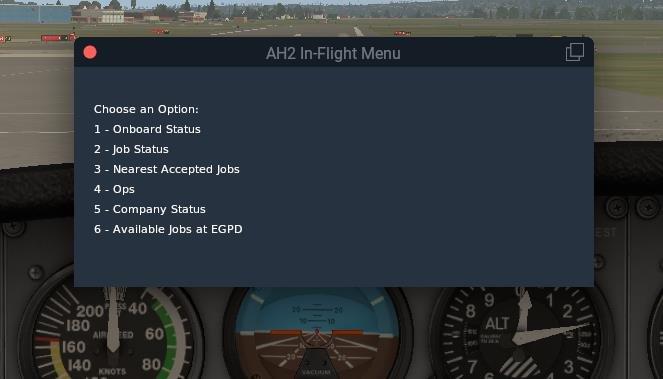


.jpg.e2015c25164aea2c0de4eab0347decda.jpg)





























.thumb.jpg.c3475c0efe037a49ca03b344657b0b07.jpg)
.thumb.jpg.6b974cce4415ebfbbfa3de86acec22b3.jpg)
.thumb.jpg.4930d4e8c3fe7f7bda25a9730b0c1138.jpg)
.thumb.jpg.704db98e5f383121611f0c8058e5a3b9.jpg)
.thumb.jpg.3ebc45688bc038226064d094c7d3583e.jpg)
.thumb.jpg.91a73e8e6a1834176e9df83421d23672.jpg)
.thumb.jpg.ba13824f82351402e52e839ce7473459.jpg)


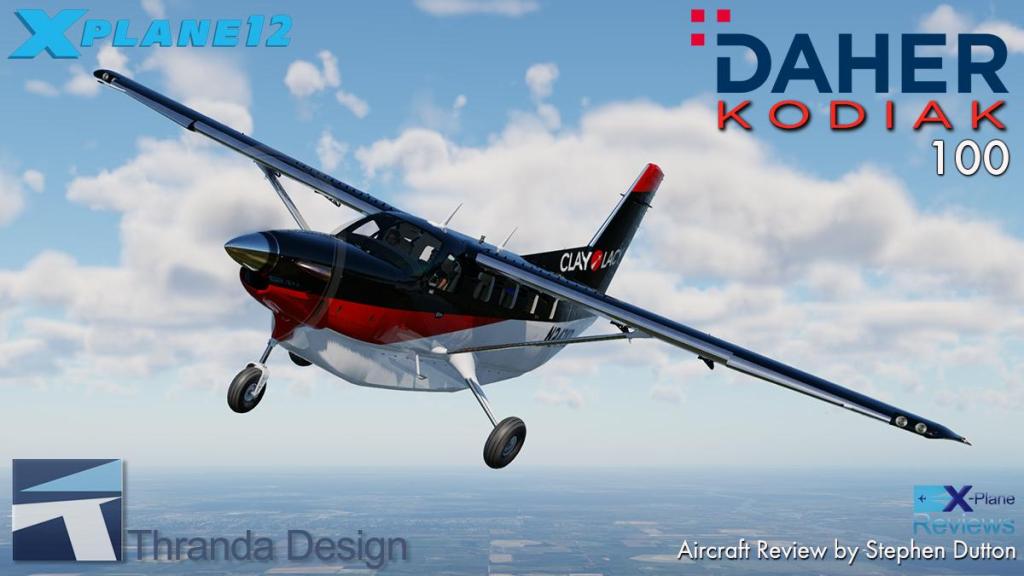
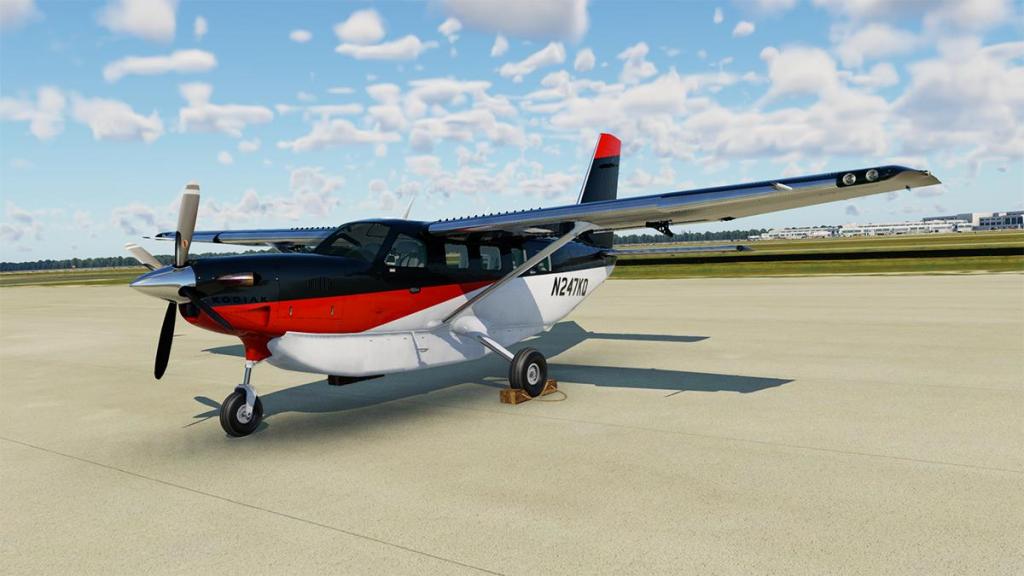

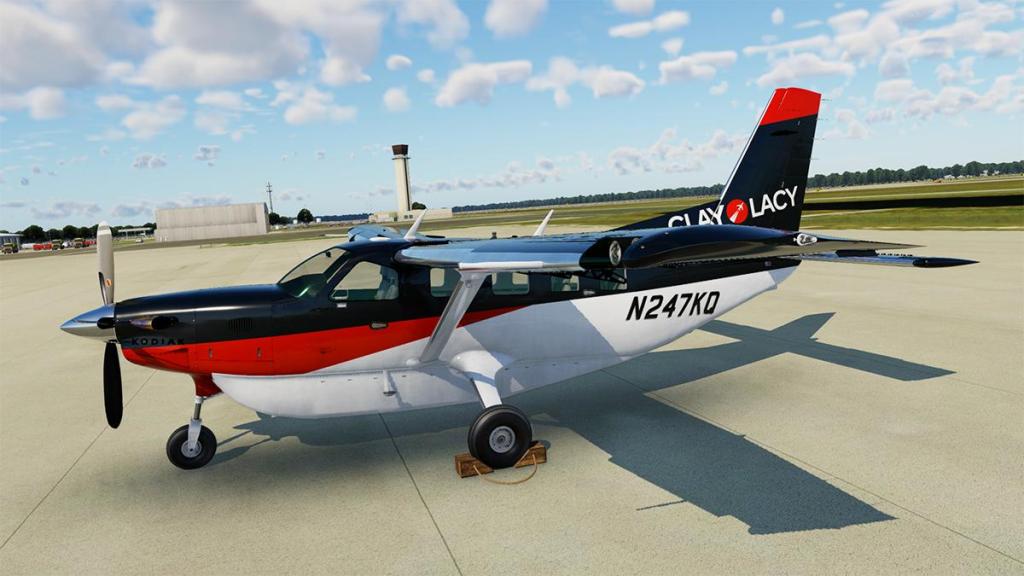



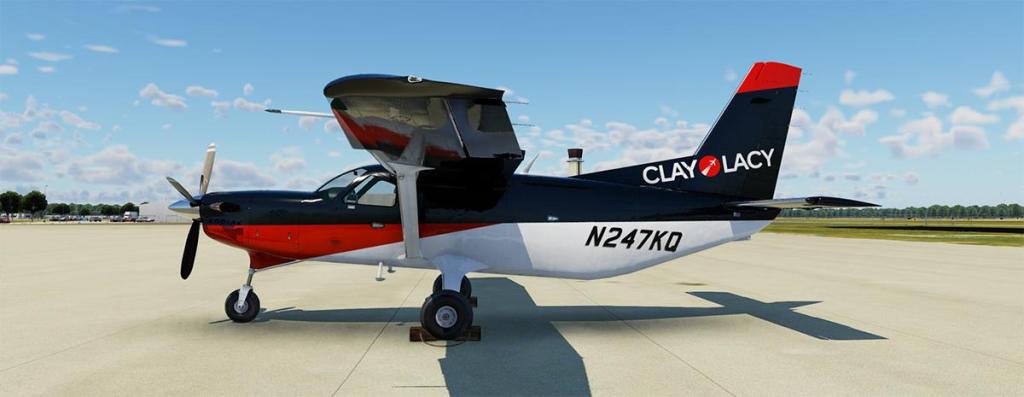








































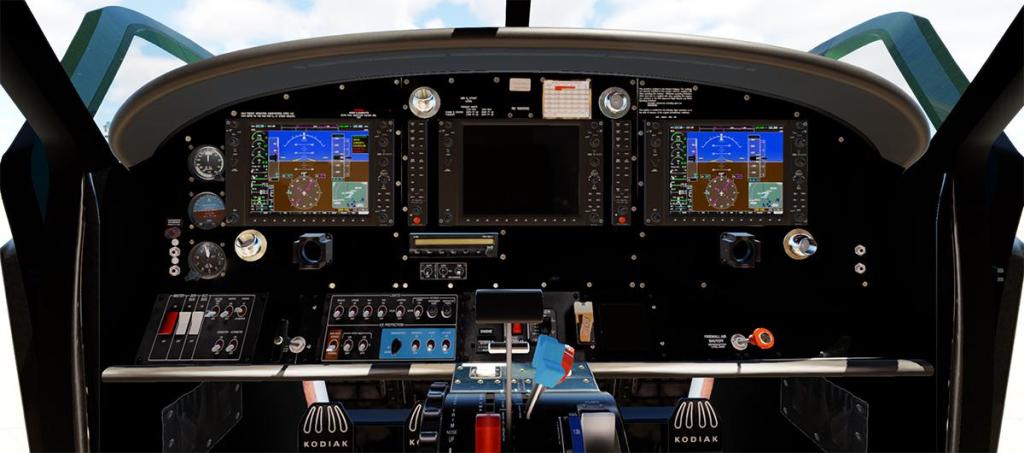




























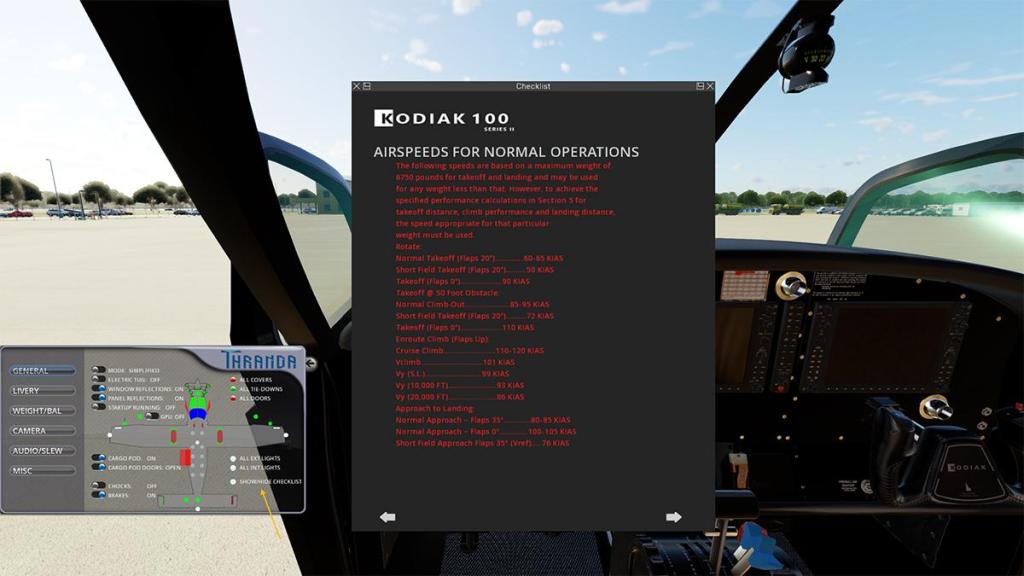















































































































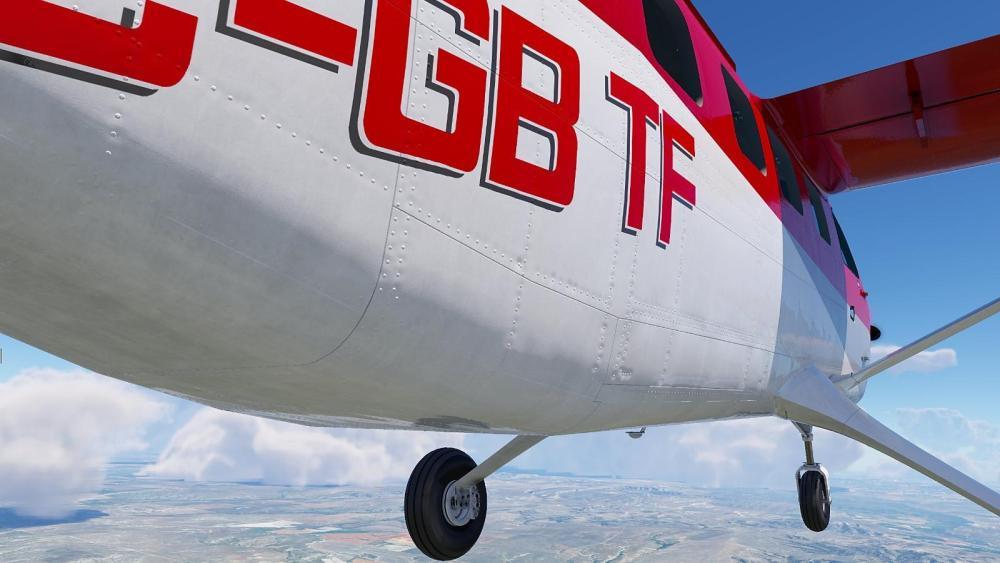
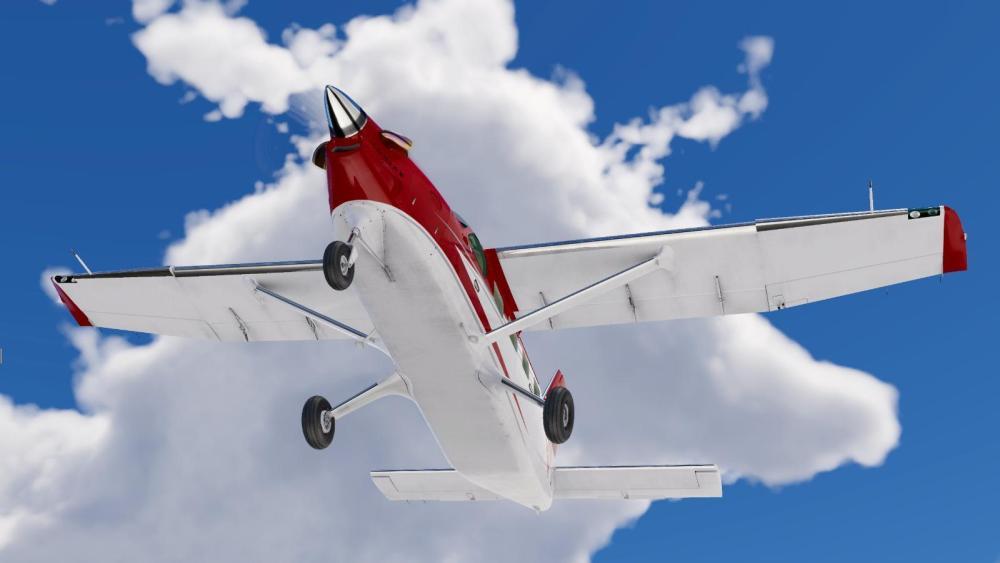
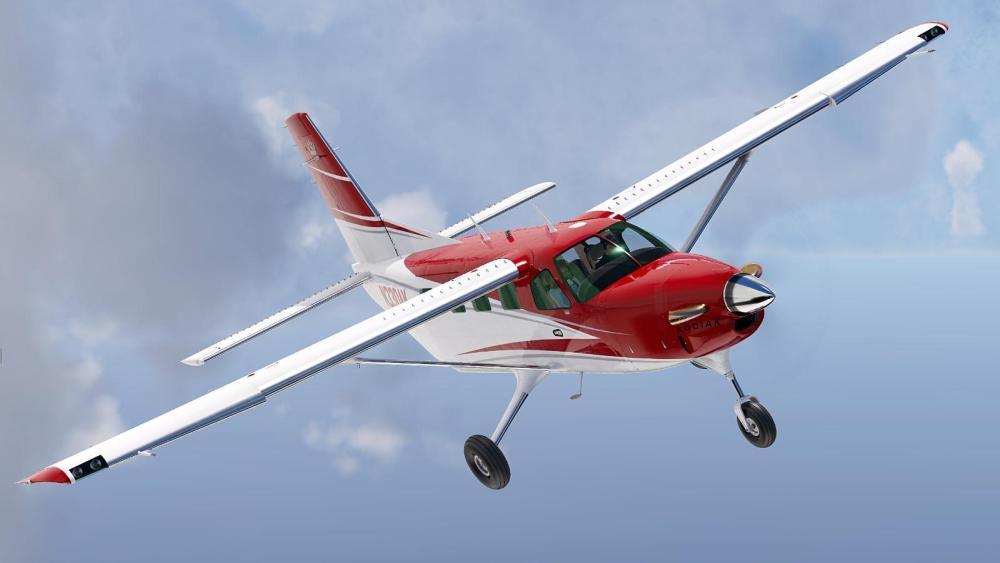



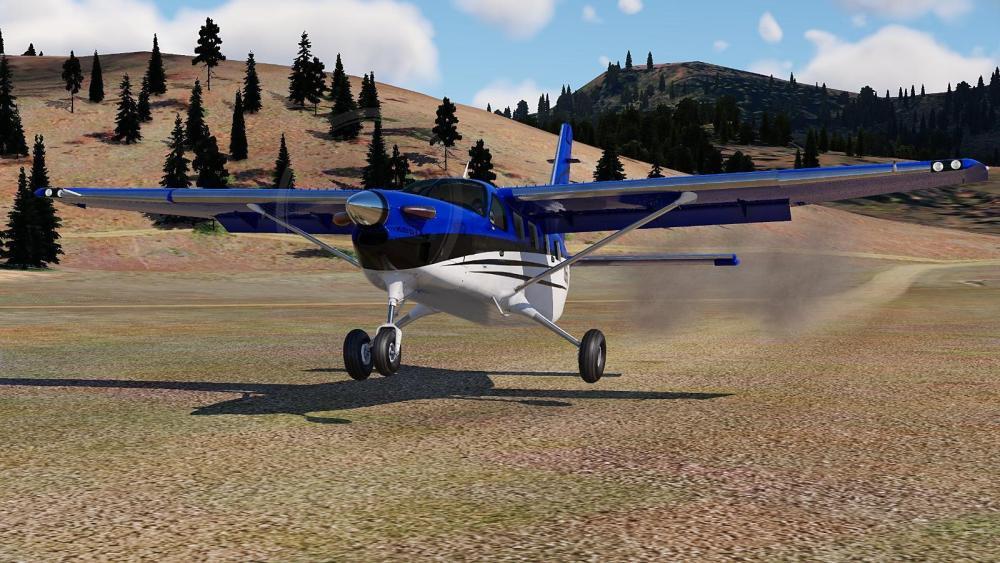
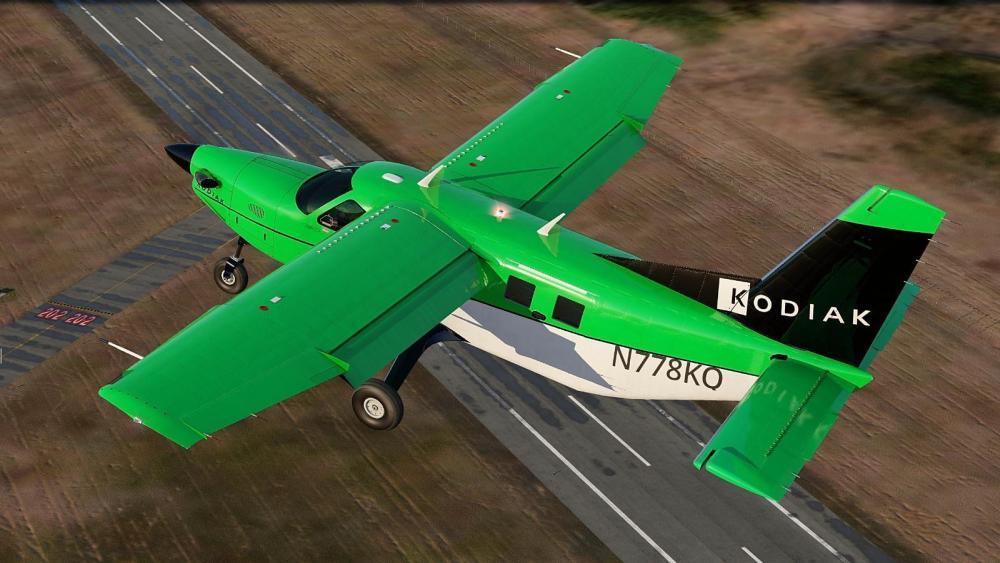

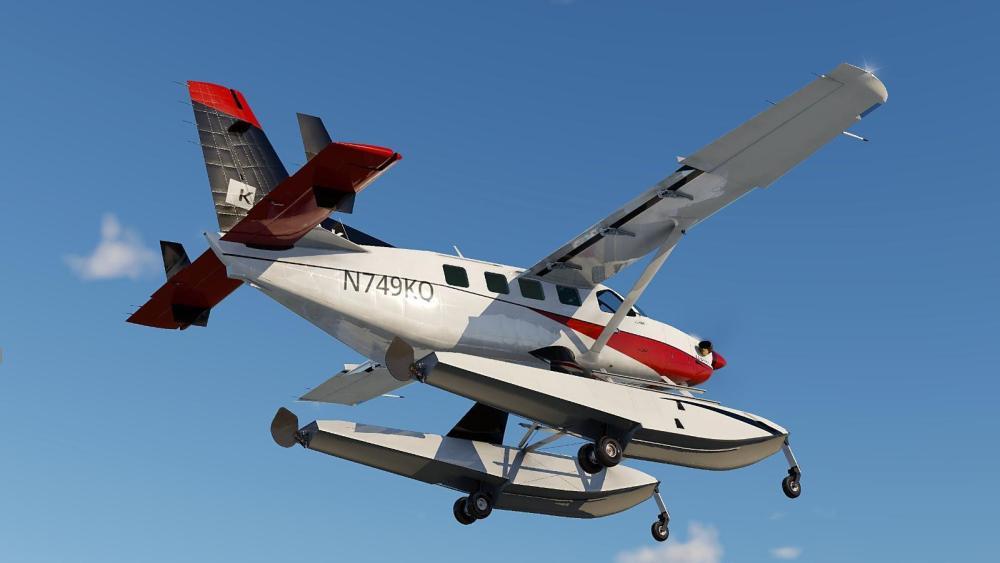
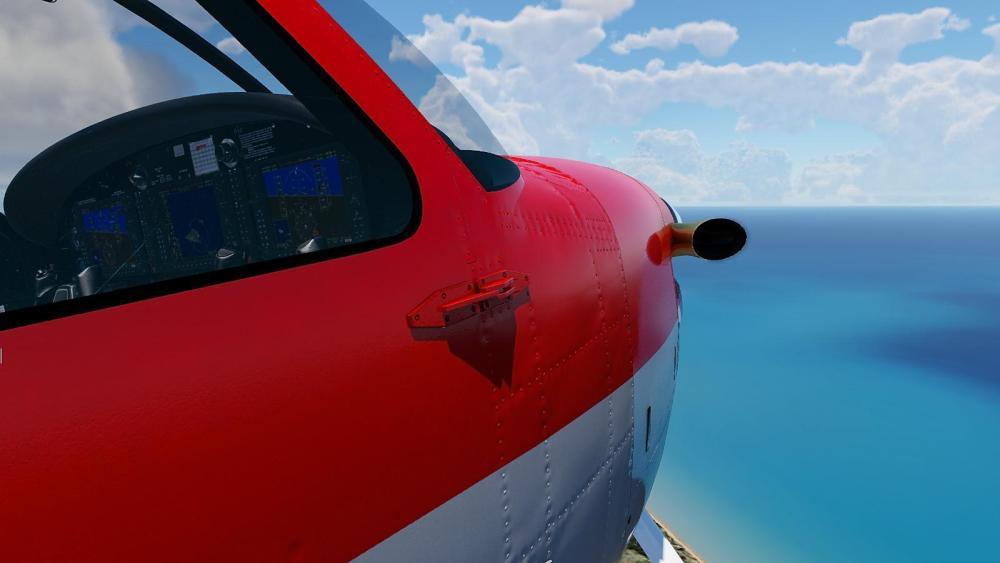

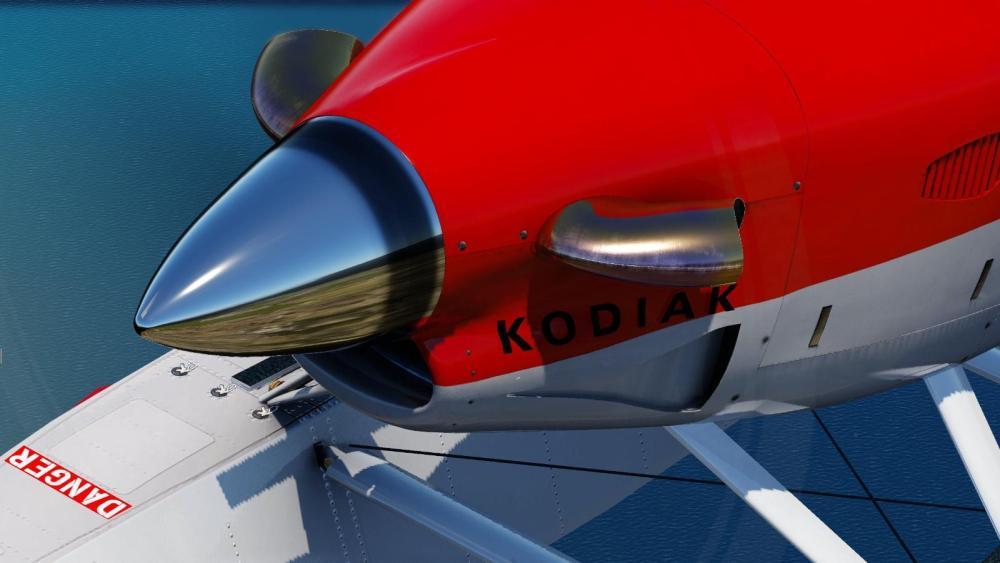
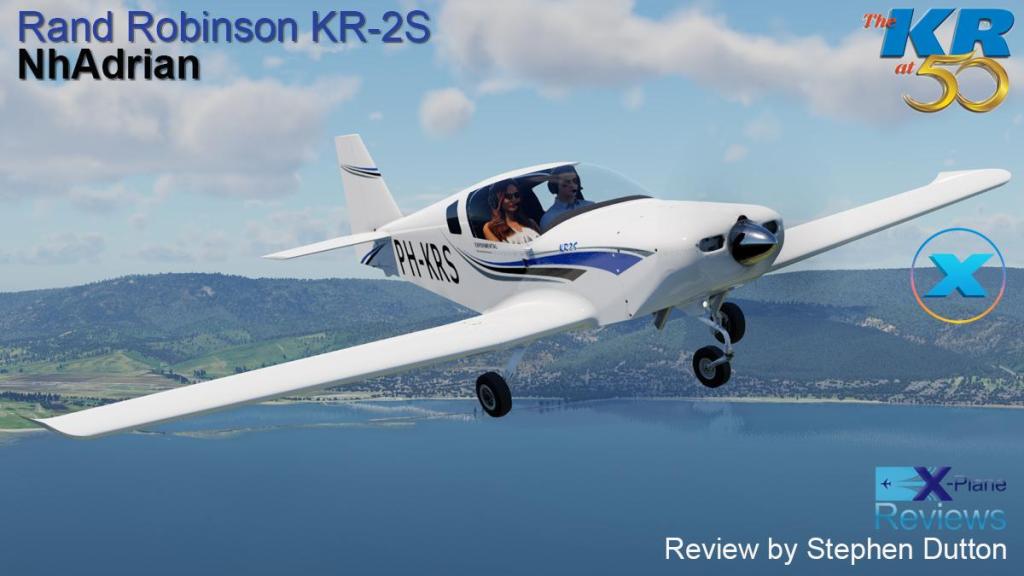





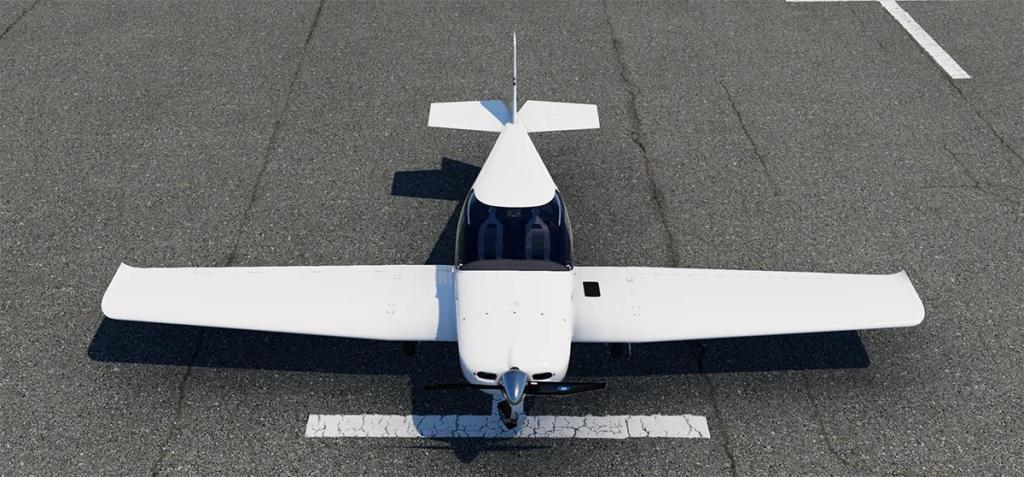






























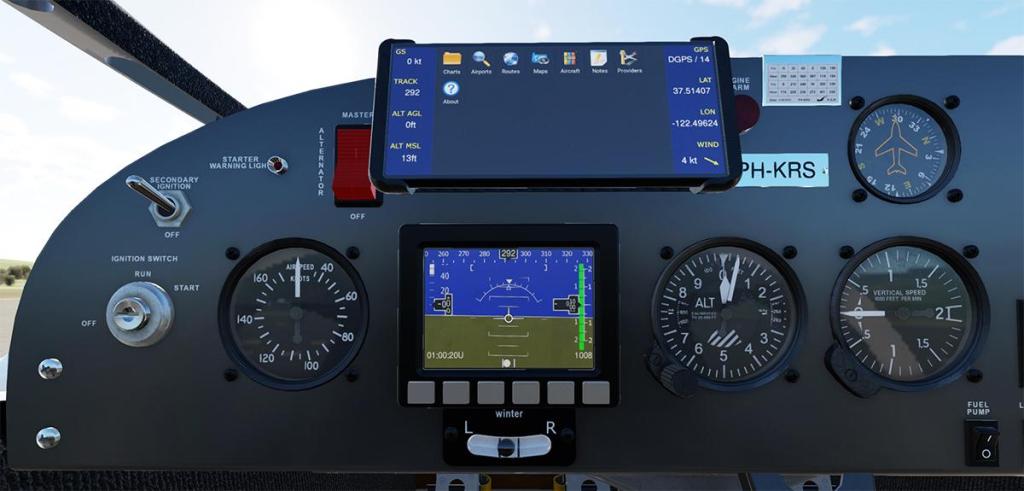

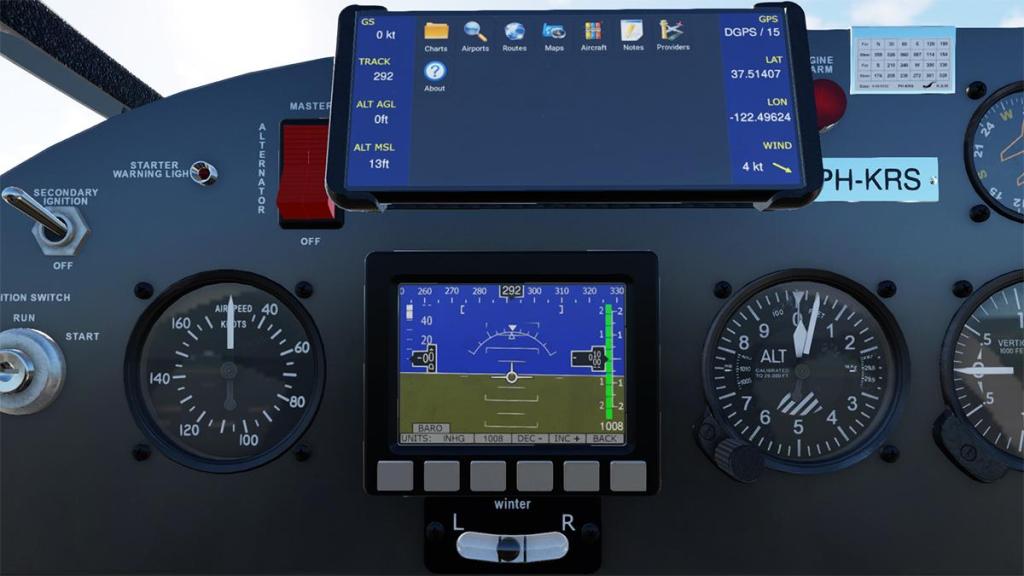




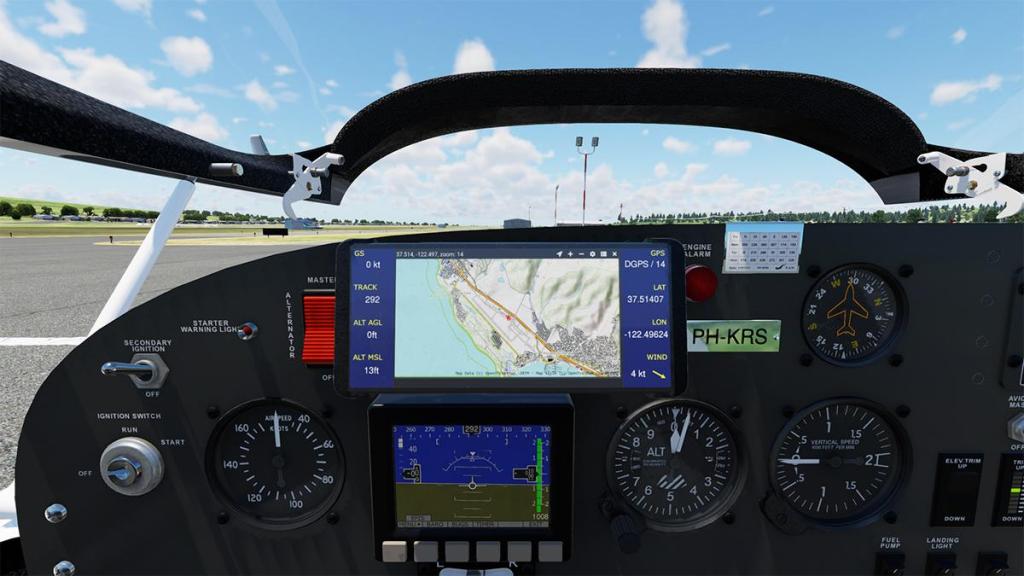















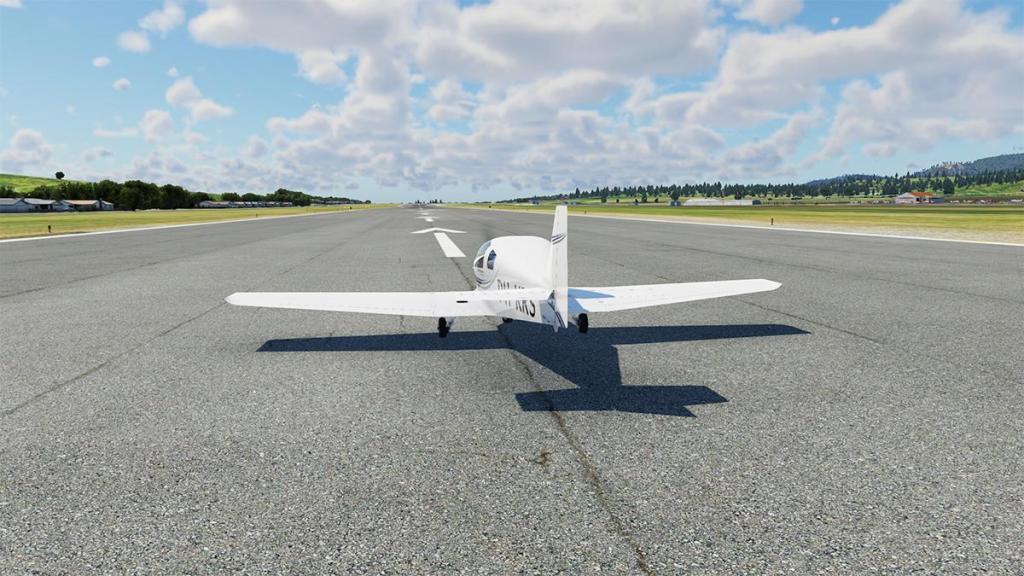
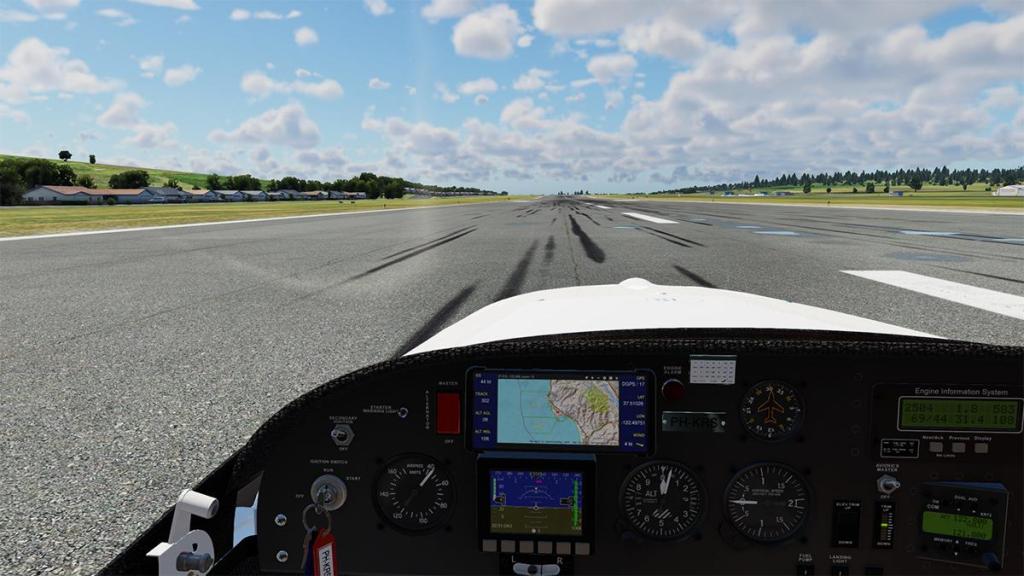

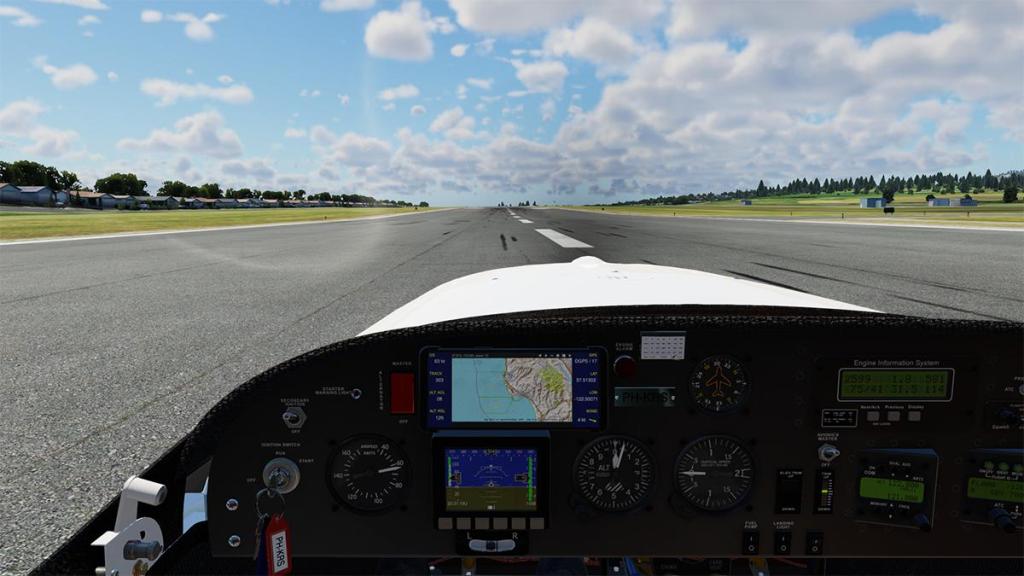














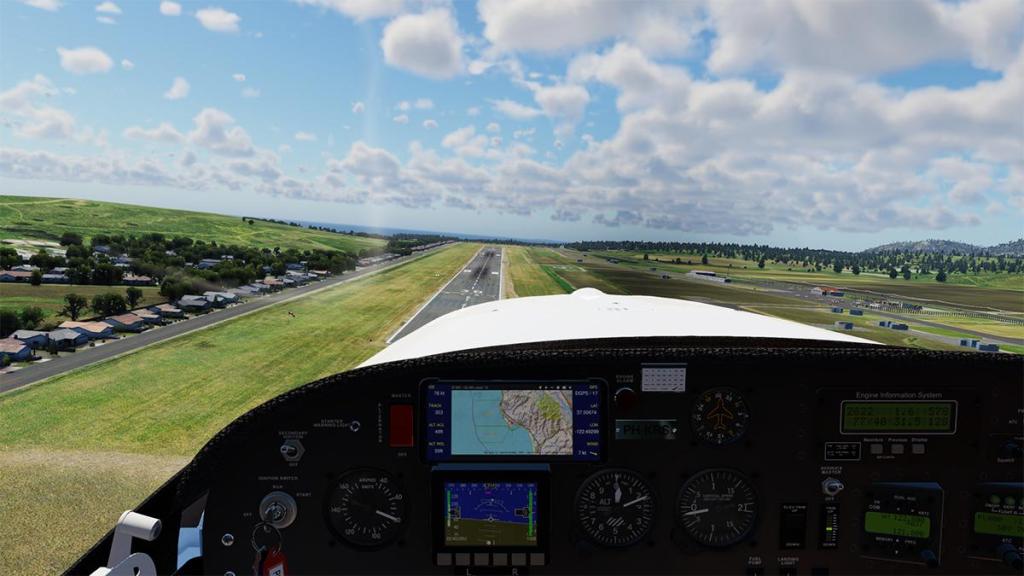
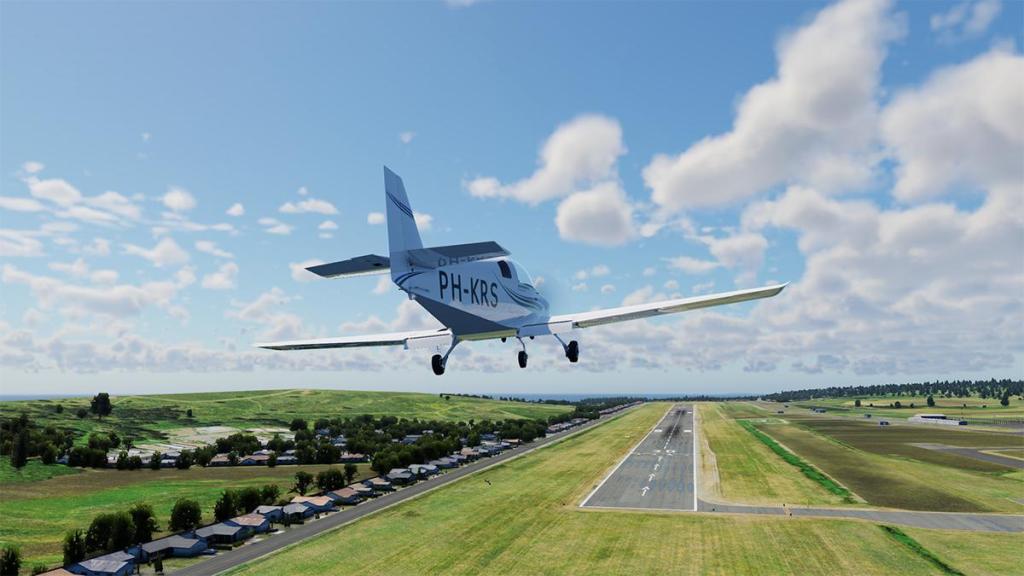

















































.thumb.jpg.d6a5b7f3a43a13bd4878238d34d45d44.jpg)
.thumb.jpg.369e06e3bb8168bd229cf4eed31491cf.jpg)
.thumb.jpg.ce32e3a3dd4fe035b81176b26a9fc506.jpg)
.thumb.jpg.88e9cd75cfa0078ef896a8c856ffcd4f.jpg)
.thumb.jpg.66448120ce929cae782f04258a3ab9d1.jpg)
.thumb.jpg.0c27efb7132fabf9c9638c26bdea8be7.jpg)
.thumb.jpg.b2d83b2cf0a9b40f1d5edf6736e78e74.jpg)
.thumb.jpg.d5dfdf3ee5d9d9d964445b189fe16573.jpg)
.thumb.jpg.dccfbd9b00fb5d528926ff883d199816.jpg)
.thumb.jpg.f02c2ebeb3ee803639ab5739285ddd55.jpg)
.thumb.jpg.7e0f966edcb9939930ea6765aa686fa2.jpg)












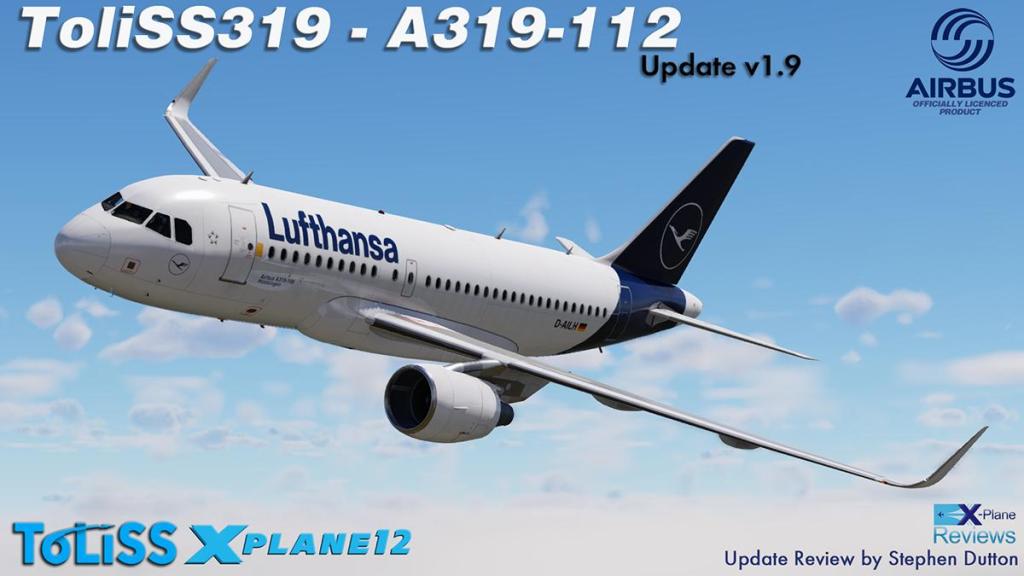

















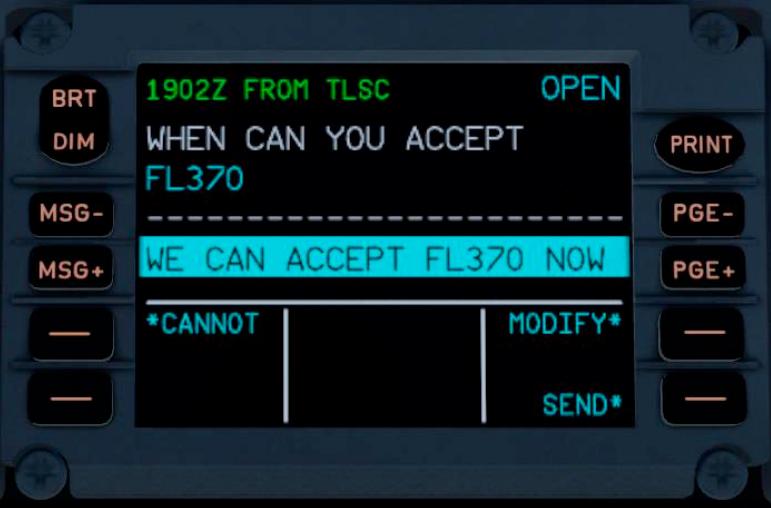
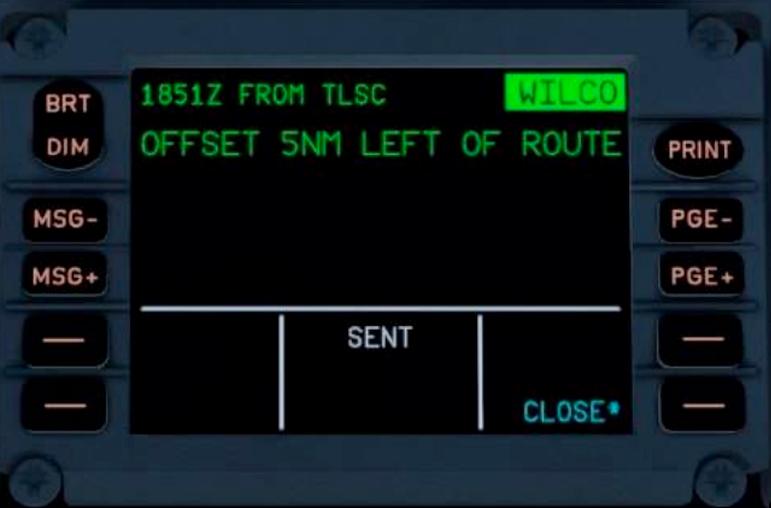




































































































































































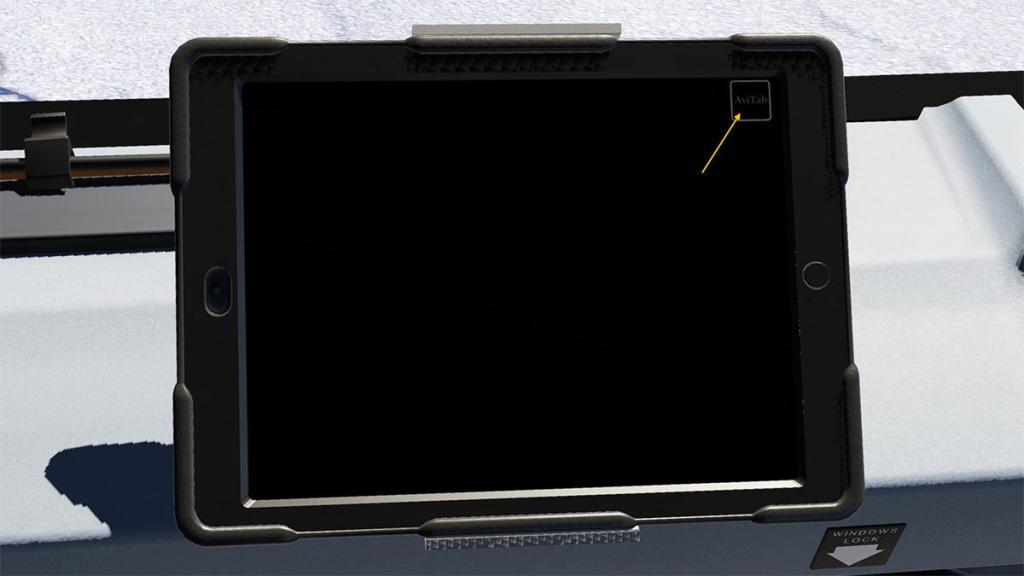









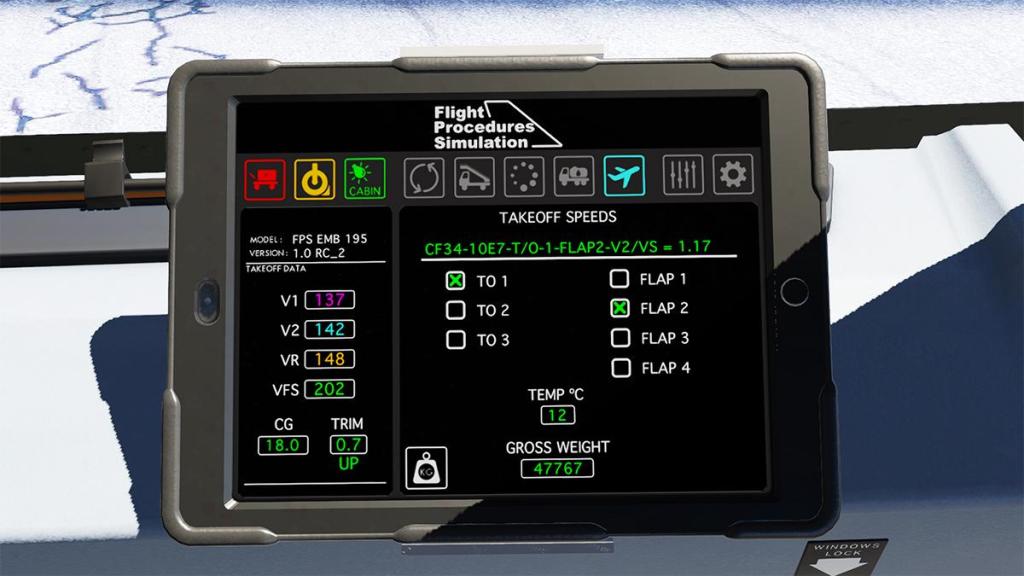

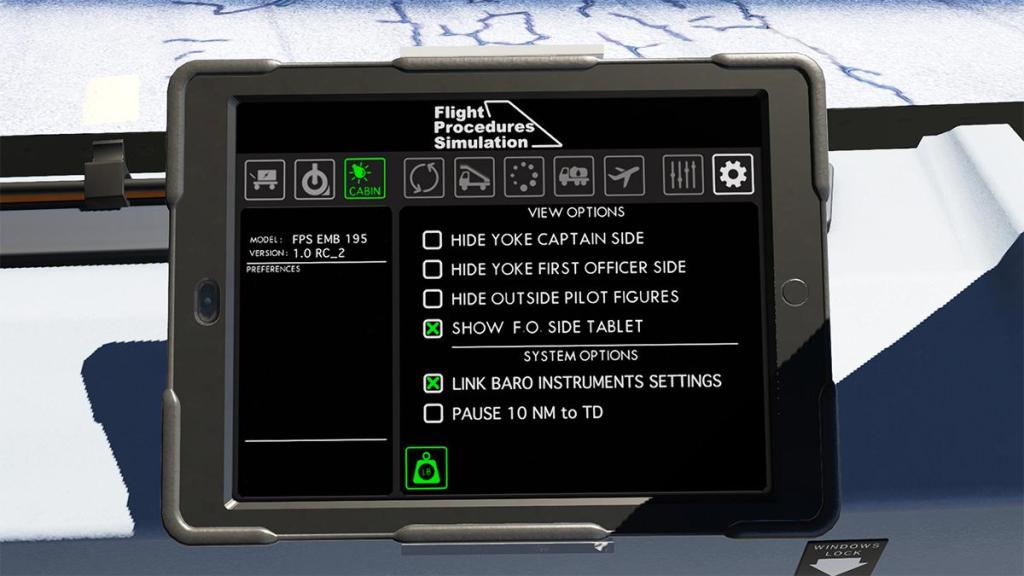





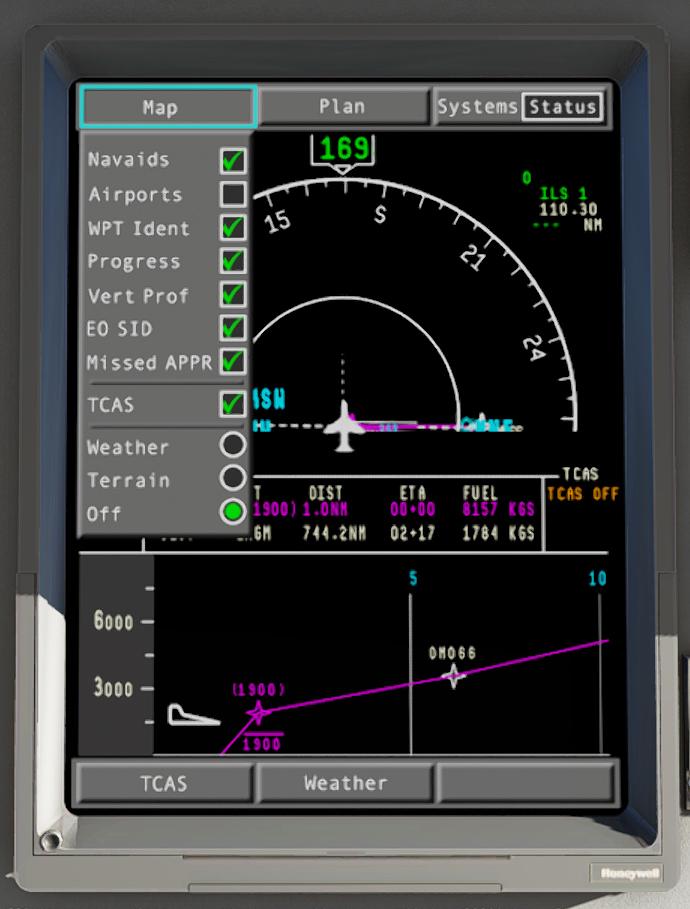
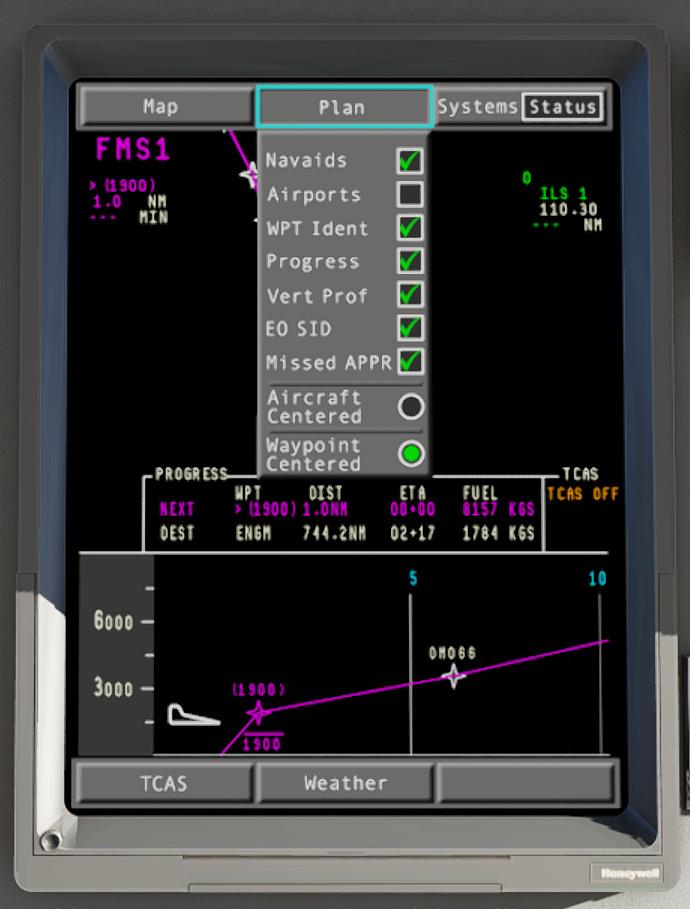
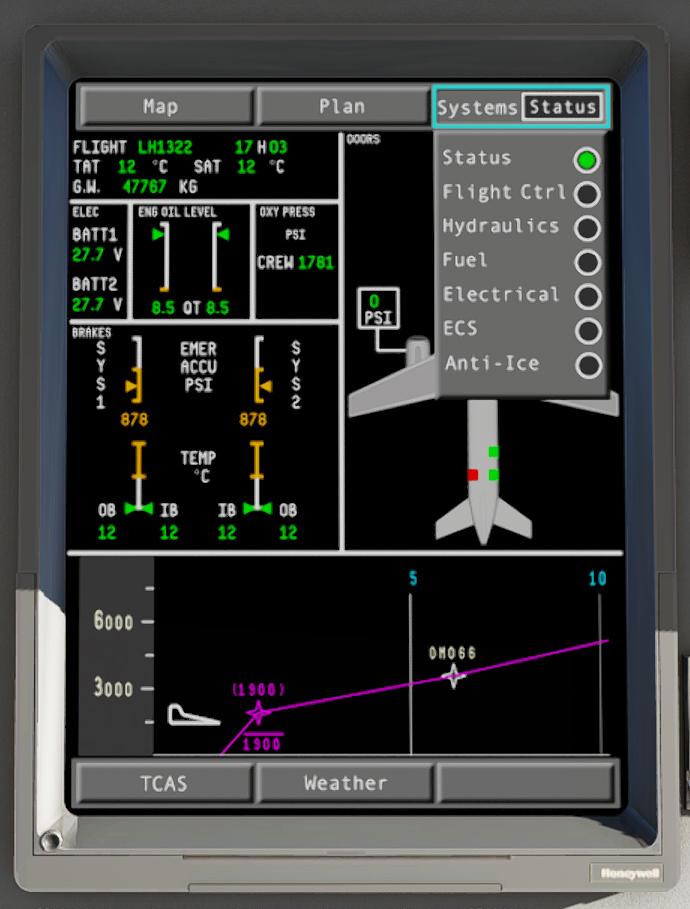
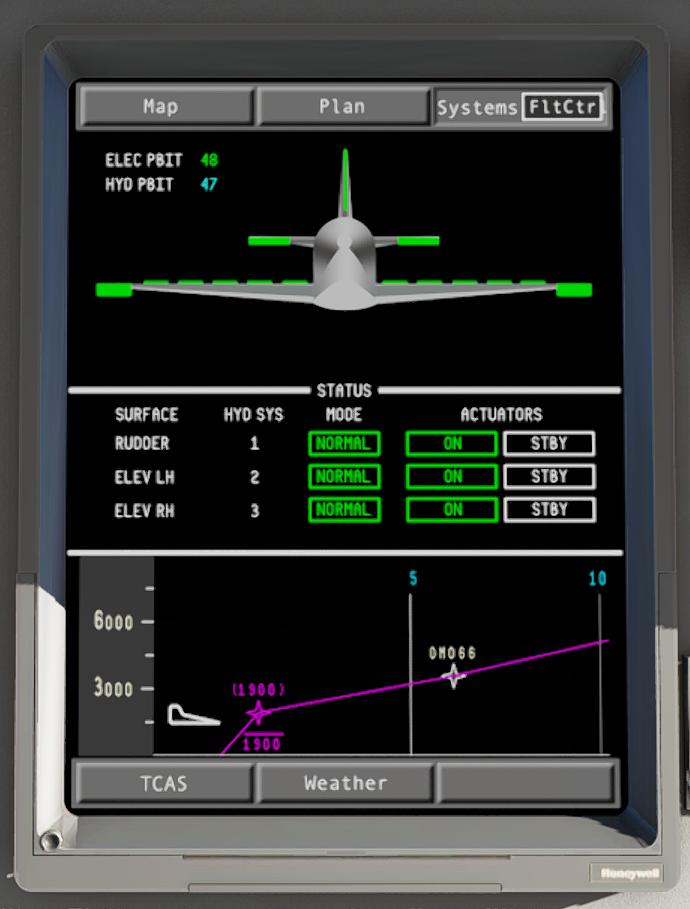
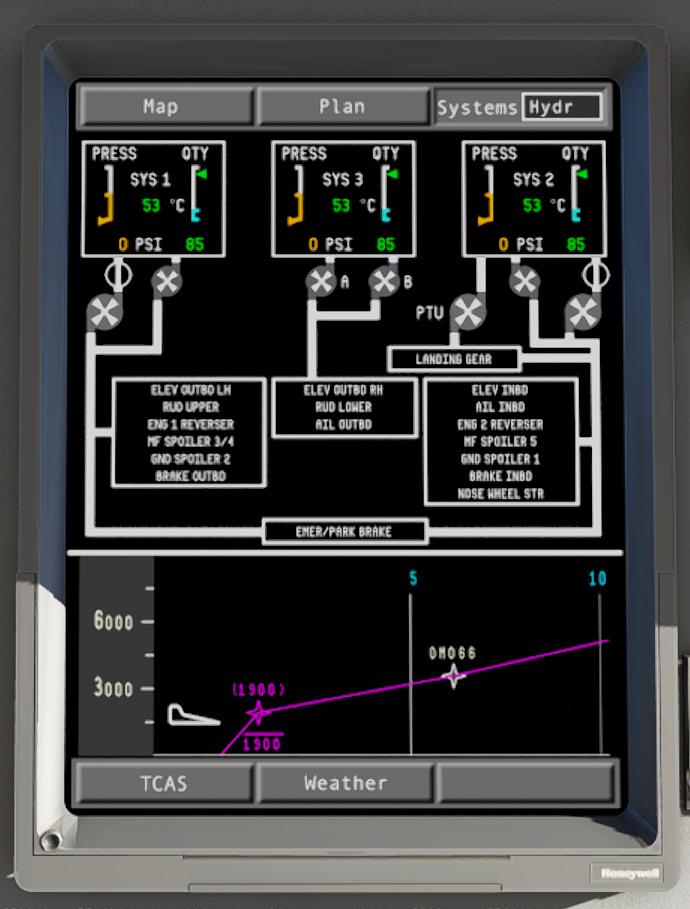
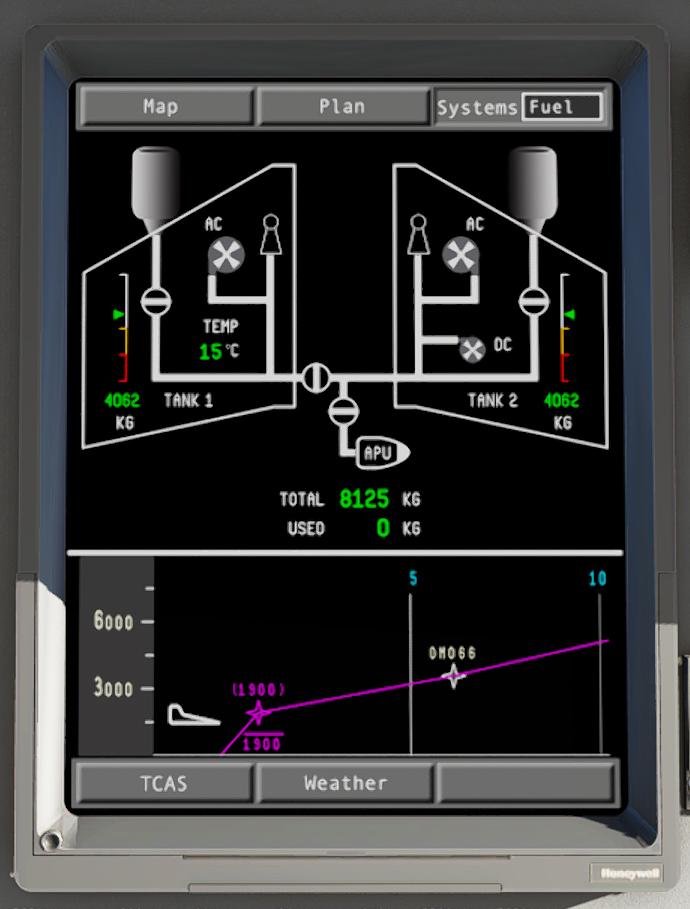
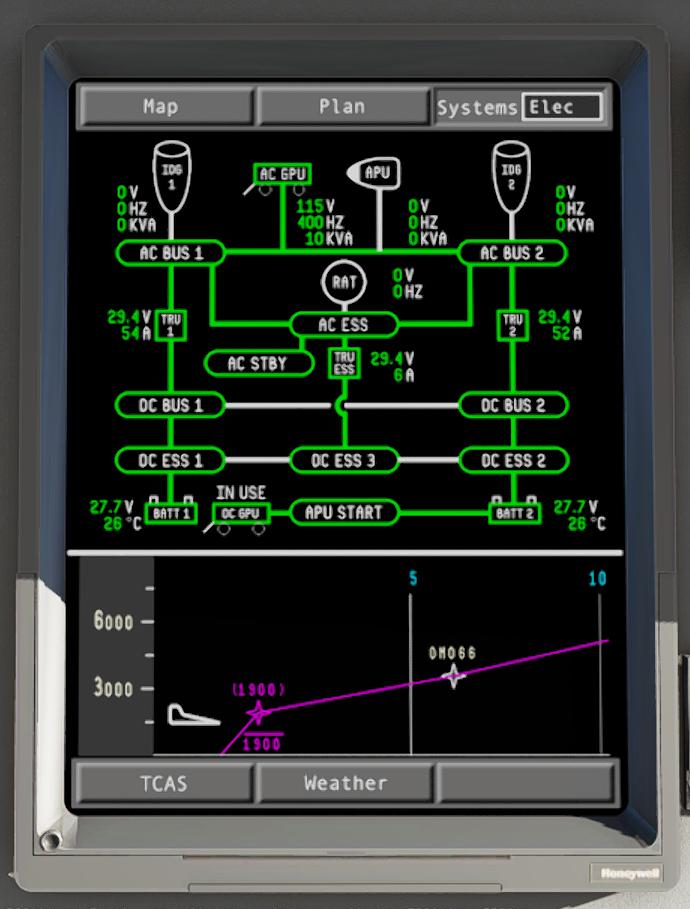
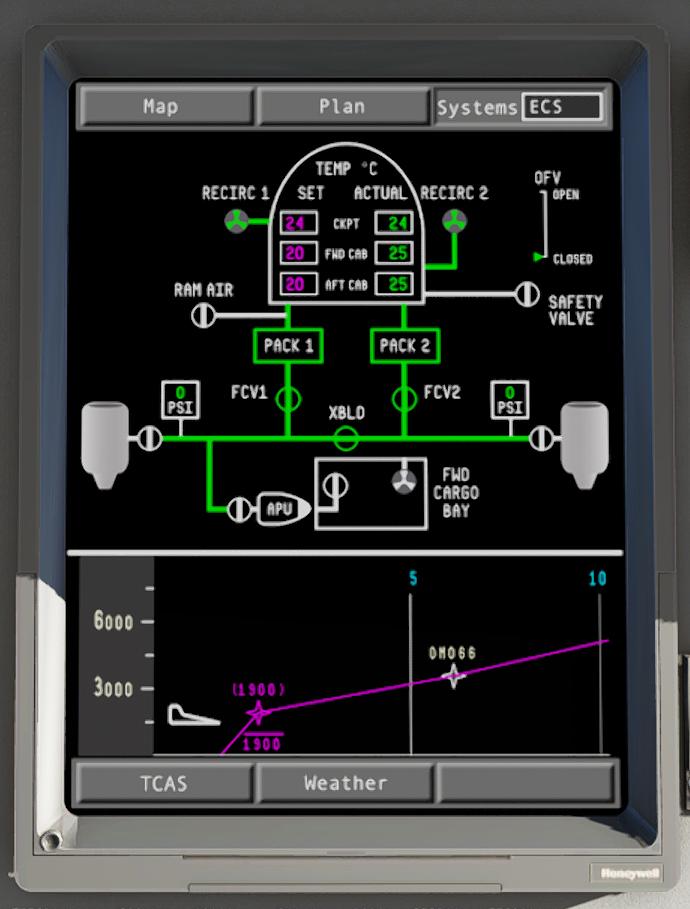
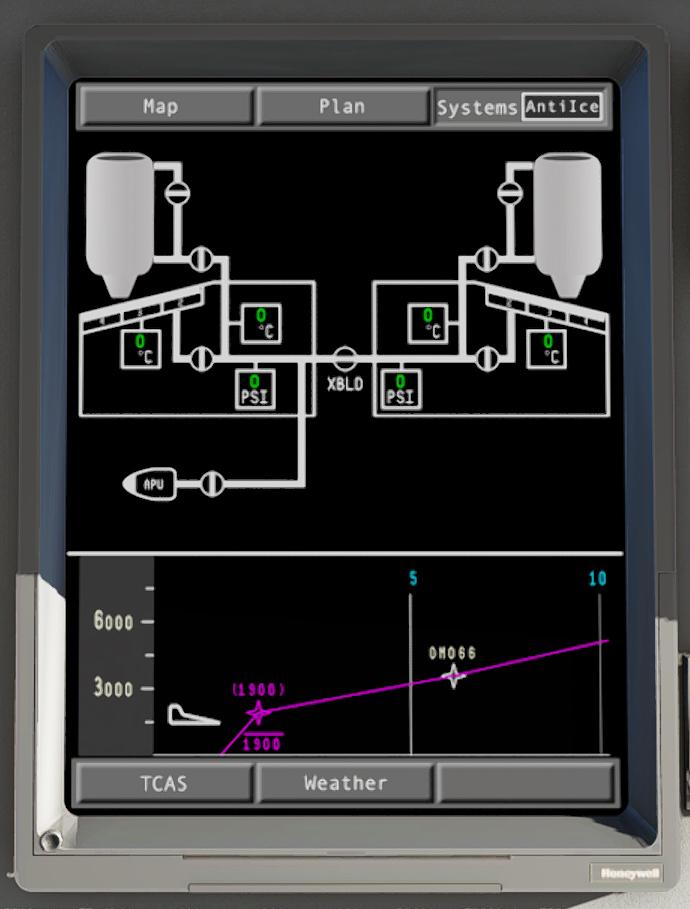
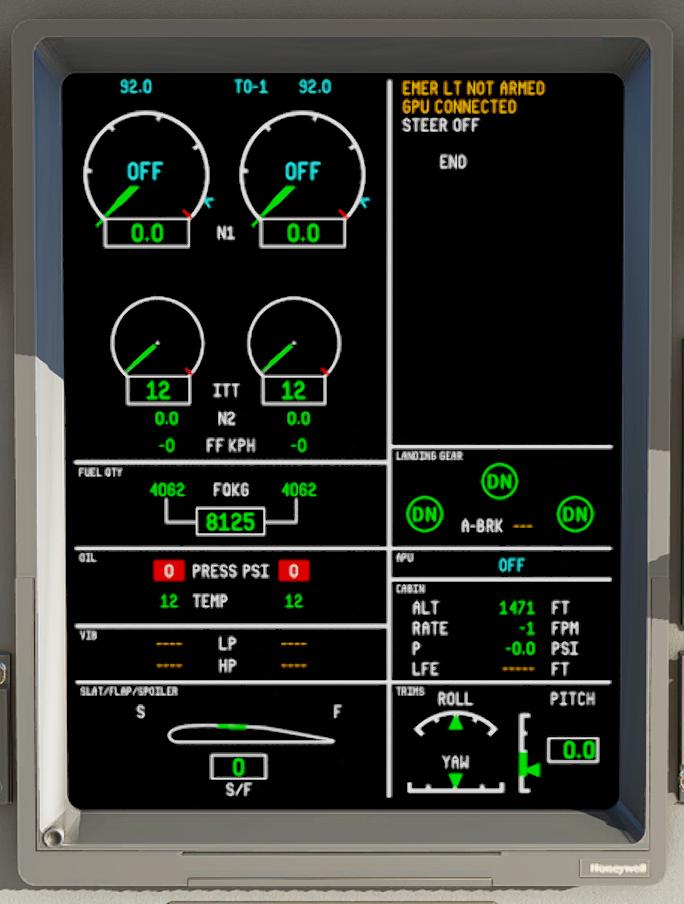
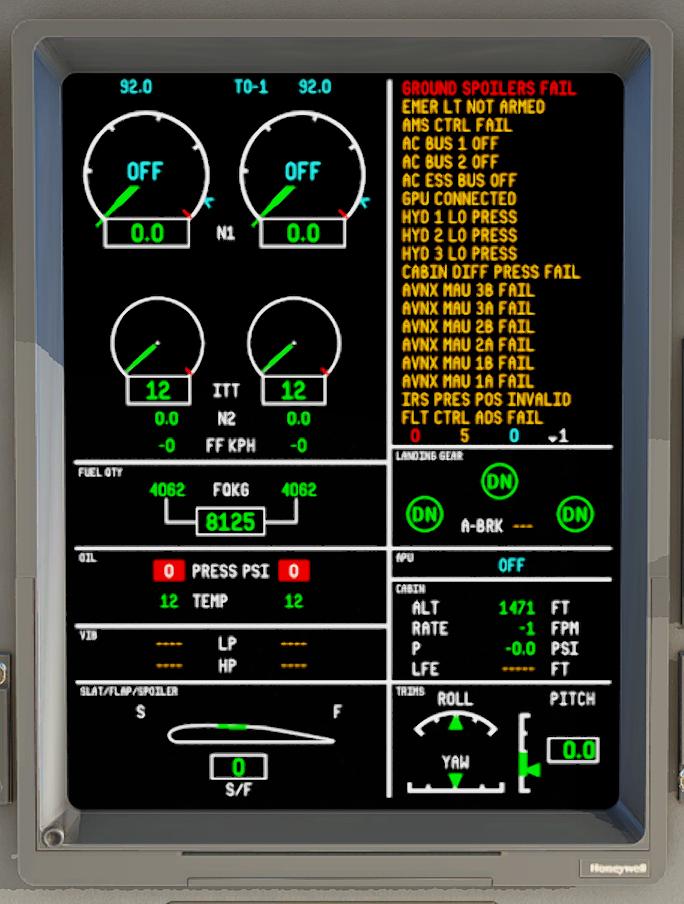






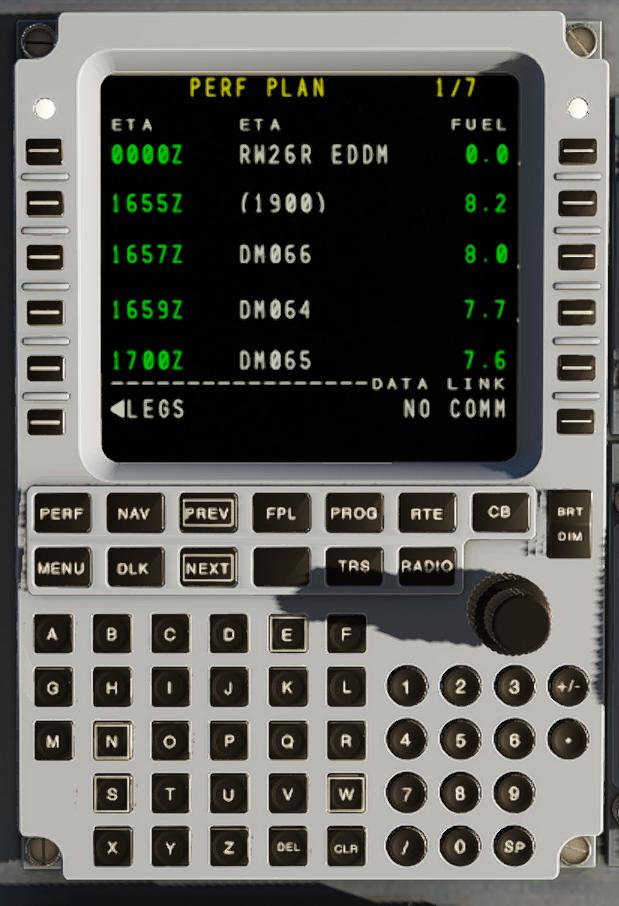
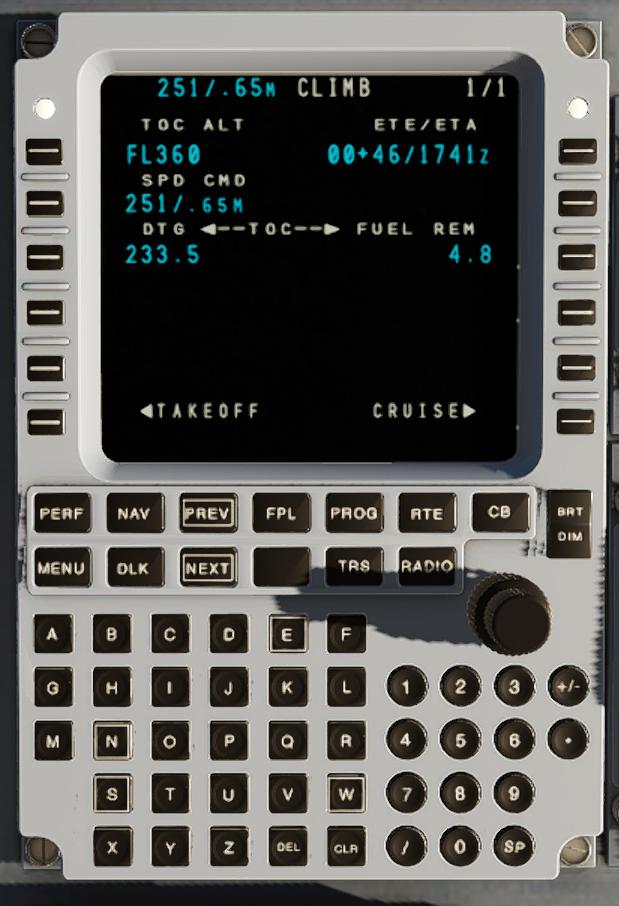
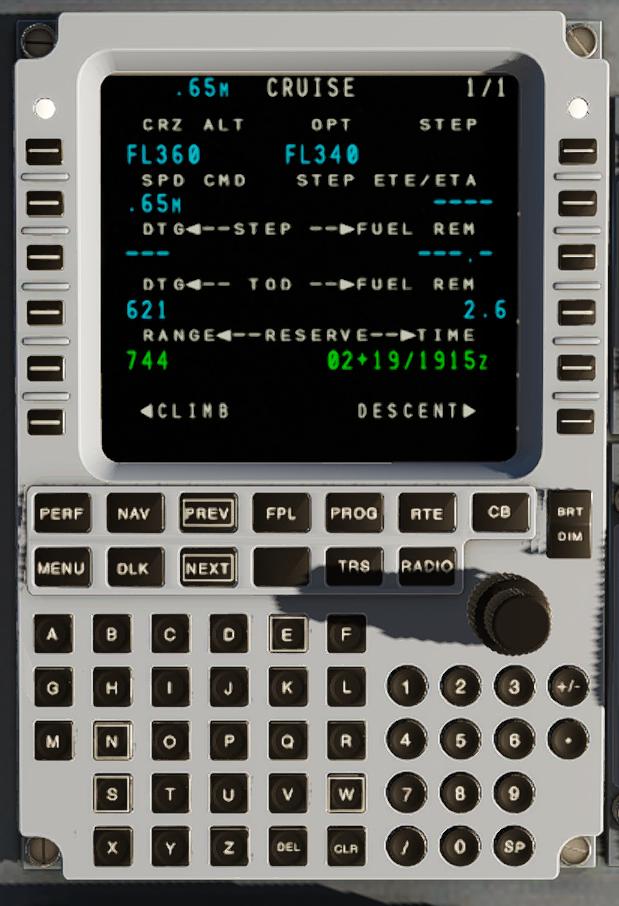
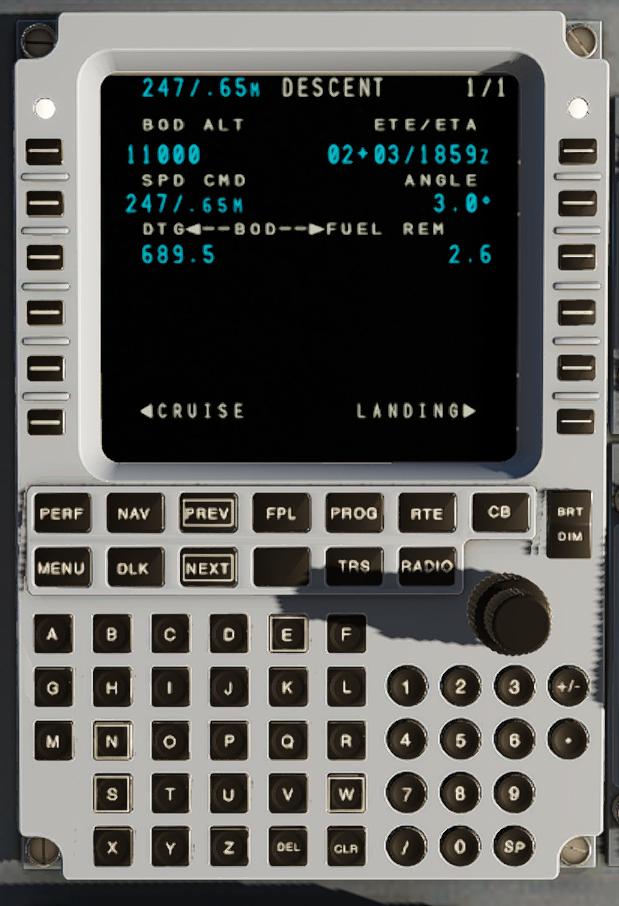
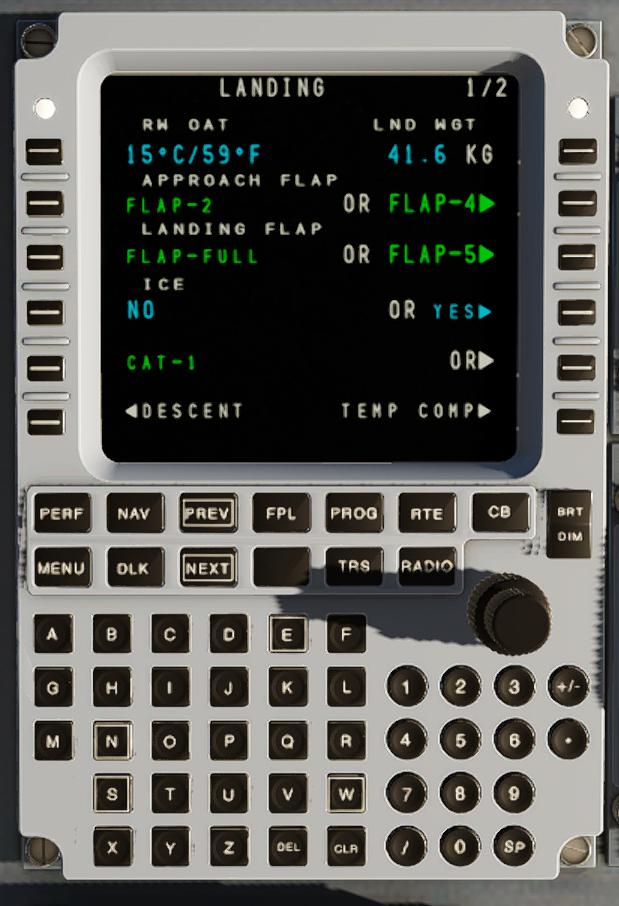
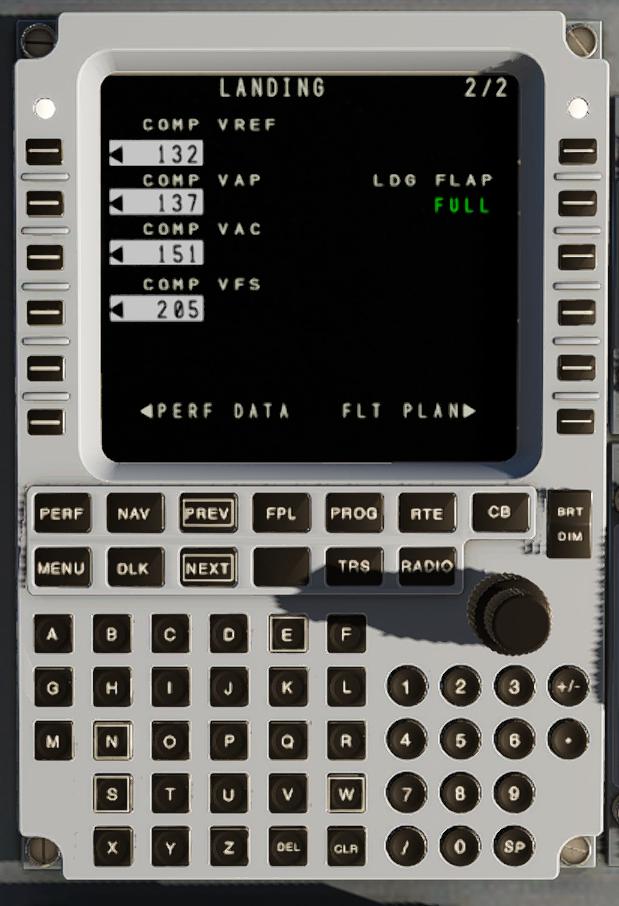
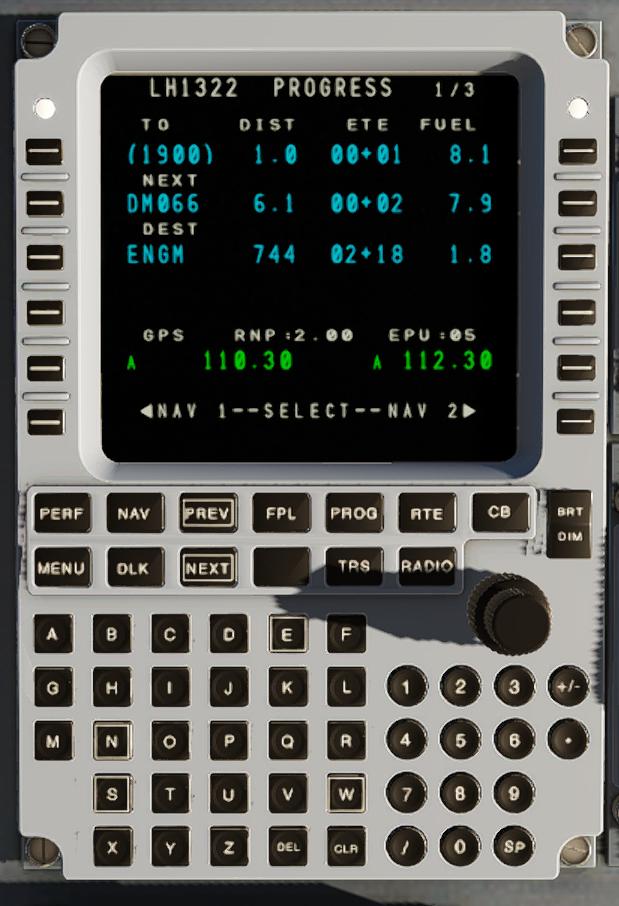


















































































































































































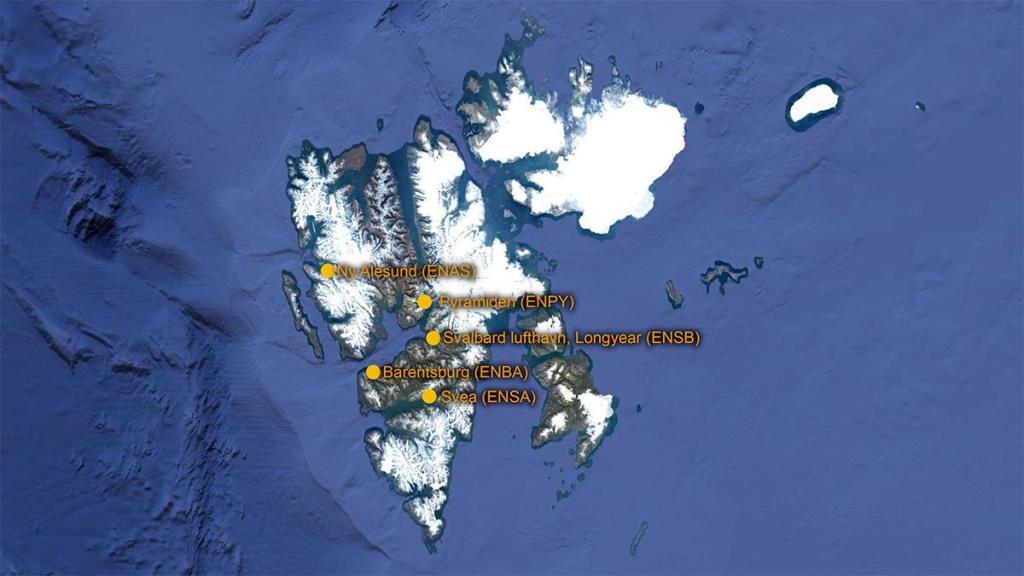



































































































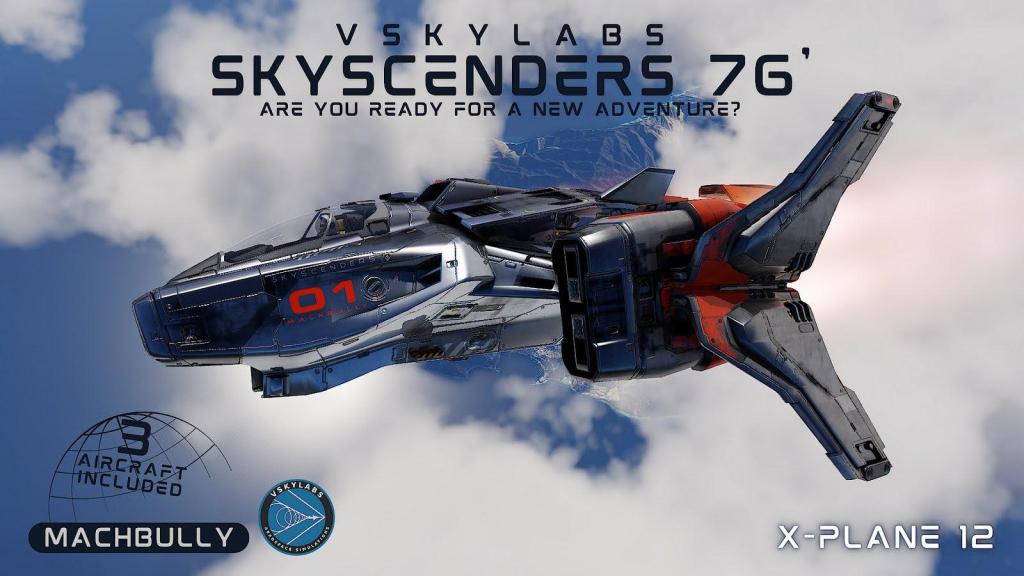



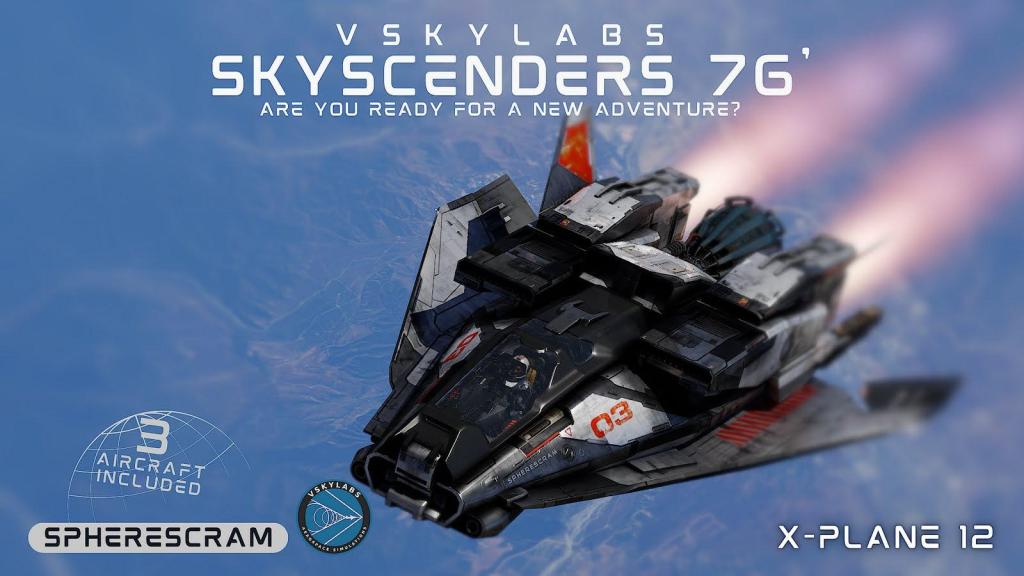


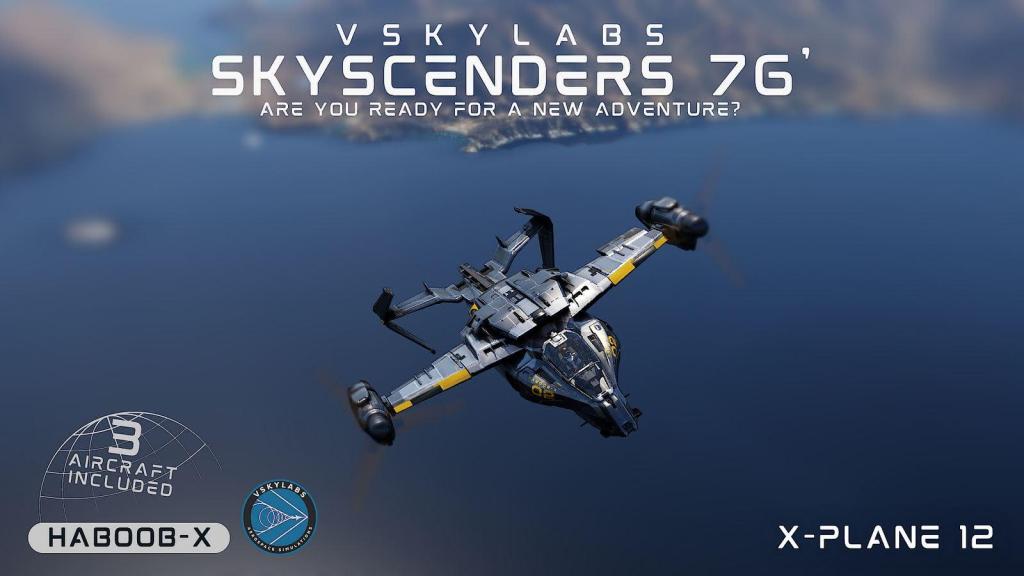






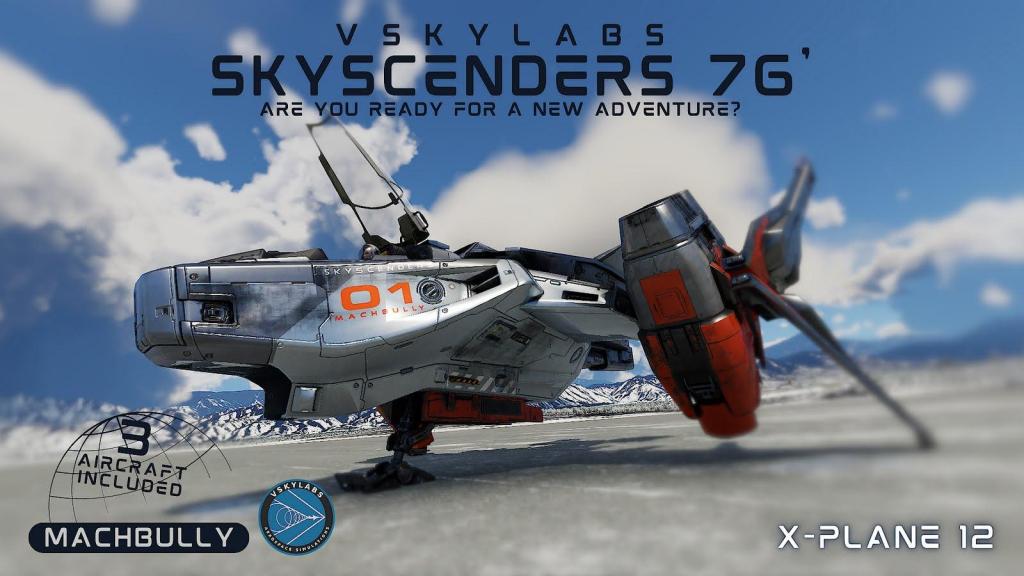




























NEWS! - Magknight Boeing 787 Aviators Edition to X-Plane 12
in News! The latest developments in X-Plane
Posted
NEWS! - Magknight Boeing 787 Aviators Edition to X-Plane 12
Like a lot of developers, Magknight initially created a flyable X-Plane 12 version (on 31st May) of the Dreamliner, but overall it was a very basic conversion. Again most developers then followed up with a fully revised X-Plane 12 version 1.10 and that is what we have here from Magknight for their Boeing 787 Dreamliner.
Notes include not only the adjustments to the usual X-Plane 12 features, like dynamics, lighting and weather rain effects. But also attention to bugs that have plagued the aircraft for awhile... like the consistent throttle spoiling, VNAV autopilot issues, autopilot not predicting waypoints and so on... also there has been improvements to the wingflex, landing gear and finally better improved GE engines. The full changelog list is below.
Version 12 (May 31st 2023)
The Boeing 787 Dreamliner is an American wide-body jet airliner developed and manufactured by Boeing Commercial Airplanes. After dropping its unconventional Sonic Cruiser project, Boeing announced the conventional 7E7 on January 29, 2003, which focused largely on efficiency. The program was launched on April 26, 2004, with an order for 50 aircraft from All Nippon Airways (ANA), targeting a 2008 introduction. On July 8, 2007, a prototype 787 was rolled out without major operating systems, and then the aircraft experienced multiple delays until its maiden flight on December 15, 2009. Type certification was received in August 2011 and the first 787-8 was delivered in September 2011 before entering commercial service on October 26, 2011, with ANA.
At launch, Boeing targeted the 787 with 20% less fuel burn than replaced aircraft like the Boeing 767, carrying 200 to 300 passengers on point-to-point routes up to 8,500 nautical miles [nmi] (15,700 km; 9,800 mi), a shift from hub-and-spoke travel. The twinjet is powered by General Electric GEnx or Rolls-Royce Trent 1000 high-bypass turbofans. It is the first airliner with an airframe primarily made of composite materials and makes extensive use of electrical systems. Externally, it is recognizable by its four-window cockpit, raked wingtips, and noise-reducing chevrons on its engine nacelles. Development and production rely increasingly on subcontractors around the world, with final assembly at Boeing South Carolina in North Charleston, after being assembled in the Boeing Everett Factory in Washington until March 2021.
Currently there is also a 20% sale on this aircraft.
_________________
Yes! the Boeing 787-900 Aviator Edition Dreamliner XP12 by Magknight is available from the X-Plane.Org Store here :
B787-9 Aviator Edition
Price is US$44.95 (You Save:$11.00(20%))
Current purchasers can go to their X-Plane.OrgStore account and download the new X-Plane 12 version 1.10
Requirements
X-Plane 12 or X-Plane 11
Windows, Mac or Linux
4 GB VRAM Minimum - 8 GB+ VRAM recommended
Download Size: 1.2 GB
Current version : XP12: 1.1 (August 5th 2023) XP:11: 1.8
________________
News by Stephen Dutton
9th August 2023
Copyright©2023: X-Plane Reviews